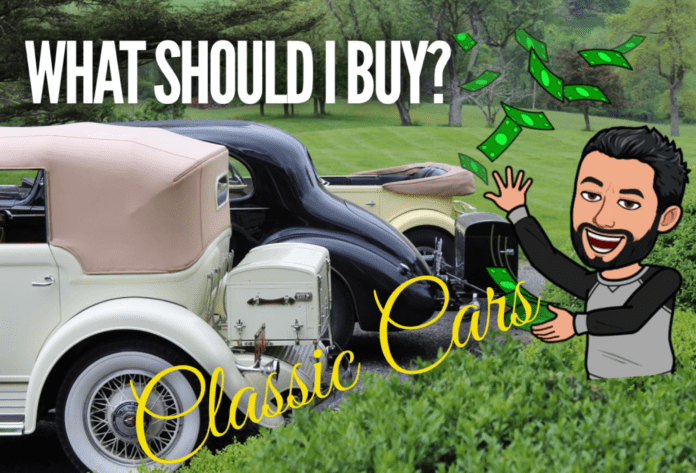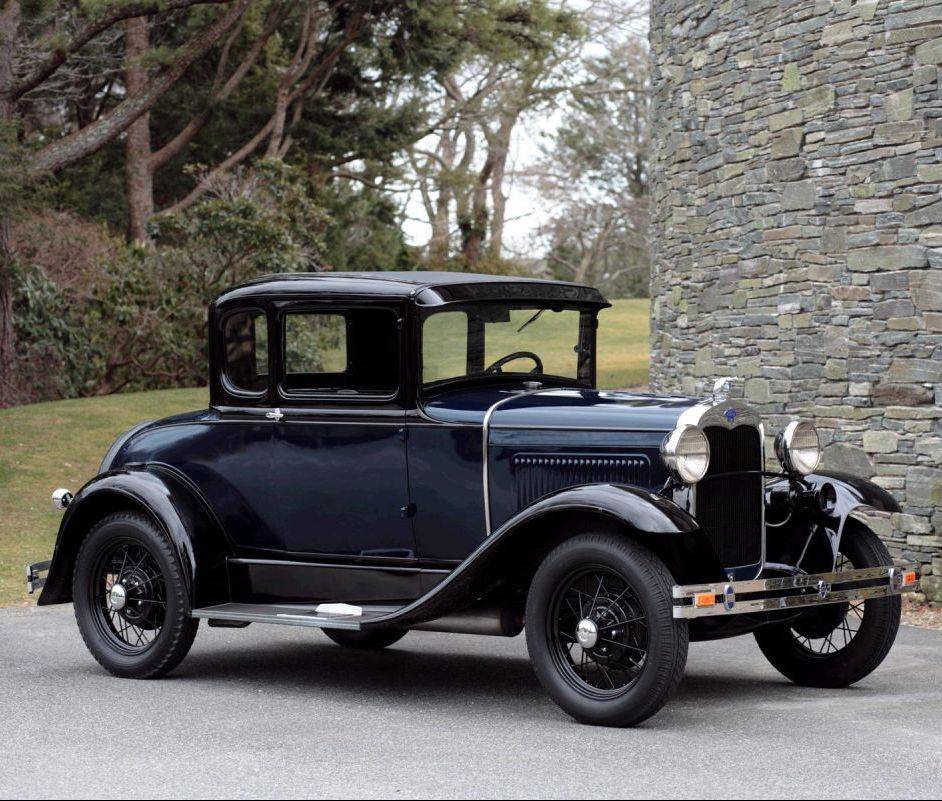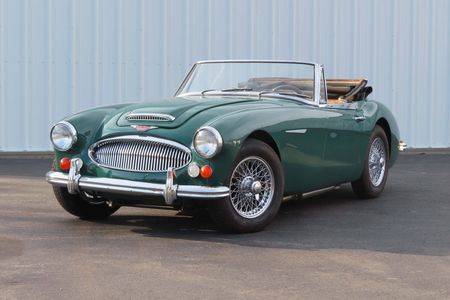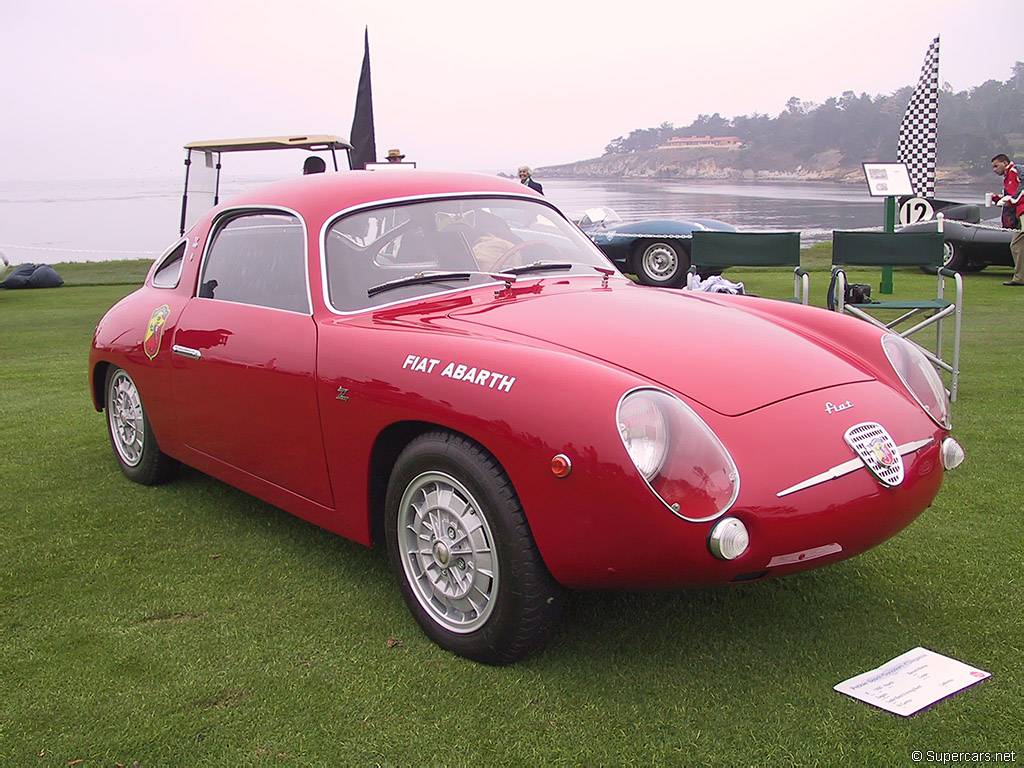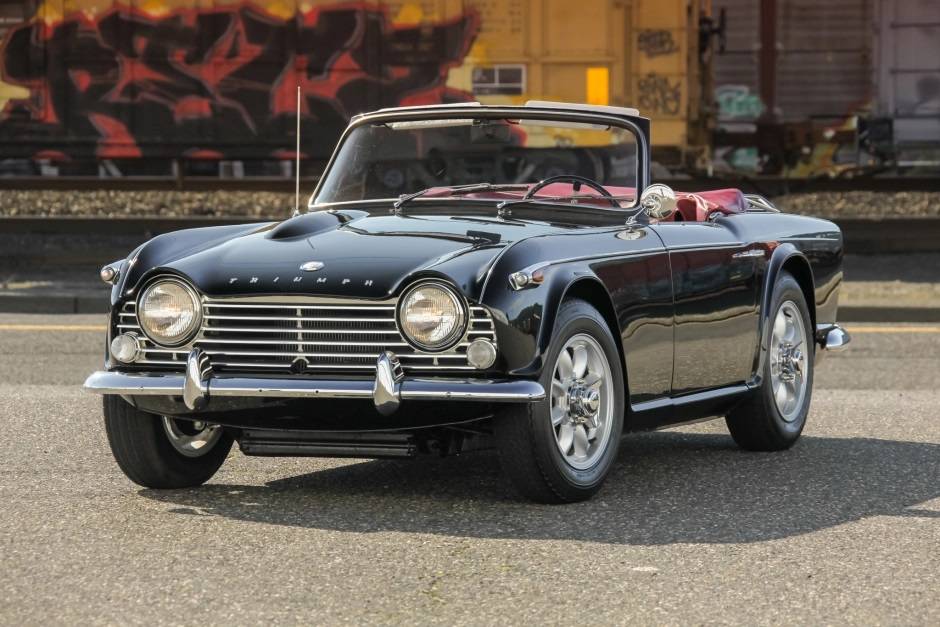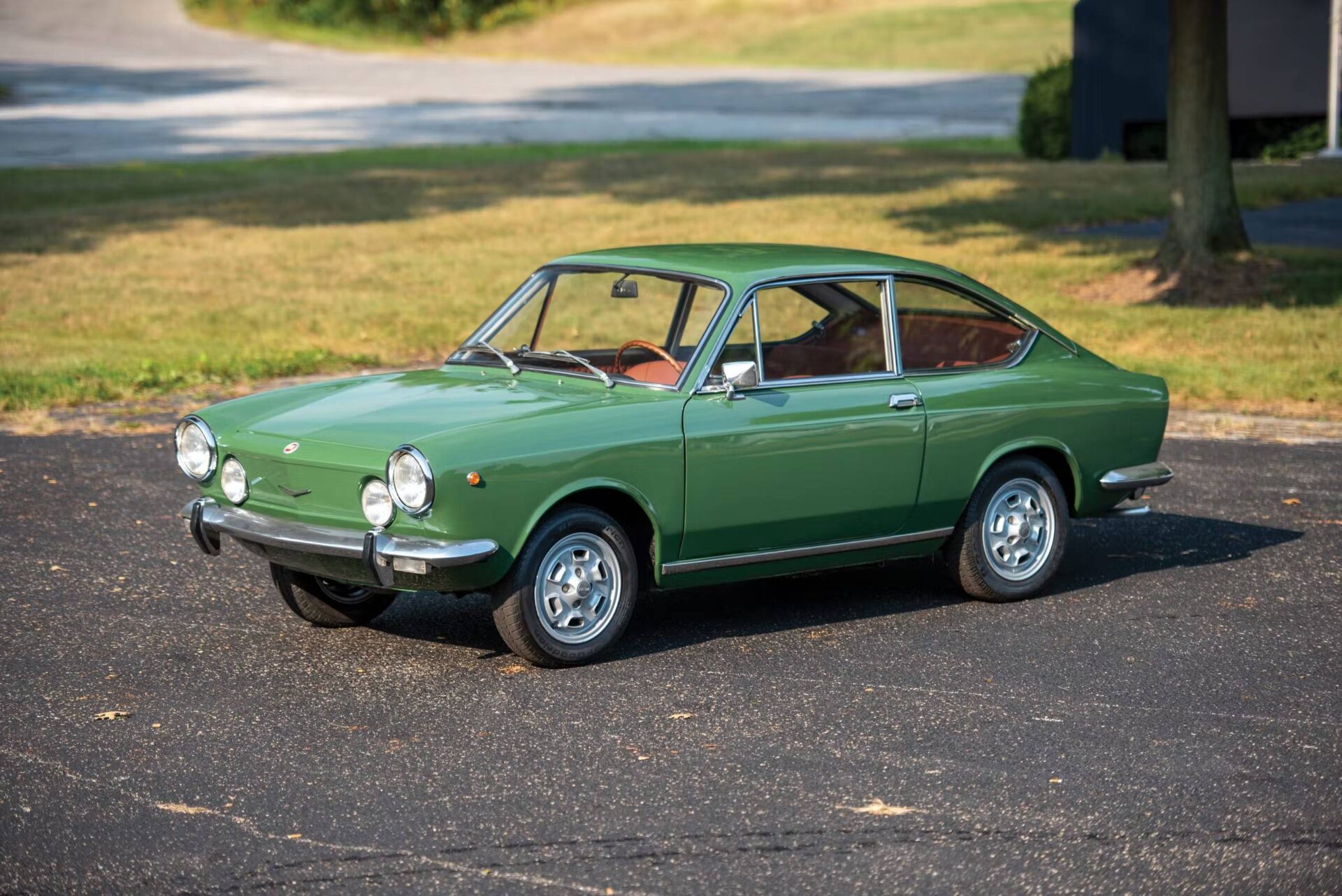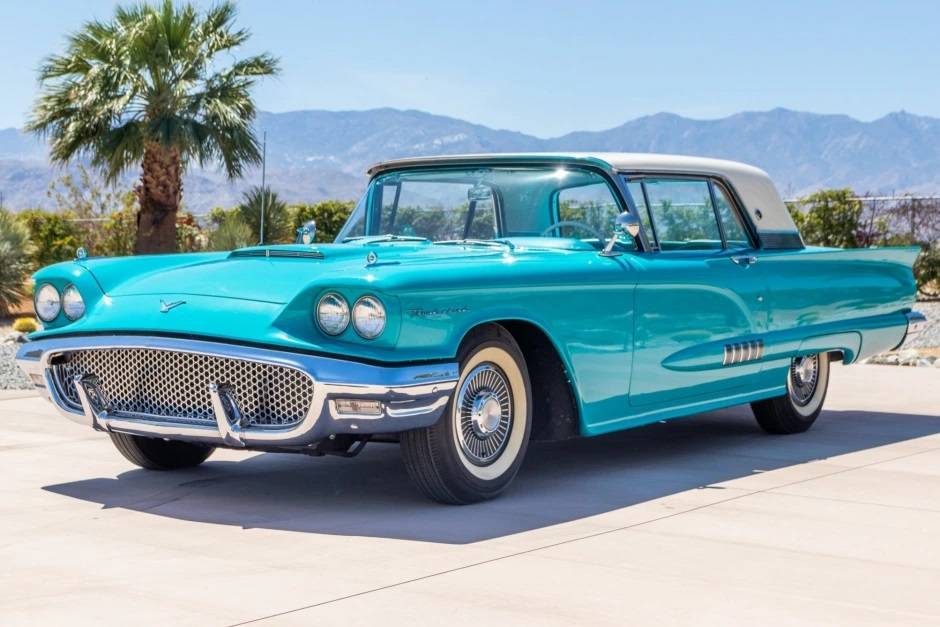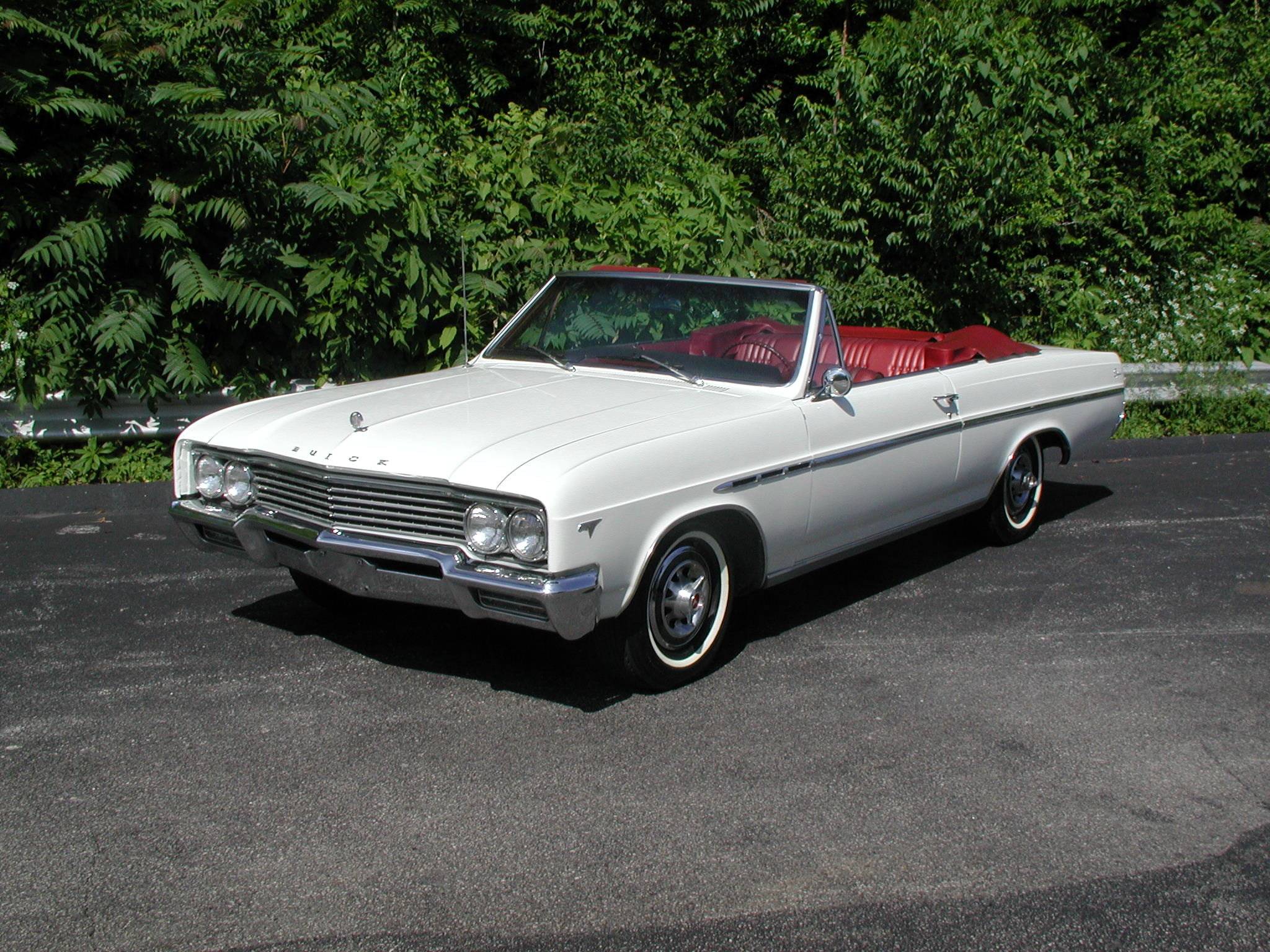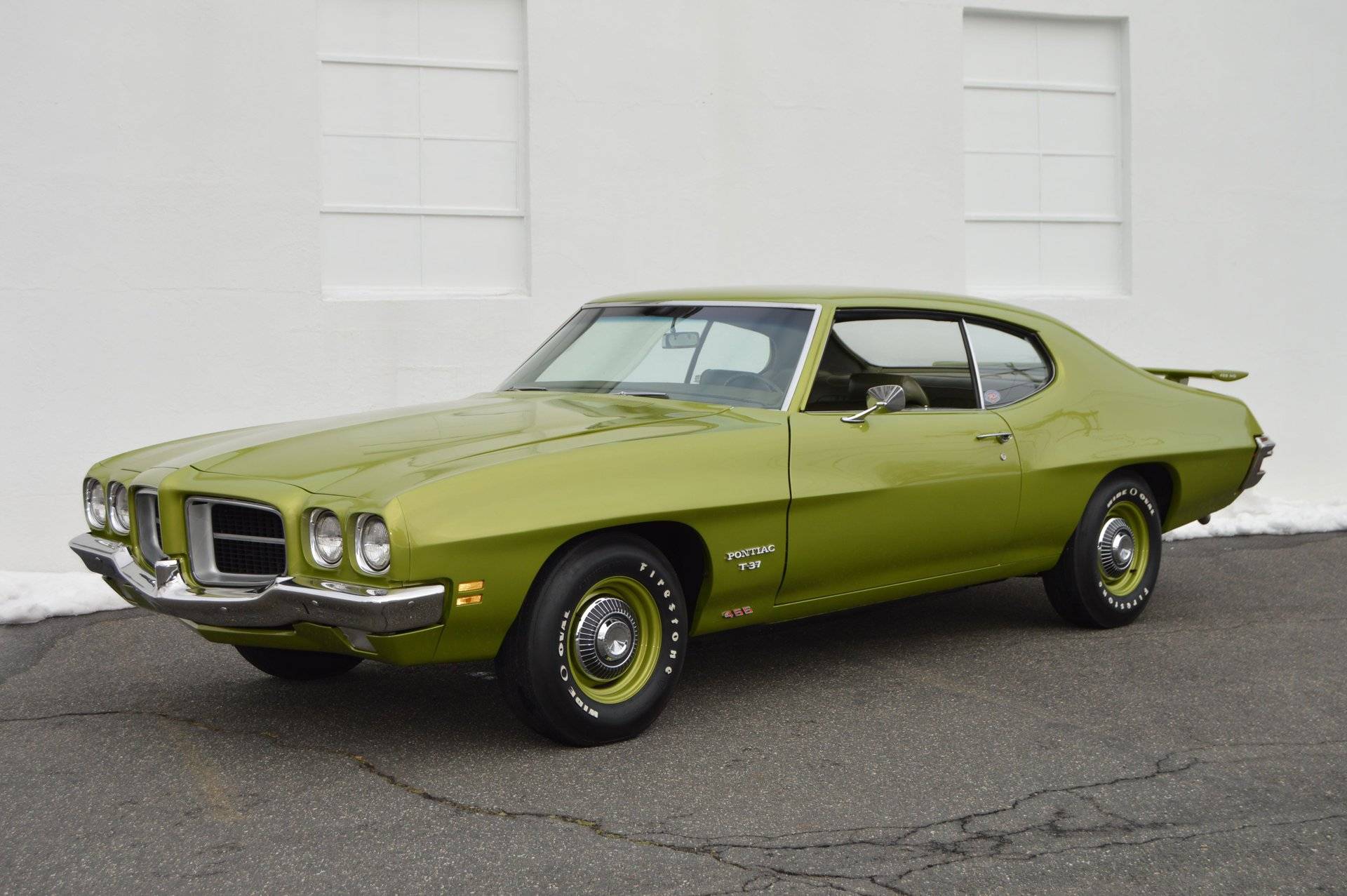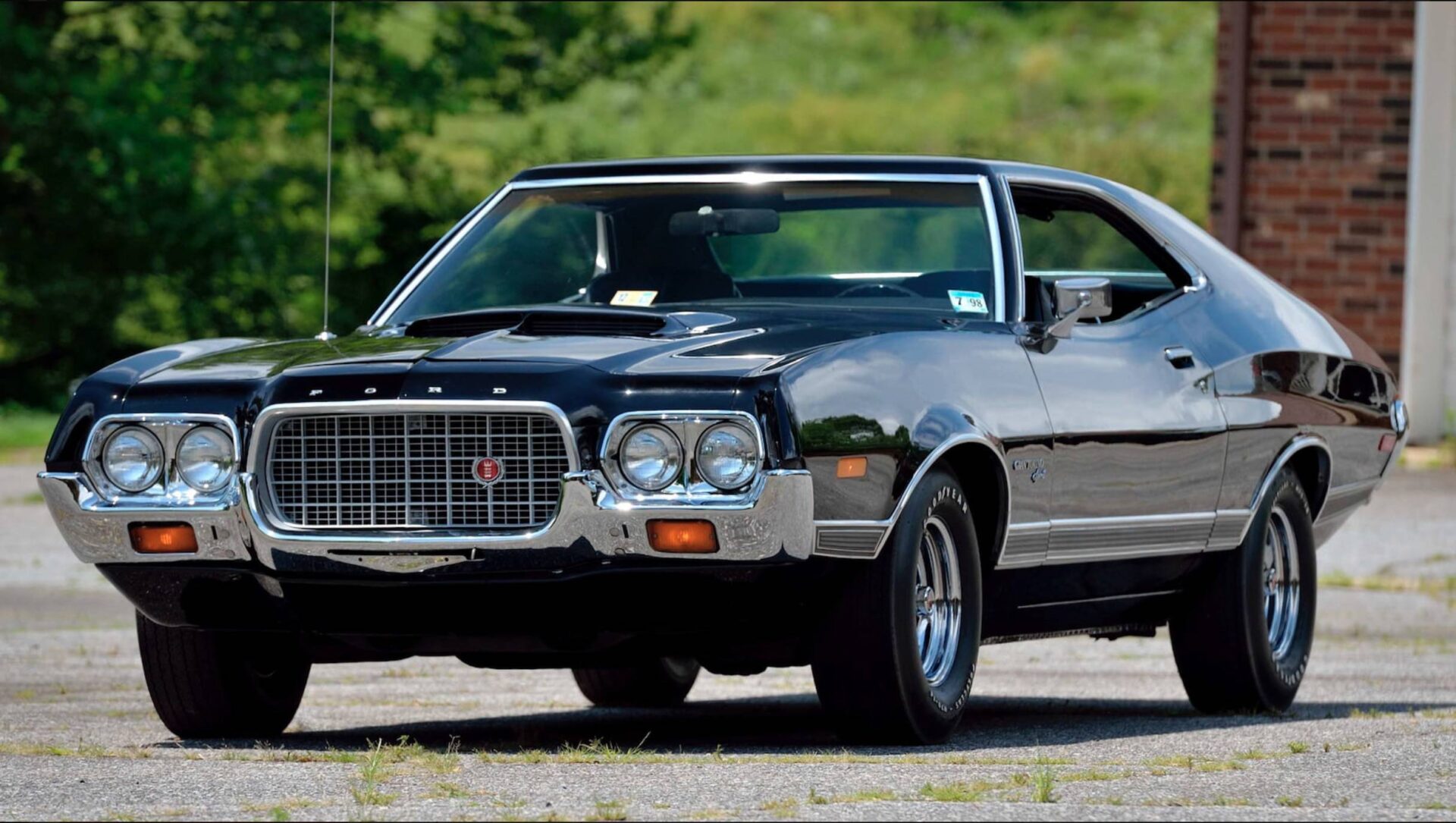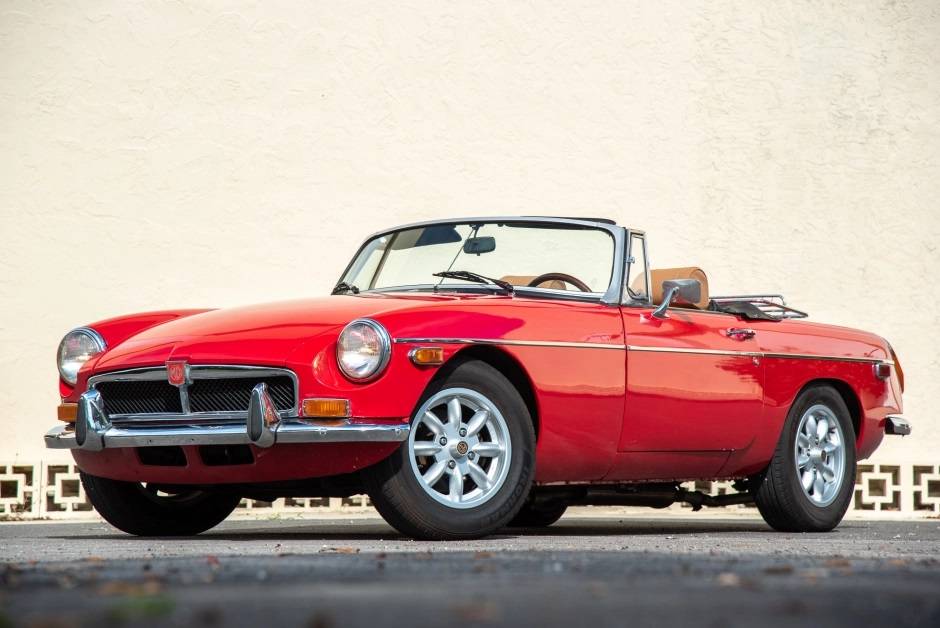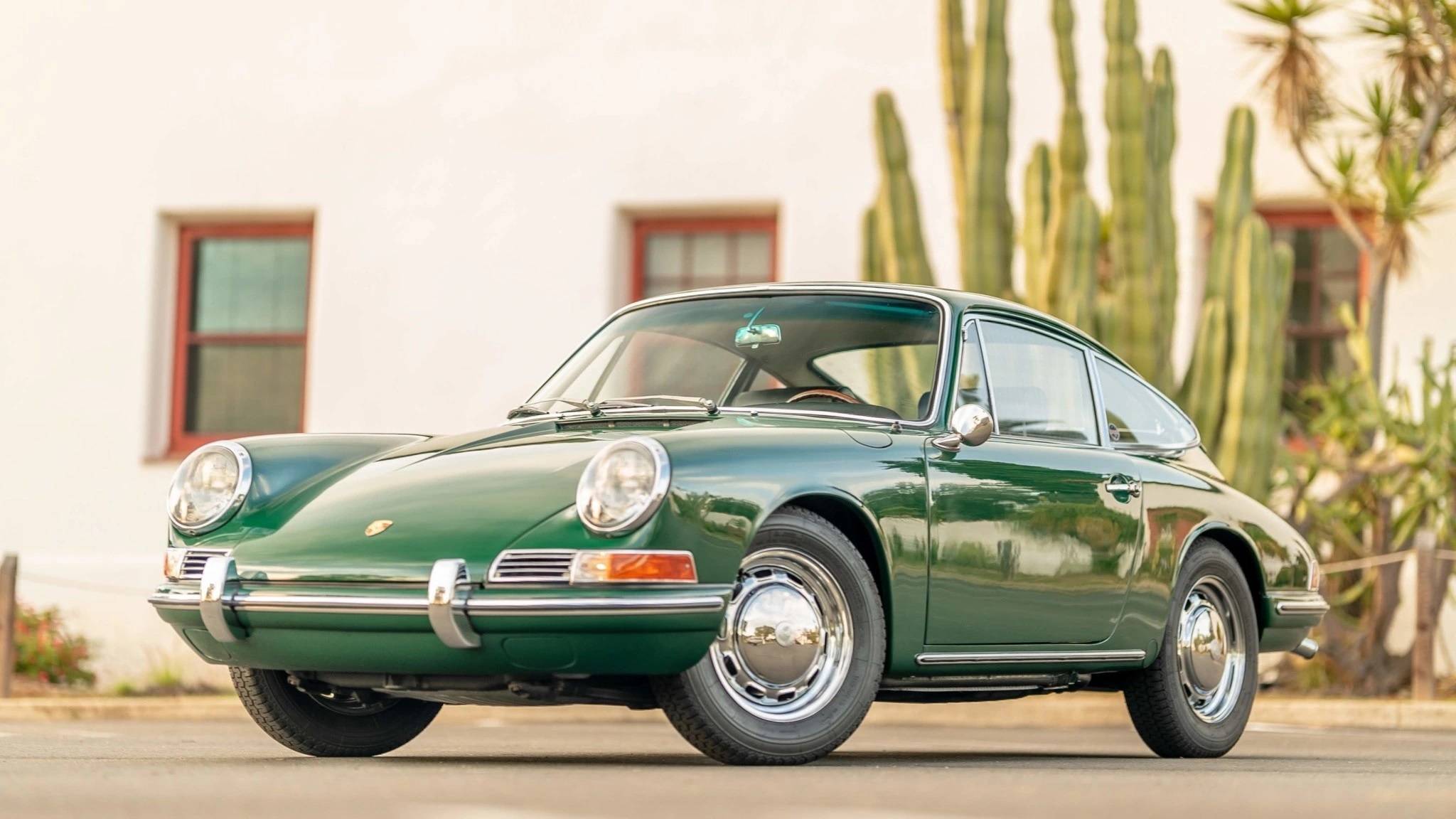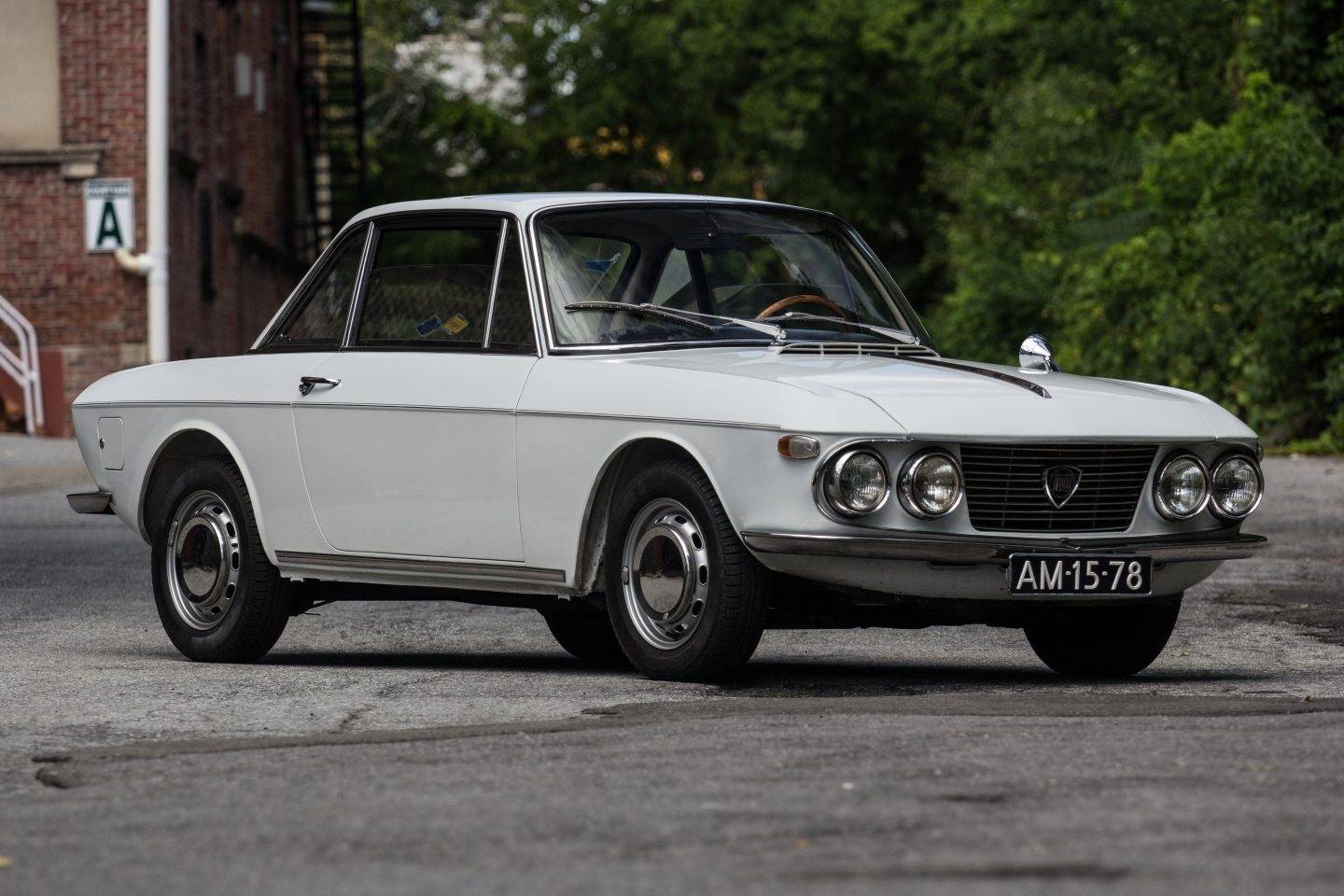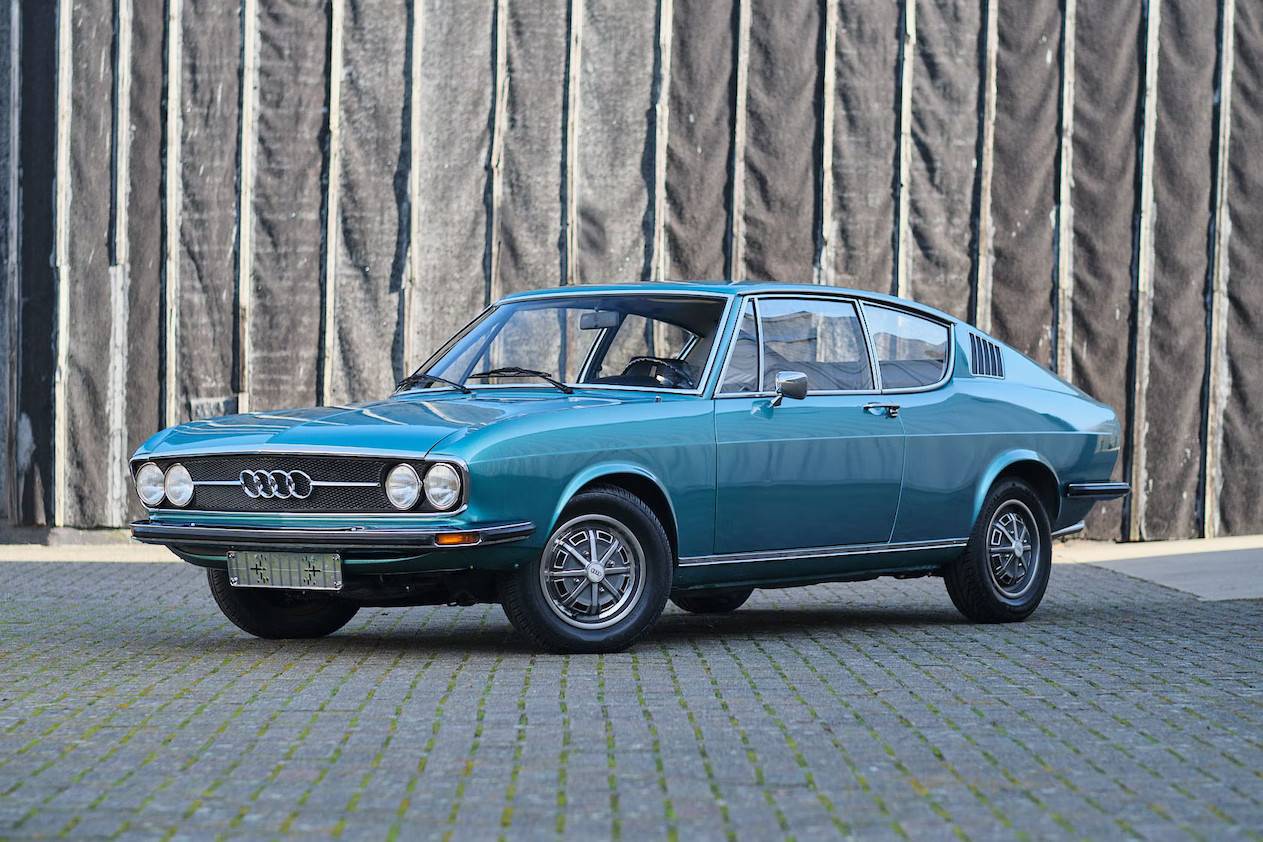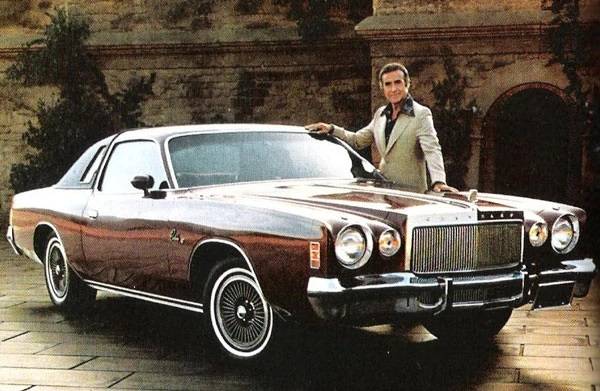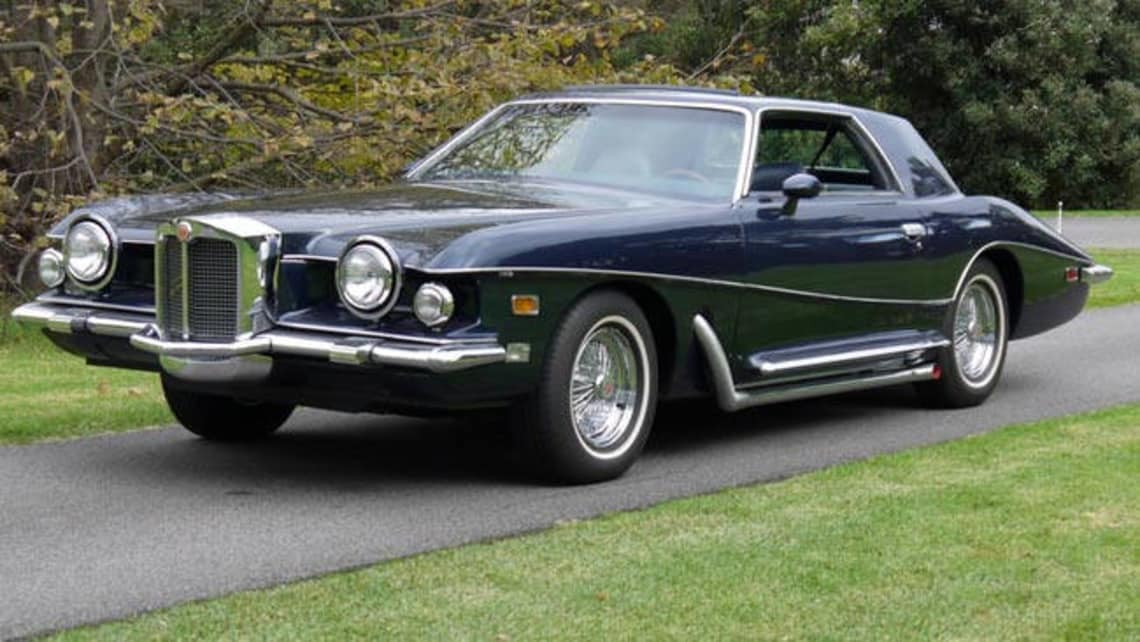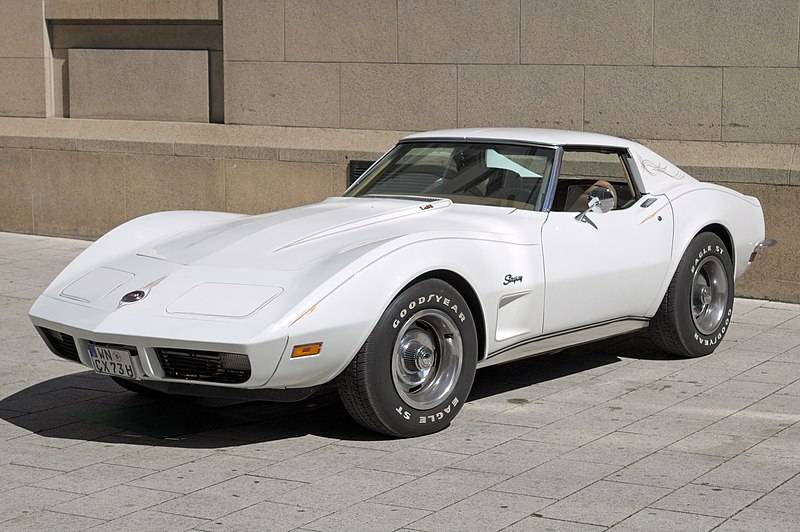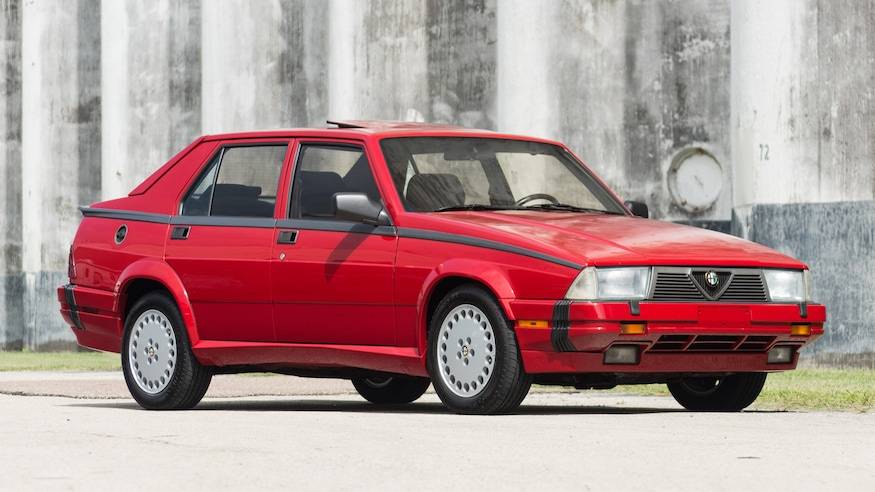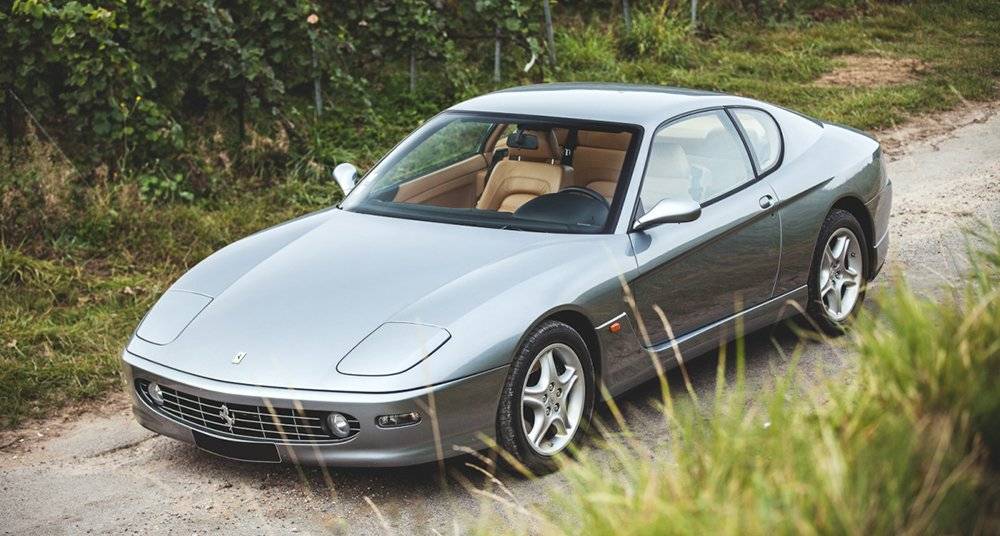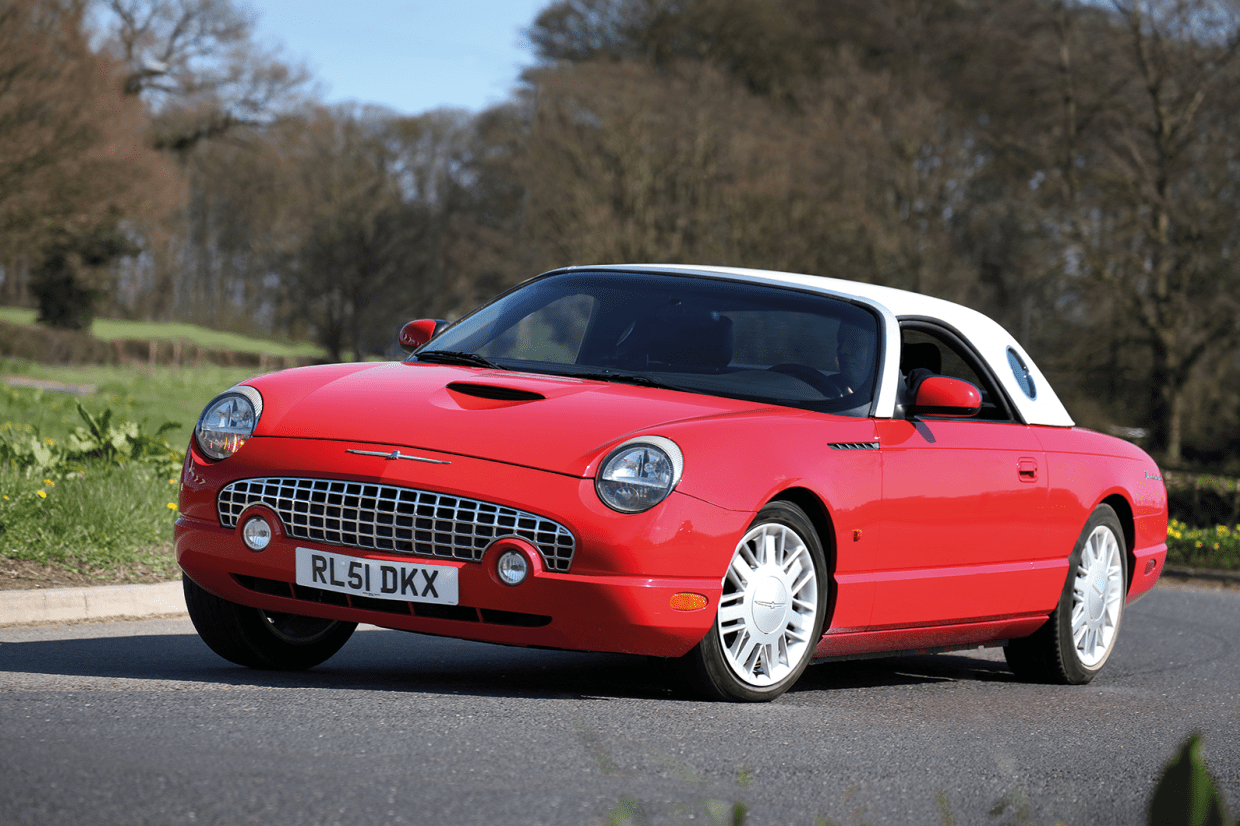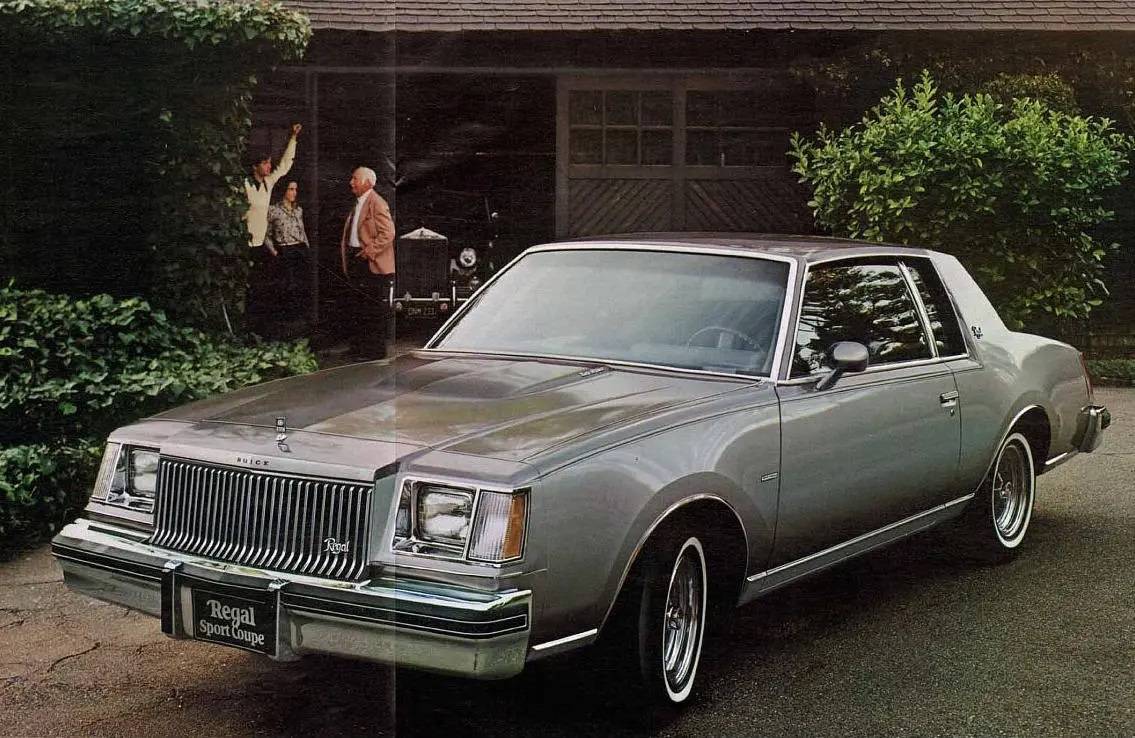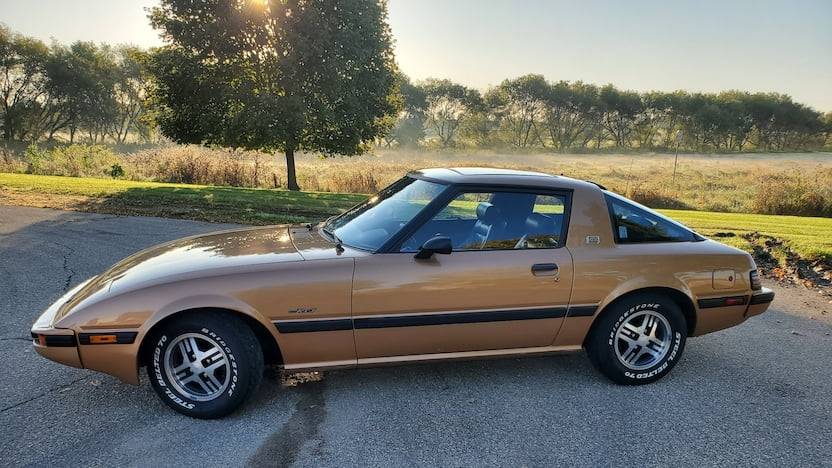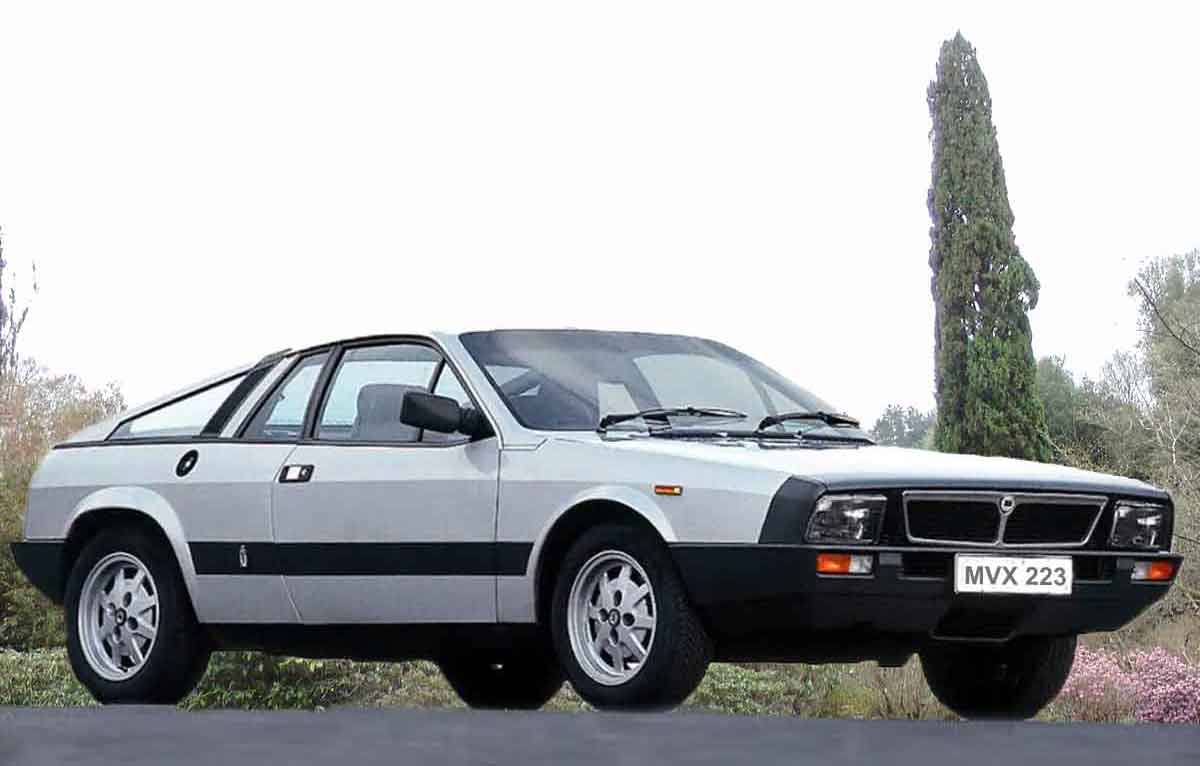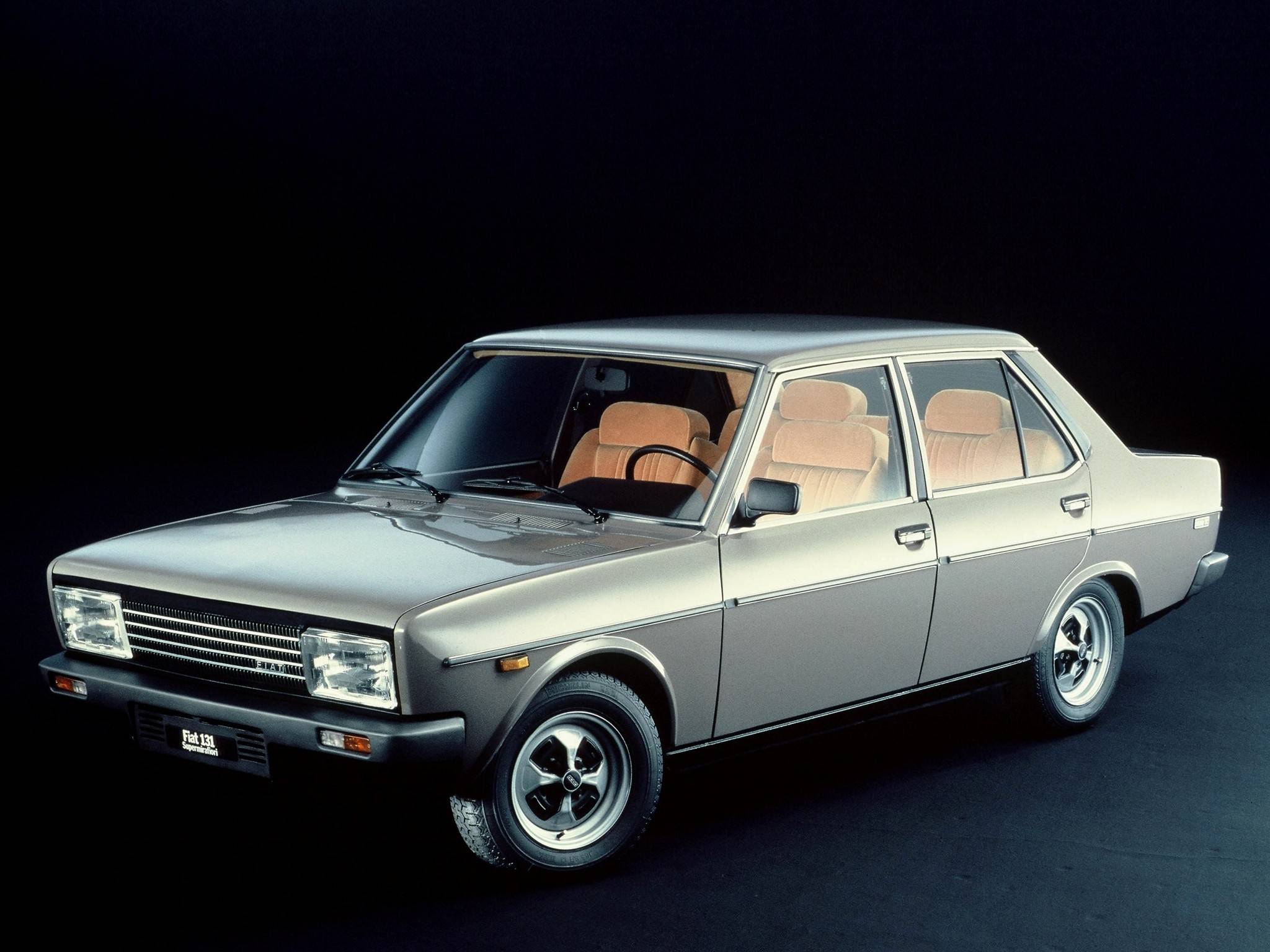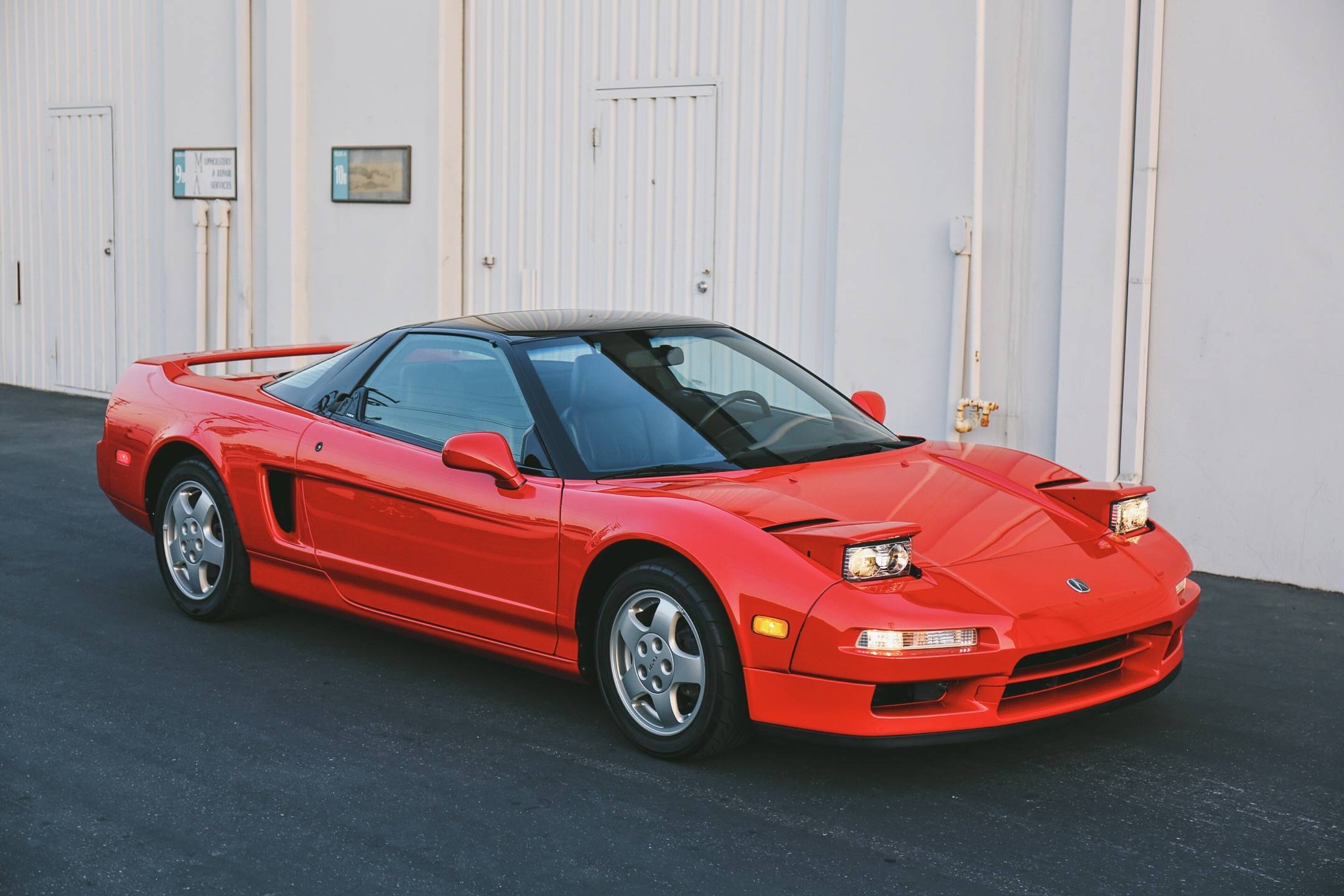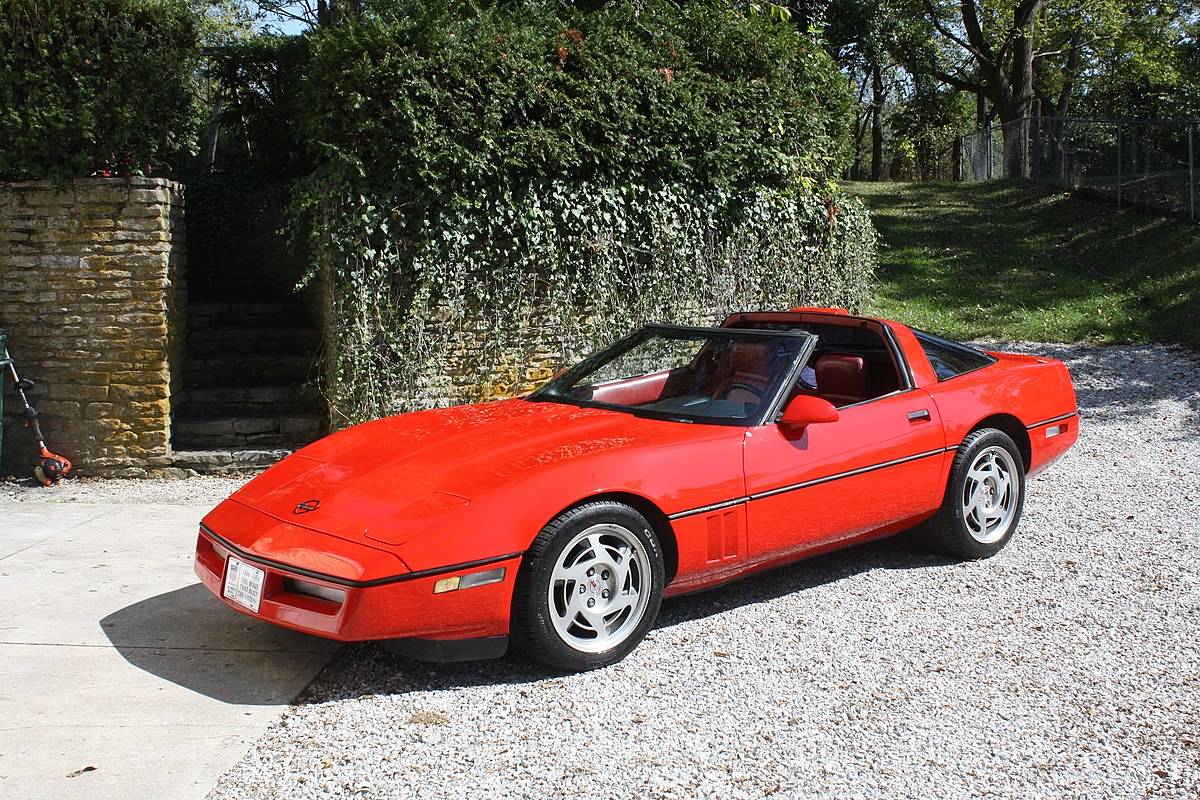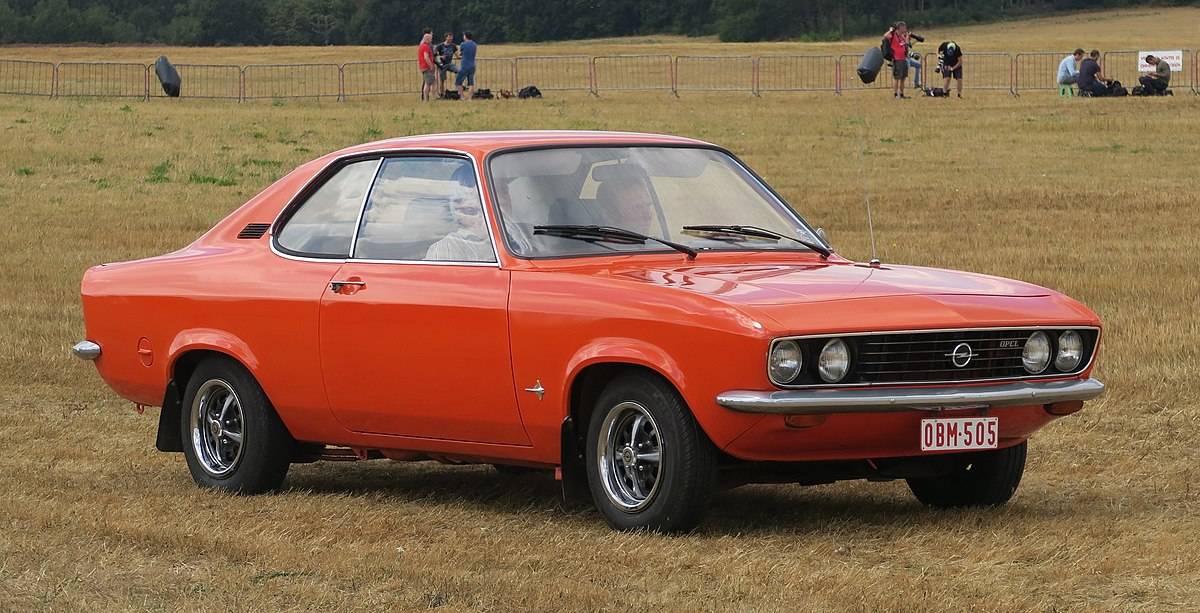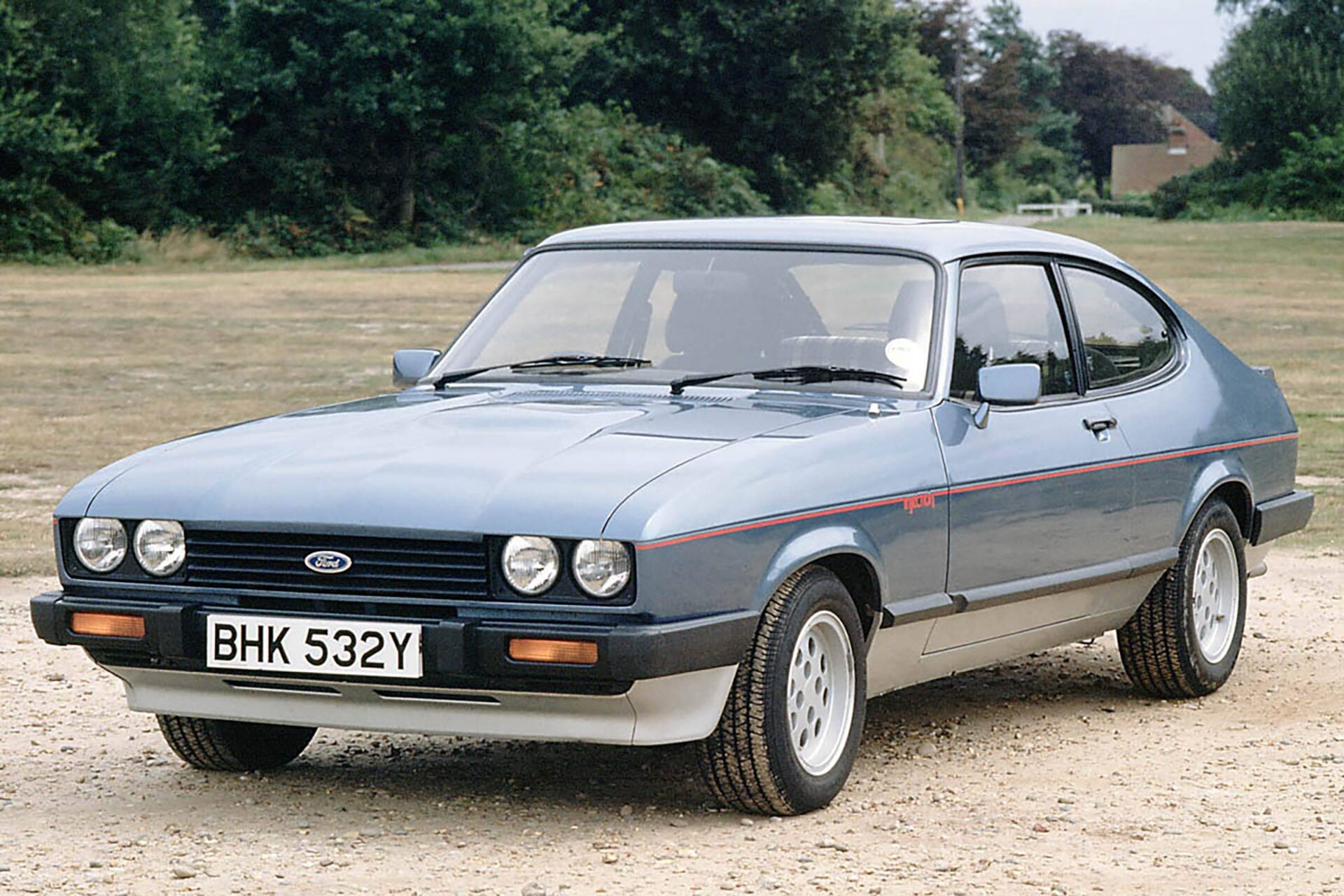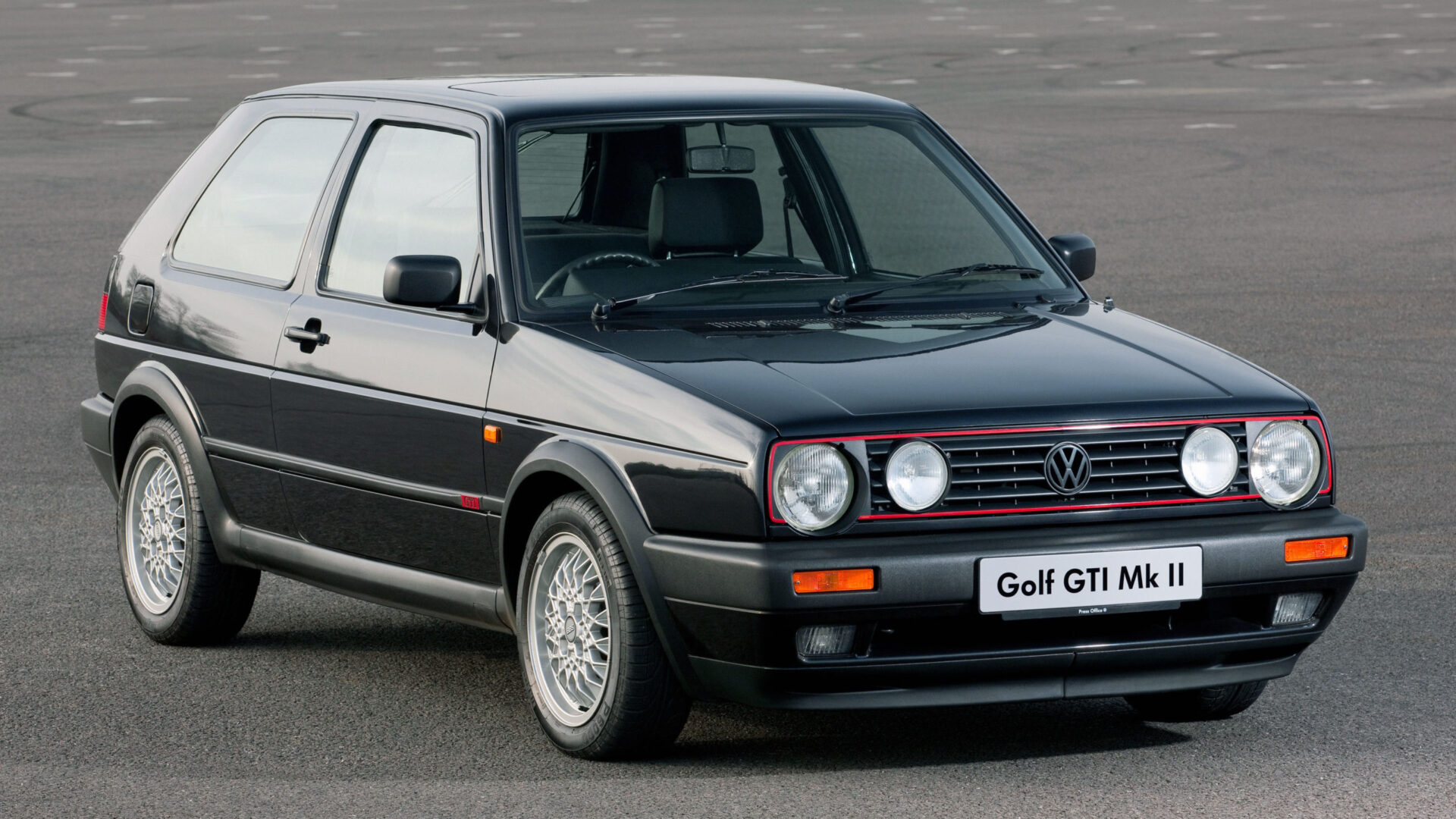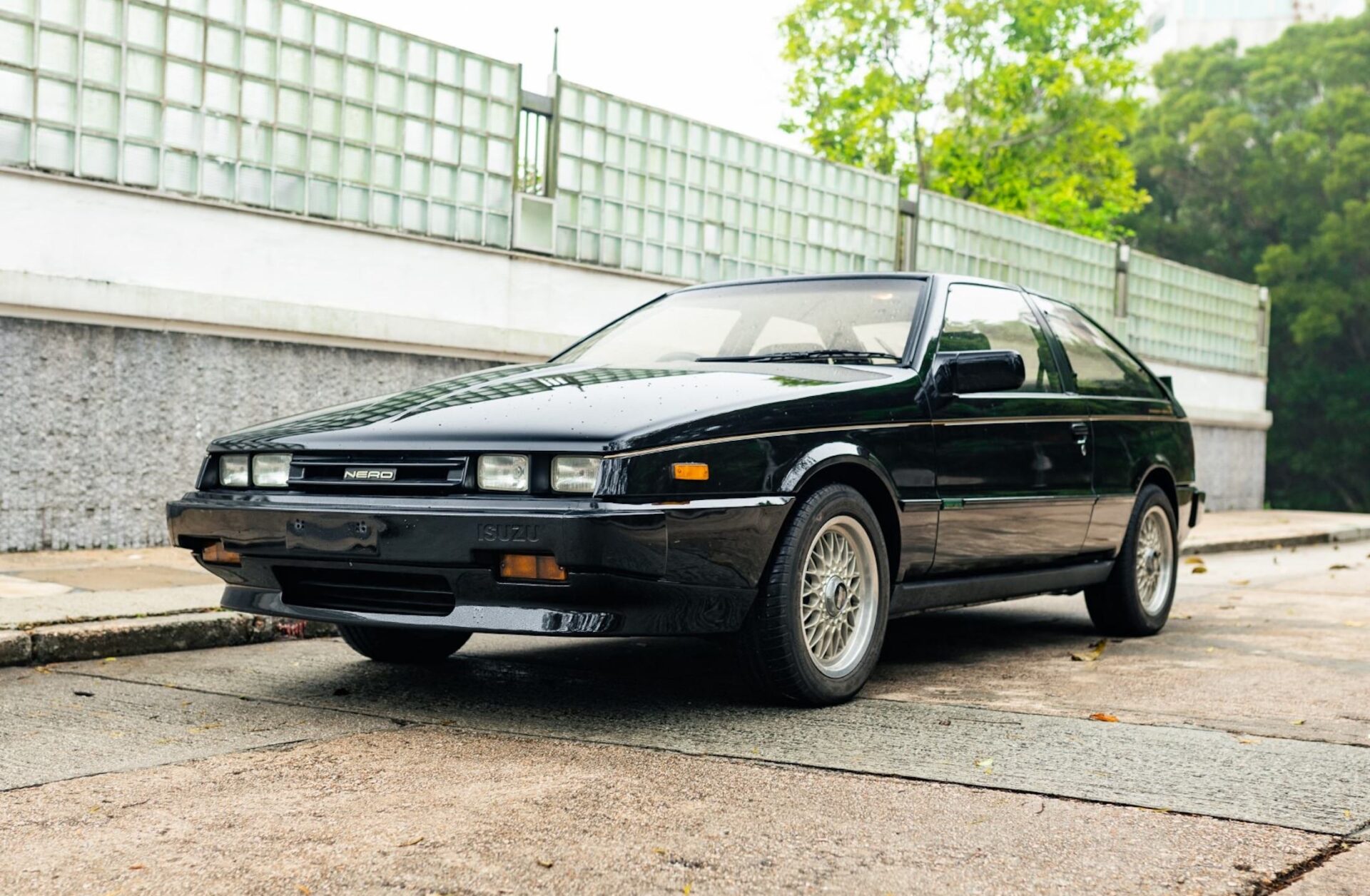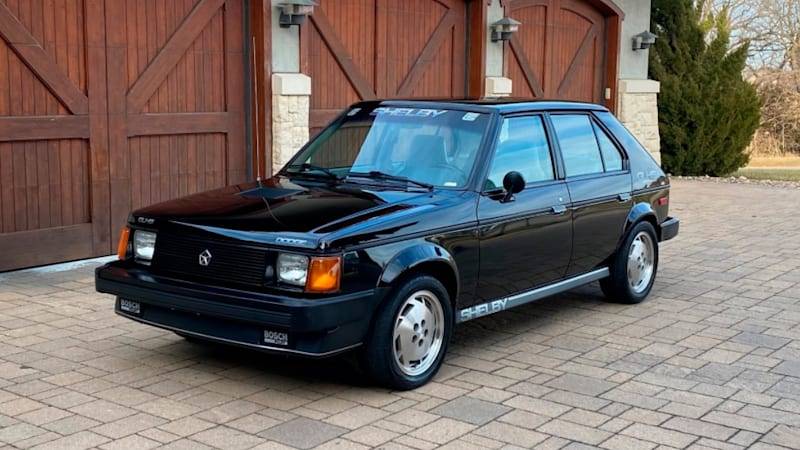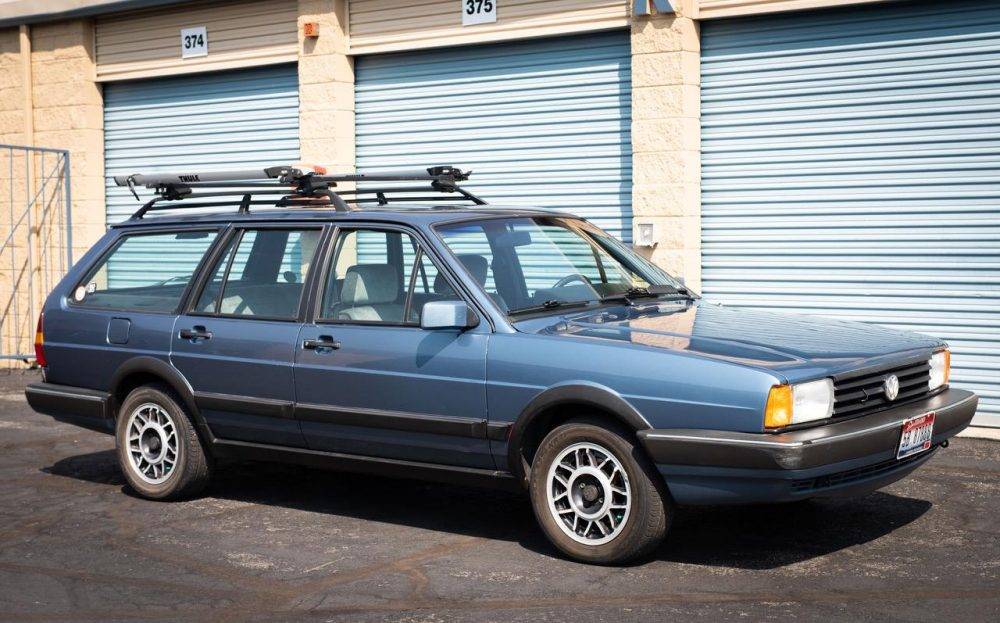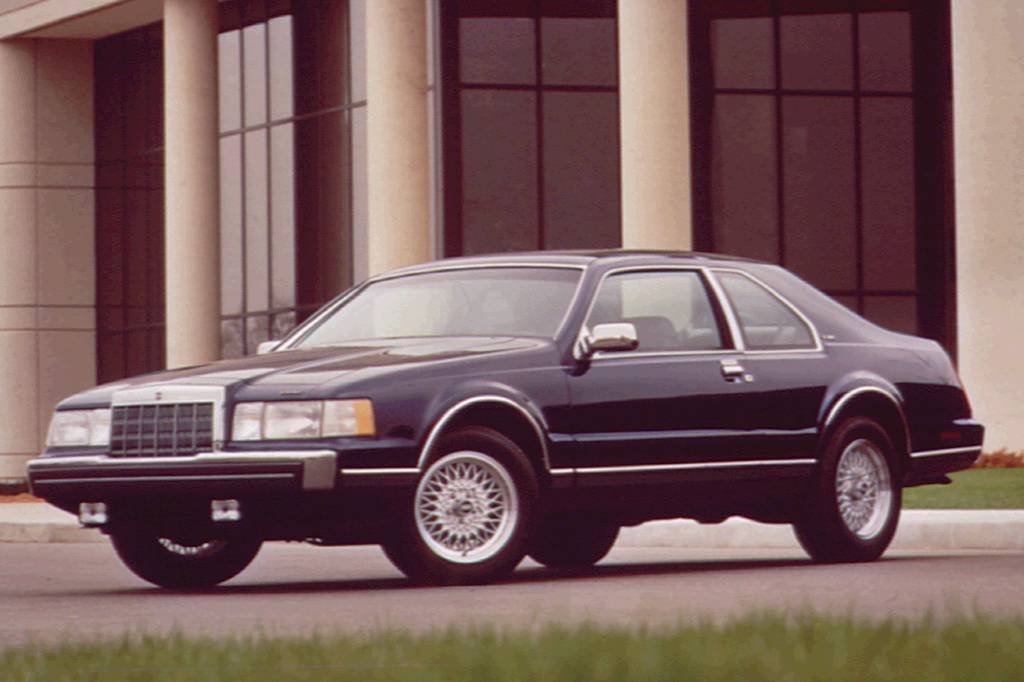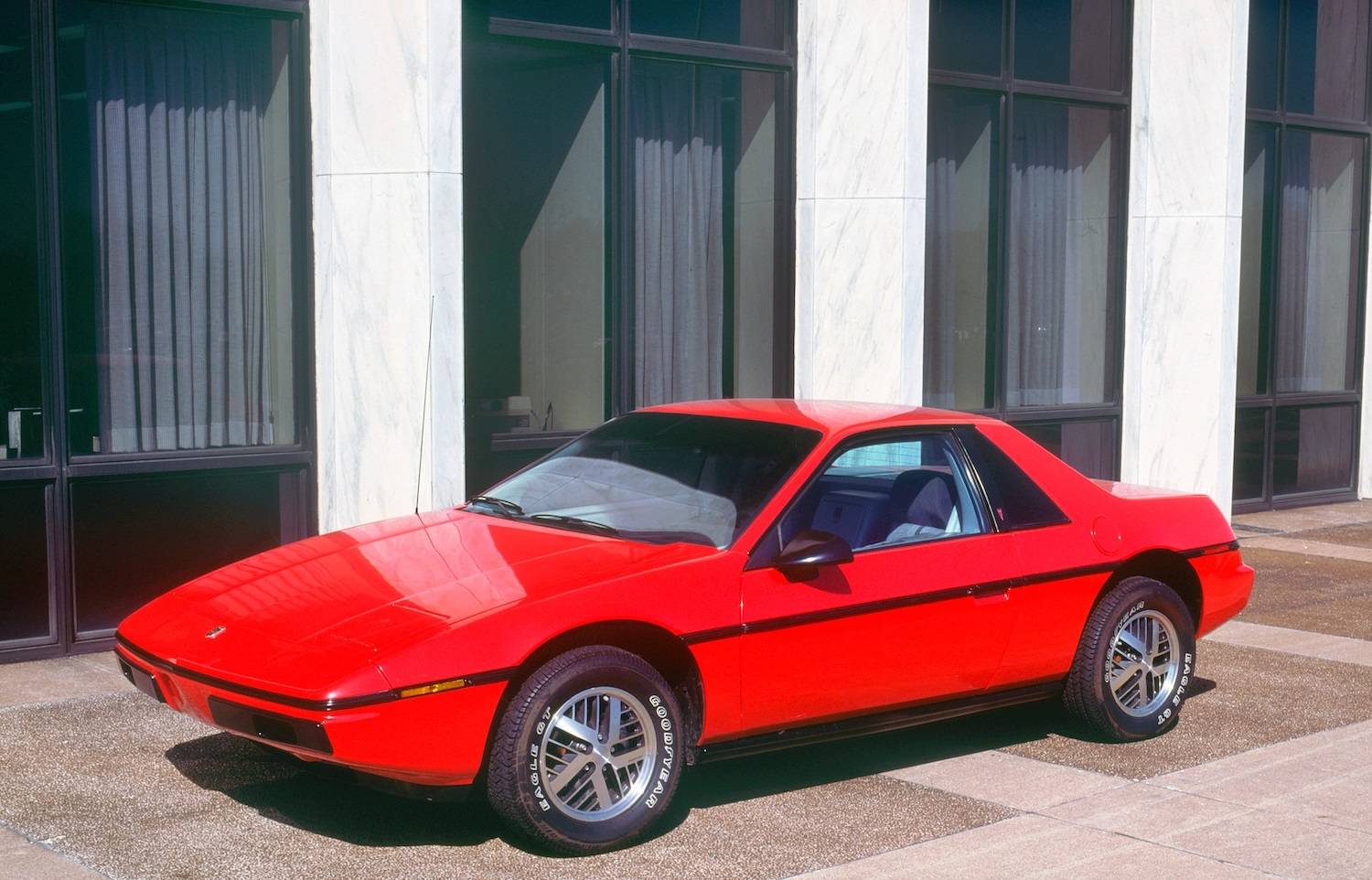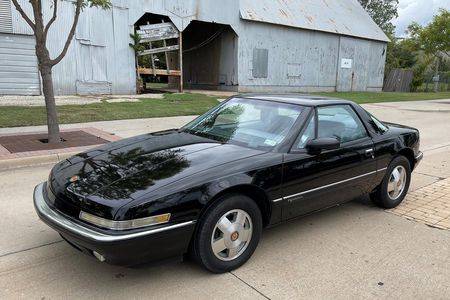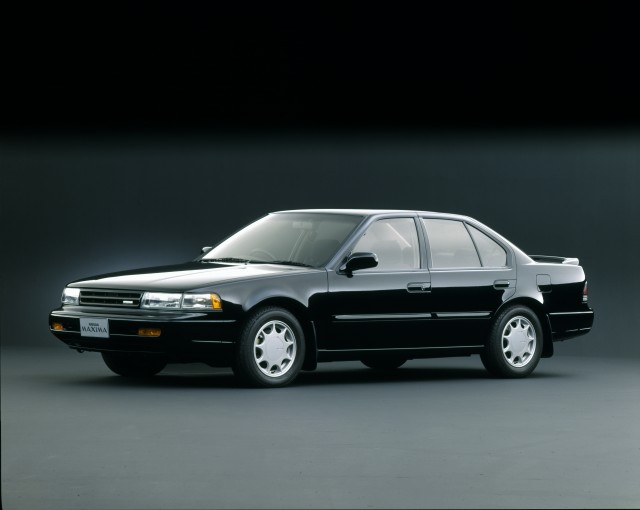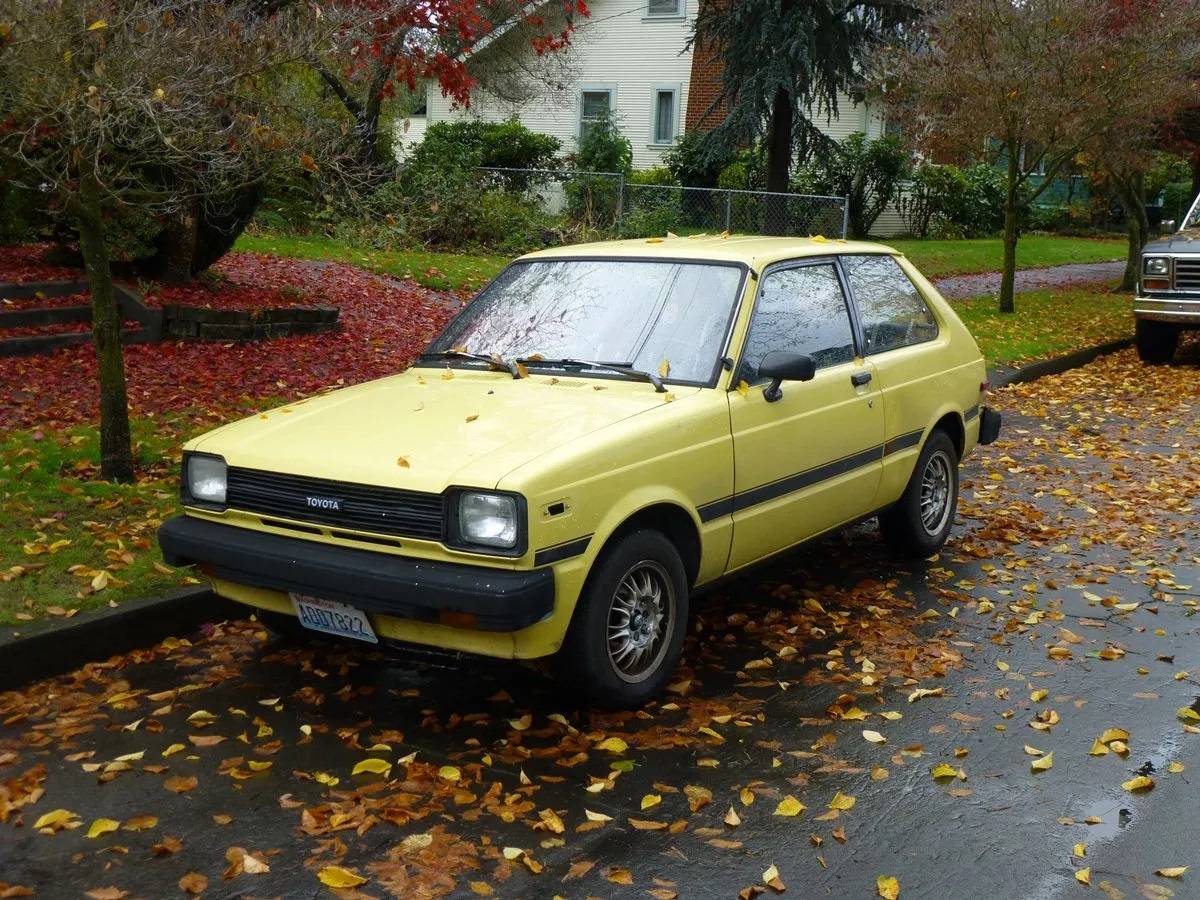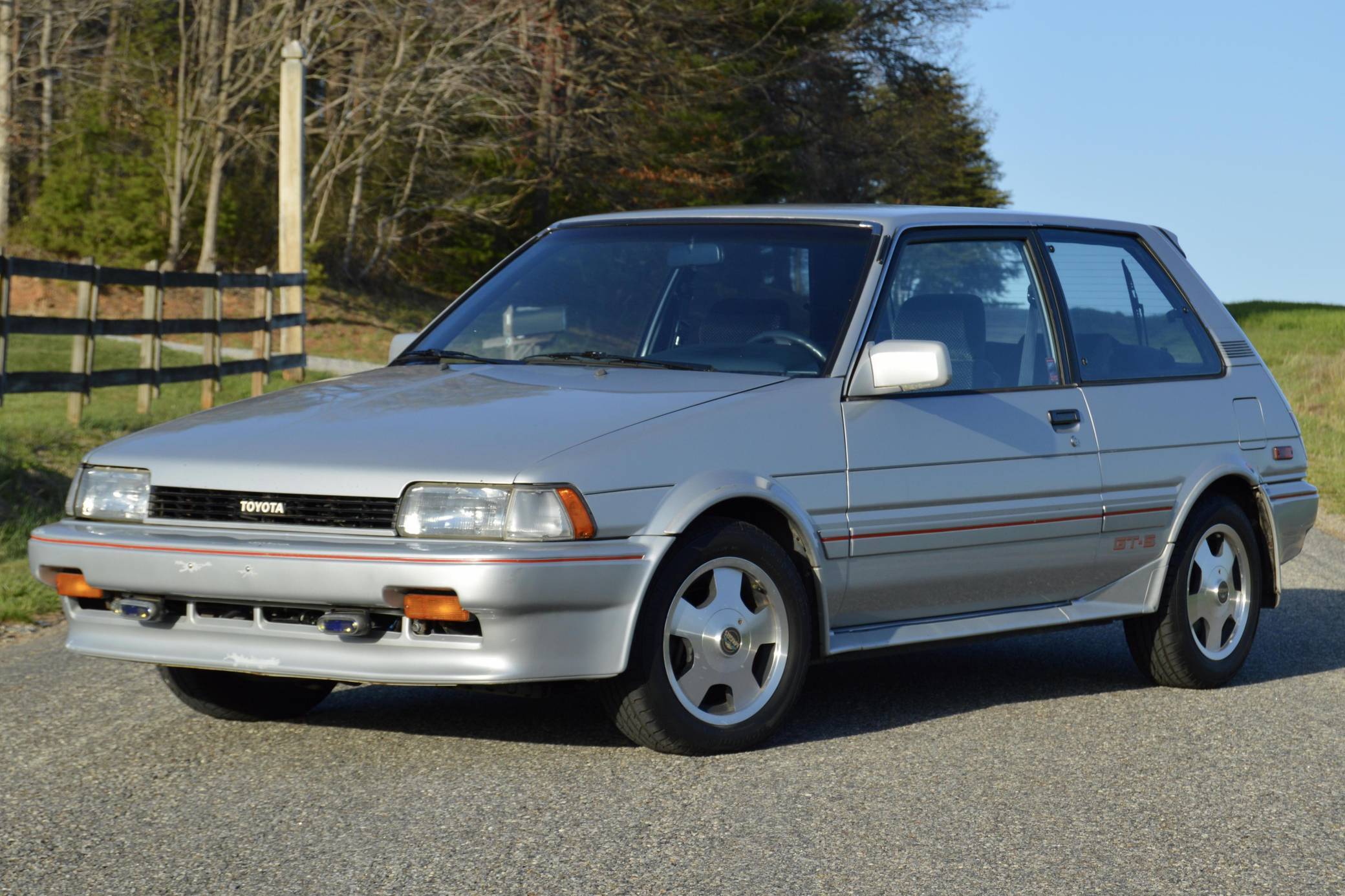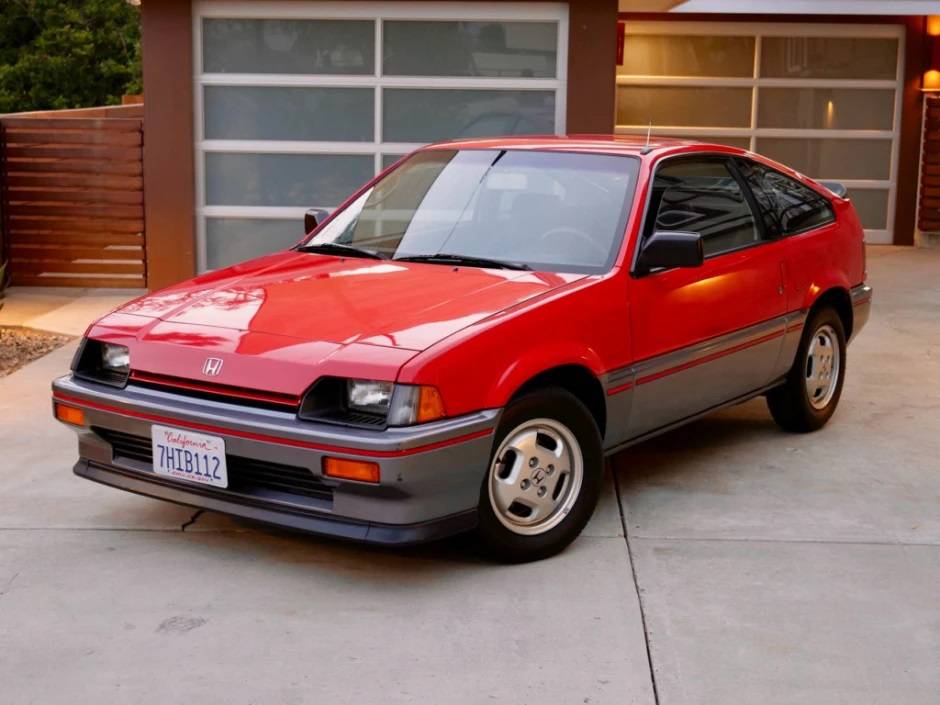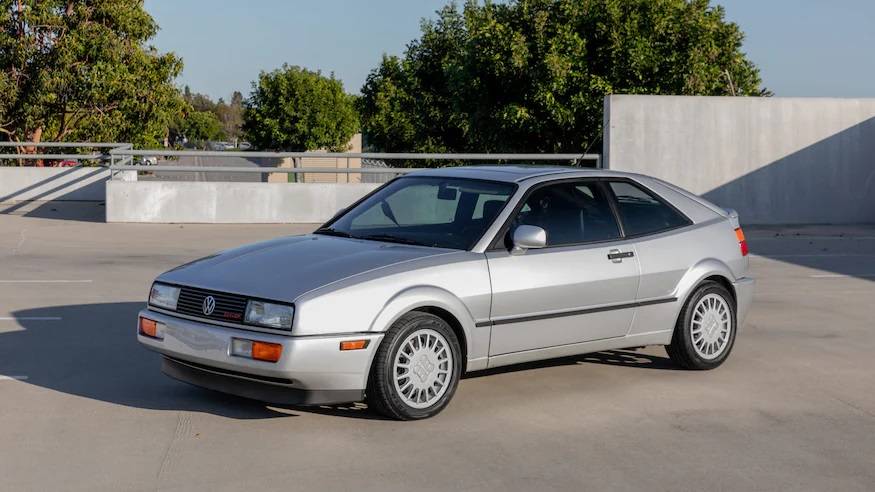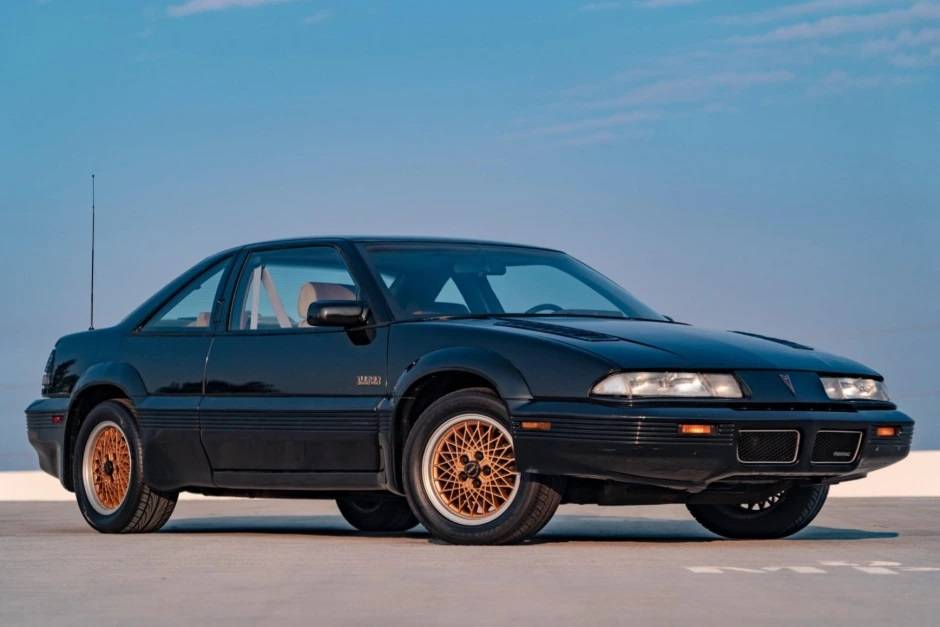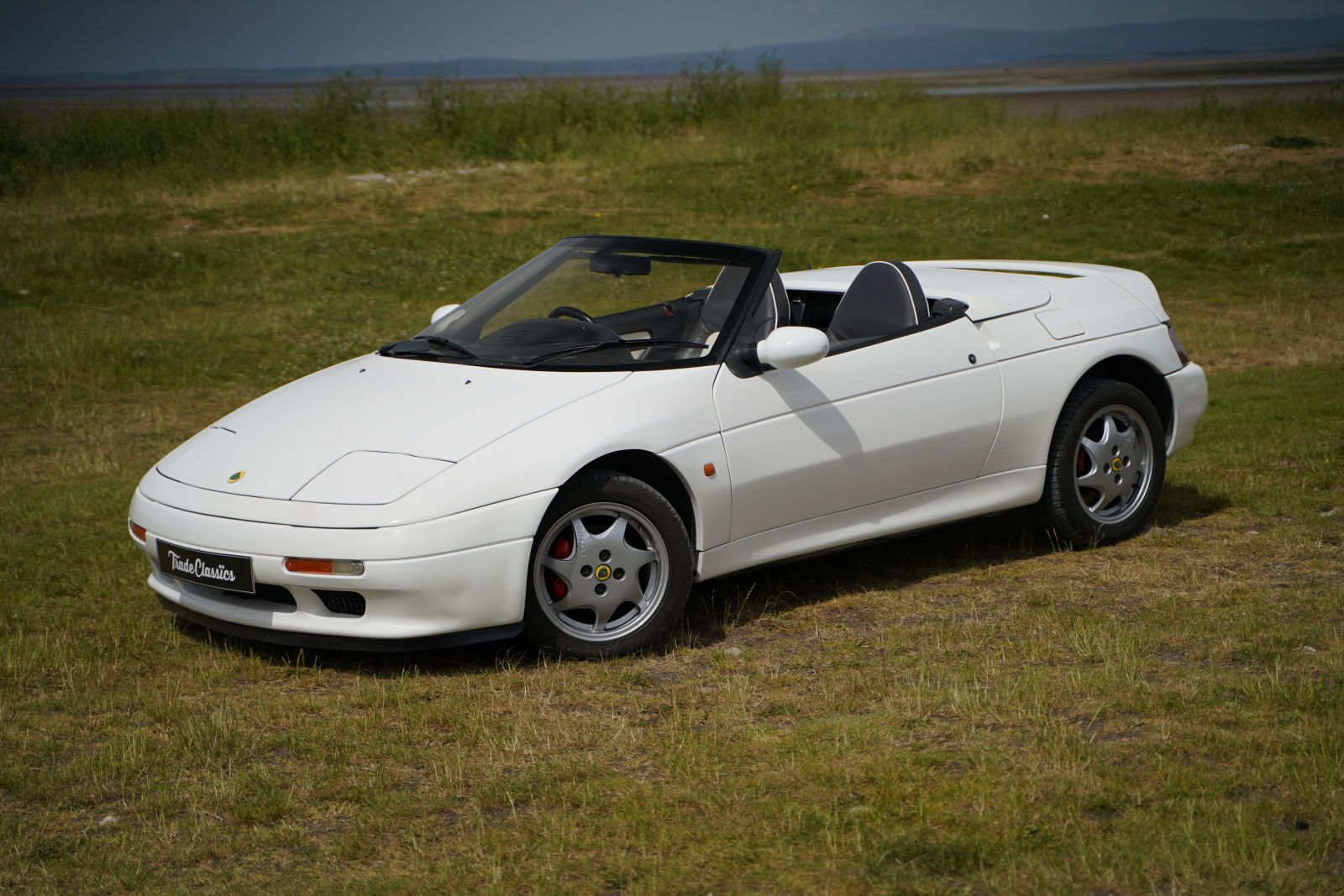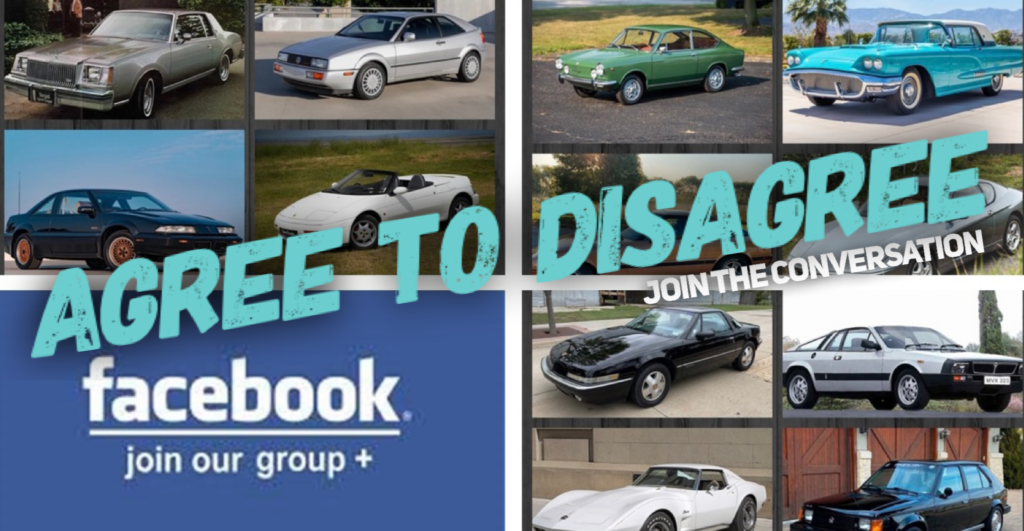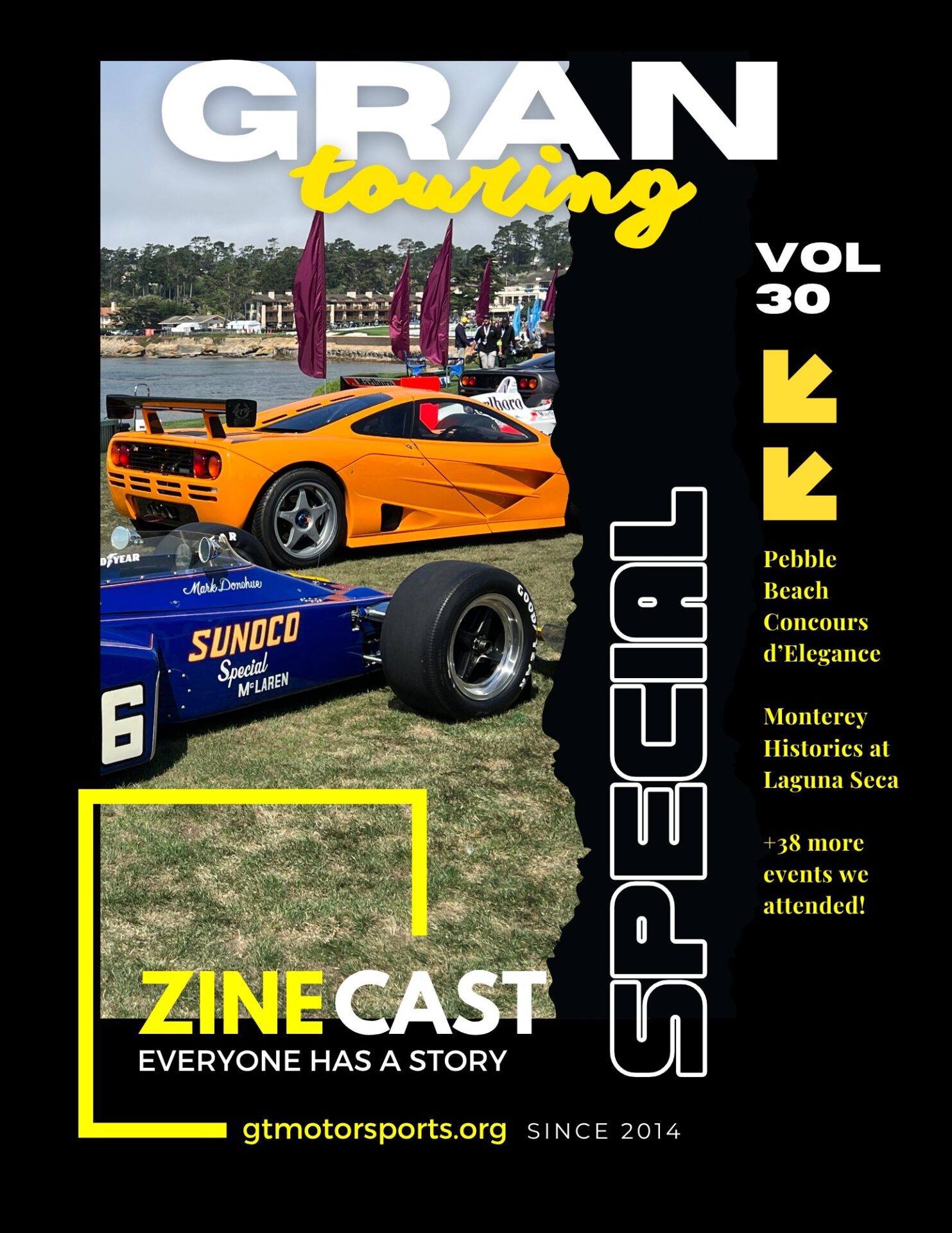We get ideas and suggestions for show topics all the time, and recently someone asked us to revisit the idea of “purchasing your first classic car” – never looking to turn down an opportunity for a hearty debate, we said Challenge Accepted! – And you know what that means listeners… it’s time for another fan-favorite WHAT SHOULD I BUY? episode!
As our listeners know all WSIB’s have Shopping Criteria : but it unravels very quickly when you take into consideration all the different genres and eras of “collector cars” – Are we talking pre-war, post-war, muscle car, malaise era or something more modern? – so this begs the question “what exactly *IS* a collector car?” And with the help of our esteemed panel of guests we think we can solve this puzzle and come up with some great suggestions for the first time collector car buyer.
Tune in everywhere you stream, download or listen!
 |  |  |
All of our guests have been on the show before, and have experience in the classic car, prospecting and investor car markets. So please join me in welcoming back to Break/Fix our panel of petrol-head juggernauts: Mark Shank from the 90’s WSIB episode, Don Weberg from Garage Style Magazine, Rob Parr from Collector Car Guide and Chris Bright from Collector Part Exchange.
- Notes
- Transcript
- Highlights
Notes
- Best pre-war classics
- Best post-war, pre-gas crisis classics Euro or Domestic
- Best Muscle cars
- Underappreciated or Hopeful classics > Prospecting
- Classics for under $50k – Affordable Classics
- Classics between $50-100k – Investments
and much, much more!
Transcript
Crew Chief Brad: [00:00:00] Our panel of brake fixed petrolheads are back for another rousing what should I buy debate. Using unique shopping criteria, they are challenged to find our first time collector the best vehicle that will make their friends go, Where’d you get that? Or what the hell is wrong with you? At the next Cars and Coffee.
We get ideas and suggestions for show topics all the time. And recently someone asked us to revisit the idea of purchasing your first classic car, never looking to turn down an opportunity for a hearty debate. We said challenge accepted. And you know what that means, listeners. It’s time for another fan favorite What Should I Buy episode.
Crew Chief Eric: That’s right, Brad. And as our listeners know, all What Should I Buys have shopping criteria. But in this case, it unravels very quickly when you take into consideration all the different genres and eras of collector cars. Are we talking pre war, post war, muscle car, the malaise era, or something more modern?
So this begs the question, what exactly is a [00:01:00] collector card? And with the help of our esteemed panel of guests tonight, we think we can solve this puzzle and come up with some great suggestions for the first time collector car buyer.
Crew Chief Brad: All of our guests tonight have been on the show before and have experience in the classic car prospecting and investor car markets.
So please join me in welcoming back to break fix our panel of petrolhead juggernauts. Mark Schenk from the 90s What Should I Buy episode, Don Wieberg from Garage Style Magazine, Rob Parr from Collector Car Guide, and Chris Bright from Collector Part Exchange.
Crew Chief Eric: Hey guys, welcome back to the show. Thanks, we’re honored that
Crew Chief Brad: you all even won a comeback.
Crew Chief Eric: Well, as everybody knows, the what should I buys are a fan favorite. They’re a little bit more of a happy hour style, a little bit more casual. So tonight’s big debate is the first time classic car buyer. So who wants to take a stab at defining what a classic car is
Crew Chief Brad: now in the intro, we said classic car and collector car.
Are we using these [00:02:00] terms interchangeably? Because they’re different.
Crew Chief Eric: Are they?
Crew Chief Brad: If you read Jalopnik, they come out with articles all the time. These are the next future collector’s cars. Just because it’s a classic car doesn’t make it a collector car. And just because it’s a collector car doesn’t make it a classic.
Chris Bright: My business is named Collector Part Exchange. We didn’t name it Classic Part Exchange because we wanted to keep the door open for modern classics. People like are talking about modern Ferraris or whatever, you know, we wanted to have that be open to them. But I think technically classic car is 1989 and before is what I, I believe it’s.
Sounds
Mark Shank: like a middle aged man definition.
Chris Bright: Exactly. I’m mansplaining right now. Would you please shut up, Mark?
Crew Chief Brad: Do classic cars go along the way of classic rock? Like if we listen to a classic rock station, now we hear Nirvana. Does that mean anything from the nineties is considered a classic?
Mark Shank: Hell yeah. I mean, in Maryland, it’s a 20 years and you get a, you can get a classic car tag.
Crew Chief Brad: Yeah. Is that the standard [00:03:00] across the, across the US? So,
Mark Shank: so Brad, actually, let me flip this around on you and say, I’ll give you the exception for the future classic near term. What’s a car that’s 20 years or older. That’s a collector car. That isn’t a classic. All
Crew Chief Brad: right. Is it, is a Gremlin a classic? Right
Crew Chief Eric: up there with the HHR and the PT Cruiser, but let’s let Don weigh in.
Don Weberg: Yeah, I I’m listening to all of you and and I all of you are hugely well qualified. And you know, I’m just an old fart who has an idea here. You know, one thing that has always upset me when you look at magazines, you look at podcasts, you look at television shows. And all of a sudden, let’s talk about Oh my god, the instant collector, the Aston Martin something.
Oh my god, the instant collector, the Ferrari something or other. Well, what year is that Ferrari something? Oh, it’s a 2022. But it’s an instant collector. Wait a minute. You know, it’s like saying the Viper. I remember reading about that years ago, the Viper. Oh, this is an instant collector’s item. Well, yeah, it’s going to be limited [00:04:00] production.
It’s going to be high performance. It’s going to be very expensive. Nobody’s going to be able to have this car, but what makes a five liter GT a collector car? Oh, nothing. Nothing. That’s not a collector car until today. You ask anybody, Hey, I got a 93 GT triple black chrome ponies five speed in the garage, 25, 000 miles.
Oh my God, I gotta have that car. Well, wait, wait, wait. You were the same guy that when the car was new and I bought it, you said this would not be a collector car. You know, Eric, you and I talked last time about DeLorean pretty extensively. And I think I told you, I’ve got a stack of magazines Each one with articles from the day with DeLorean in it.
One of my favorite stories is in one of them, a young writer talks about what a piece of garbage, the DeLorean is that it’ll never be worth anything. It’s going to fall apart before it’s worth anything. Bah, bah, bah, bah, bah. Fast forward 30 years. I have another magazine. Where the writers gushing over DeLorean and how different they were and stainless [00:05:00] steel and gullwing doors and the plastic underbelly and all this other wonderful stuff.
And it’s such a great car. It’s an absolute collector car. You should buy it now while they’re priced right. That was written by the same guy.
Chris Bright: Don’t you think there’s this like, cars are new and then they go into the valley of death. Even if we look back, there’s even lots of Porsche 911s, like when they weren’t that valuable, then all of a sudden they became like 250, 000 cars.
Now they’ve come back down to earth, but it’s like something goes away and then it starts becoming like Ferrari Tessarossas like five years ago, you’d get one for 40, 000. 50, 000. They were not expensive cars. Now, they’re expensive to own, but now they’re back up over in 120, 140 range. And
Don Weberg: look at your Kuntosh’s.
Those cars have gone completely nuts. The 800, 000. It’ll be a couple of years. That’d be a million dollar car,
right?
Mark Shank: The residual value of the cocaine you’ll find in a test for us. Just worth more than 40 grand.
Don Weberg: That’s true. And they were all brought to you by [00:06:00] DeLorean, the dealer of the year for 1982.
Crew Chief Brad: You know, Mark, I had a little bit of time to actually think about your question.
I had to do some mental math because you said 20 years older. That’s 2002. How about the Ford Tempo, the Ford Escort, the Ford Taurus? Are those classics? Oh
Mark Shank: God, no. The Chevy Impala? yes. The Tempo, no. So, so, so, okay, so it’s got a particular model.
Crew Chief Brad: Uh, the Escort, if you actually
Mark Shank: got the, like the good one.
Crew Chief Brad: You’re talking about a particular model, the Ford Probe. I’m, I’m ragging on Ford a lot here because it’s just popped into my head. Ford Probe is just great. The Volkswagen Passat is not a classic that’s I’m sorry, the 2001 Volkswagen Passat is yeah, of course, it’s a good okay, but it’s a collector car. So wait, the 2000, it’s not a collector car either you but that was that was my question was anything that’s 20
Mark Shank: years old that
Crew Chief Brad: classic give me a car that’s not a classic that is 20 years old.
You
Don Weberg: didn’t tell me these guys were married.
Rob Parr: And it’s very undefined. But anything that’s desirable is the collector car. I mean, if you want to [00:07:00] Probe GT or something. V6 to the, whoever wants the car. That’s a collector car. Right. I mean, that same guy has six
Crew Chief Eric: of them because, you know, he needs the parts.
Crew Chief Brad: Like the guy on this panel that I’m not going to name who has about 200 Mark fours and parts.
Crew Chief Eric: It’s going to be a collector car. One of these days. That’s all I know.
Crew Chief Brad: Yeah.
Mark Shank: Cause you’re at least five collector cars
Don Weberg: now. Wait, wait, wait. Mark four. Volkswagen. the German Mark 4 or from Dearborn?
Crew Chief Eric: No,
Crew Chief Brad: not your Lincoln.
We’re talking about Volkswagen. Yeah. Okay. Not the Toyota Mark 4 either. So let me do Yeah, yeah, yeah. The
Don Weberg: Toyota. Good. Very good. Building on what you were saying about the Tempo and the Probe, etc. I have a 79 Chevy Caprice. I inherited it back in 2002. Nobody gave a crap. I was the only one who cared about that car.
It was mint condition, 40, 000 miles, two tone brown. My wife hates it. She still hates it to this day. Thanks. But here we are now 2022. And I got to tell you that car gets attention just as easily as the DeLorean, [00:08:00] as the Mustang, as any of the others, it really commands a lot of attention and a lot of respect.
Even though again, years ago, nobody gave that car anyway. It was like driving Rodney Dangerfield around. It was
Crew Chief Brad: horrible. You look like a man that would have that car on 22 inch rims. Am I right?
Chris Bright: No, God, no, no, no, no. I think that was like the biggest burn I’ve ever heard.
Crew Chief Eric: Let me do this. Let’s wrap up this thought.
I think it’s very challenging to define
Chris Bright: what a
Crew Chief Eric: classic or a collector car is. However, there is one staple guideline that we can fall back to, which is the official list of approved full classics. Thanks. from the Classic Car Club of America, which I happened to work with over the last couple of years.
And I’ll read it to you so we can separate a couple of hairs here. The Classic Car Club of America defines a full classic as a fine or distinctive automobile, American or foreign built produced [00:09:00] between the years 1915 and 1948. Many factors come into play, but a classic was a high price. Top end vehicle when new and was built in limited quantities.
That is their definition of a classic, which now we can say is distinctly different than something that would be a collector vehicle.
Chris Bright: I call bullshit on that. That’s just who the hell is a member of the classic club of America?
Crew Chief Brad: Gunther’s not on here, is he?
Crew Chief Eric: No, he was supposed to be,
Don Weberg: you know, again, Eric.
Going off to your definition, when you think about what you just read, oh, the Testarossa, instant collector item. Oh, the Viper, instant collector item. Oh, the Porsche, blah, blah, blah, instant collector item. Yeah, because nobody can afford them. They’re limited production. It’s exactly what they were talking about.
Chris Bright: I like those types of cars that are Like I own an Alfa Romeo Giulia Super. So it’s a boxy four door sedan, but it’s really cool. That car [00:10:00] gets so much attention, but it was a mass market car. It was well designed. It had a race pedigree, but there were. Tens of thousands of them made, but most of them were left to rot.
So then they became rare again. It’s like Fiat five hundreds. They’re really cute. They’re cool, but they were a mass market car. A lot of them rotted on the vine and now they’re pretty extraordinary and rare, even though they weren’t really valuable to begin with.
Don Weberg: I mean, not that I’m trying to insult you or anything.
But your Alpha and my Caprice, they’ve got a lot in common. They really do. They’re little boxy cars.
Crew Chief Eric: At least pair up your Fiat 124 with his Alpha. I mean, come on.
Don Weberg: No, no, no, no, no, no. We’re talking about boxy sedans. Oh,
Crew Chief Eric: okay. Not Minnietti Morelli sponsored vehicles. Yeah, I got you. It’s all good. No, no, no.
Don Weberg: AC Delco, baby.
AC Delco.
Rob Parr: Especially if it’s an Impala SS.
Don Weberg: Oh, those are the best, aren’t they?
Crew Chief Brad: Oh yeah. Oh, the nineties ones. Yes. Fantastic.
Don Weberg: Yeah. My neighbor has one. I salivate every time I see that thing. [00:11:00]
Crew Chief Brad: LC one engine.
Crew Chief Eric: So for our first time collector car buyer, let’s call them that or classic car buyer. I think we need to now split this into different genres, which is why we actually have all of you on this show, because you represent the different genres that these cars can be dissected into.
Unfortunately. Gunther couldn’t make it. He was on an earlier episode of Break Fix in season one, where he came on and talked about Packards and actual classics from the classic car of America. So we call those pre war classics. Some of those are post war up to 1948, just after the Second World War. Then you have the post war cars, much like what Chris has with that Alfa Romeo being in the 50s and early 60s, right?
That heyday, the Dolce Vita times. Then you’ve got these pre gas crisis, the muscle cars. This is where Rob and Don come into play. And then you’ve also got the malaise era, which Don is very familiar with. It’s one of his favorites. Then there’s Mark coming at this from. The last 20 years and older in the nineties with those [00:12:00] are those collector cars now.
So now let’s kind of go around the horn a little bit here and talk about maybe some suggestions for the first time collector buyer for a car. That’s let’s say in today’s market with adjusted for inflation, 50, 000 or less. So who wants to take on the challenge of a suggestion for our first time car buyer?
Crew Chief Brad: Square body Chevrolet.
Square body Silverado, but I will say from Gunther’s episode, one thing he did recommend a lot of people like to go out and buy the rarest car they can find is like, Oh, it’s an instant classic Gunther’s philosophy was exactly the opposite of that, especially with the cars that he was dealing with. You want something that was more mass produced, something that a lot of people have.
Because then it’s a lot cheaper and a lot easier to get replacement parts. And when you’re dealing with cars from pre 1948 or whatever, he said, you know, they’re all rare at that. That is extremely important to be able to find parts to keep the car running. And that’s our ultimate [00:13:00] goal was to have a car that we can keep running.
I
Chris Bright: know where you can find parts. That’s a whole other conversation. And I think I’m putting myself, I was out at a cars and coffee last weekend and there were some, you know, kind of 18 to 20 year old kids and they were driving some interesting stuff. And we all forget the whole hot rod culture was basically built out of taking mass produced cars and making them your own.
Right. And now we revere that. When people kind of shit on kids who are doing things with Subarus. It’s like, it really makes me angry because here are these kids. It’s like, they don’t have a lot of money. They’re probably working in a, you know, a Starbucks job or something like that. And this kid had, did any of y’all know what an Alfa Romeo Milano or a 75 is?
It’s kind of like a family car, but it’s got a V6 Busso engine that when you tune it up, right, sounds like a formula one car and a transaxle. Drives like a dream. They race them back in the day. So it’s got some pedigree and you can get one of those [00:14:00] for like seven or eight grand, what a cool car for a kid to have.
It’s unusual. It’s different. They get to learn about the history of a different mark that they may not have been part of. I don’t care what you’re into. If you’re into cars. We’re all down for it. And that’s what I love about cars and coffee is like guys rolling up in 250, 000 supercars parking right next to these kids that I’m talking about that have 5, 000 cars.
Like I talked to a kid who he was 15 and he had with his dad’s help, he had helped him rebuild a Corvair. And, uh, you know, it’s like, I want to give you a hug. I, I wish I at 15, this is getting out
Crew Chief Eric: free hugs. Now, can you believe it?
Don Weberg: It’s the, it’s that drink. It’s that adult drink. He’s got, I
Mark Shank: really wanted to be a kid. Cars and coffee. Just don’t do it.
Crew Chief Eric: See, your cars and coffee are very different than ours. Cause ours are full of new age Mustangs and Camaros. [00:15:00] Like I, you know, I don’t get it. There
Mark Shank: definitely is a car culture in Portland around, you know, that they’d like to bring the oddities out.
You can find, you know, early seventies, two door BMWs and other really kind of interesting stuff out there. It’s kind of cool.
Crew Chief Eric: The last time I visited Portland, I was shocked by the number of VW Type 2, squarebacks, 411s, all that kind of stuff. You know, station wagon culture for sure and in vans. And I’m like, wow, this is awesome.
But I also have to remember West Coast. They don’t rock like they do here on the East Coast. So for us, they’re like unicorns. But out there, it’s like, wow, amazing. Still on the road. To go back to Brad’s point about what Gunther was saying, he’s 100 percent right. And I will not. Try to imitate his German accent.
Uh, so if you’re listening, I’m not going to do it, but one of the things he did say, if you’re looking pre war specifically, let’s start there. He said, model a Ford is a great place to begin your journey in that. [00:16:00] Genre of classic or collector car, because to Brad’s point, they’re mass produced parts are everywhere and you won’t break the bank.
It’s when you get into the Packards and some of the Duesenbergs and all that stuff, you have to build your way up to that. You can’t just walk in and say, ah, yeah, I’ll take that studs over there. Have a nice day. I mean, maybe you can, but the pre war cars, they’re getting tougher and tougher, you know, to deal with, but they’re still really cool.
I’ve driven some of those cars. They’re as fun as something modern, but in a different way. Right. So it really depends on what gets you excited. So why don’t we move to the heyday and go back to Chris for a moment and talk about the 50s and 60s. What have you got? What’s a, what’s a suggestion outside? The Milano is really modern, right?
That’s a late, late 80s, 90s car.
Chris Bright: Yeah. 80s generally, you know, if you’re looking for something earlier and I’m going to focus more on the European side, like 60s, that’s affordable. That window is narrowing pretty quickly, especially if you’re kind of to the, uh, Below 50 K. But from my [00:17:00] standpoint, I like smaller cars, kind of underpowered cars in many ways.
Like my Julie is a 1. 3 liter and I took it out on tour and I like everybody else was having a good time, but I was working, I was driving the same speed as they were, but I had to work to keep that. 80 horsepower kind of up with traffic. Right. That’s what I kind of skew towards. So there’s like a really cool kind of a little bit off the radar called an a bar record Monza, really cool little car.
They’re a little bit higher in there right around the late fifties, early sixties, and they come in at around 80 K. They’re really cute and unusual. They’re fun. They’ve got a race pedigree, but they aren’t like overpowered either. They’re. Four cylinder, but they rip tuned up. They’ve got hot cams. They’ve got really tight suspensions, pretty nice looking cars.
So, you know, if you’re looking like in the fifties, I would look at that or maybe like an Austin Keely 3000, something in those ranges, but you’re still talking like around 50 K and I, I want to offer. People who are listening to this, like kind of like a, [00:18:00] a lower level. And I think if I was really pointing to something European, I really dig Triumph TR4s, those are cool convertibles, great proportions, fun to drive, beautiful, not common, but not expensive either.
You can probably get one for 20, 25 K. You know, I’m an Alfa Romeo guys, you’ve all deduced. And I really am a fan of. The earlier alphas from the 50s are really cool and iconic. But again, their prices are going up out of the reach of what someone might want to do for their first classic car. And 50s cars can be a lot if you aren’t really up for that.
So I kind of steer people into the 60s and 70s range of alphas, which are all the 105, 115 years. They all have common drivetrains. So There’s three models. There’s the belina or the the four-door sedan, the two-door coops, and then the the open top spiders. So you have three different distinct looking cars, but they’re all on a common drivetrain.
So parts [00:19:00] are inexpensive and available. They’re easy to repair. You can. Literally disassemble the engine with some wrenches and some Allen keys and you can tear down the entire engine. They’re bulletproof engines, four cylinder chain drive, double overhead cams, lots of fun to drive, plentiful, unique, and available.
Mark Shank: Assuming they don’t have Spica fuel injection.
Chris Bright: No, I recommend Spica. I disagree. Very cool. Well, then you can’t say it’s
Mark Shank: easy. Then you can’t say it’s an easy repair.
Chris Bright: You said about the dining room. One or the other. You got to pick one. Once you get them tuned, they just, they’re pretty bulletproof. They’re really good.
But you know, I’m, I’m a fan of carburetors, carbureted engines and stuff. Like my car has a Delorto. It’s got a single Delorto, but most people have put a couple of Webers on there and they’re rippers. They’re fine. And they’re really great cars to drive super well balanced, but not overpowered.
Crew Chief Eric: Chris, since you speak a little Italian, do you know what Delorto translates to in English?
Chris Bright: I believe of the, of the [00:20:00] forest or
Crew Chief Eric: of the garden garden, which is a slight reference to being agricultural.
Chris Bright: Lamborghini was a tractor company. Come on. I know. Right.
Crew Chief Brad: But I was thinking it meant being environmentally friendly, a car, a car motor, environmentally friendly.
Crew Chief Eric: Before I pass the baton, I do want to play off something you said about the barth.
I am a big fan of the Fiat 850. That’s a cheaper version of a similar car. They came in a ton of different variants. You can get into coupe and all this kind of stuff. I think they’re again, quirky. The one really neat thing about that car, people don’t realize it’s rear mounted, just like a nine 11. So you can have some really fun trailing throttle oversteer in those cars, but it technically doesn’t have enough.
Horsepower to get out of its own way, but still it’ll put a smile on your face, you know, day in and day out.
Chris Bright: No, I think that’s a great suggestion. Another great car. I mean, there, there are different cars. I mean, some of them have just gotten so valuable that I wouldn’t steer someone that for their first car.
Right. You know, and like [00:21:00] Porsche three 56 is they’re kind of fun, but since
Crew Chief Eric: you brought that up, I’ll put it to our other resident Porsche guy on the list here. What about the beetle? He makes a grimace when I say beetle.
Mark Shank: I’ve had friends that are huge beetle fans. It’s almost a subculture in and of itself.
It’s like beetles, Jeeps, they are their own culture. And it’s like, at that point, what year do you buy? You just buy one made in the nineties in Mexico. That’s. Just a more recent copy of the 1960s or 70s version. Like, uh,
Crew Chief Eric: everybody wants a split window. We all know this, right? They’re only a hundred grand. I mean, come on.
But I think the Beatle is an entry level Collector car in a way. I mean, it is mass produced, but you can do really, to your point, you do really cool stuff with Beatles, right? I mean, I’m not saying turn it into a Myers Manx overnight or something extreme, but you can have a lot of fun with the bug for not a lot of money.
So I think it fits maybe in that same category as the Fiat 850, or even the early one 20 fours, which are [00:22:00] more in the seventies, but we’ll talk about that in a little bit. I want to give Rob an opportunity. You got anything from the domestic side of the house in the fifties that would be under 50 K that would be good starter.
Rob Parr: You’re having a little bit of a challenge on that. Because those cars are going, most of them are going over 50, they’re decent ones. Your Fords are cheaper, overall. Fords are less expensive, although their prices are coming up higher. I’ve seen these crazy auction prices, and Thunderbirds used to be less than 50, now they’re going over 50.
Depends on condition, all about condition. What’s in the car and who built the car and all that good stuff. But I, I, you could probably get under 50 and a Thunderbird.
Don Weberg: I agree with what he was saying. The Thunderbirds are a great way to go, especially, uh, you know, the 57s, 55, 56. Those are always a little, but I think if you get a square bird, which is a 58.
To, uh, 60, those, you can always get a real nice bargain on, you can even get the 61 to the 60, uh, 66. Those are pretty nice too. The, the, to me, they look like a switchblade, but, uh, those are pretty nice too. [00:23:00] You can always get a nice bargain. And I guess I’m a sucker for this, but what is it that you like? You know, if you like the 57 Thunderbird, we can find you one for under 50.
It’s going to be over 20, I’m sure, but you know, we can still find you one. It just depends on I had a friend back in the day, he had a 70 Charger. I remember thinking to myself, that to me is the ugliest of the three, the 68, 69, and 70. I prefer the 68, but I never liked that big lip mouth that the 70s had.
I just thought those were kind of ugly. But I remember thinking to myself, why did you buy that one? Why don’t you hold on to the 68 but I got to thinking they’re basically the same car. Just go enjoy yourself. Have a good time. Don’t get stuck on stupid little details. And. You know, not enjoy the car, the 50 60s are getting harder and harder because the cars are going up.
What is it that makes a, uh, a fair lane more collectible than a falcon? Does it go back to what you were saying about the ACA where it has to be rarer, it has to be more expensive, it has to be more powerful. Okay, well, that would be a fair lane [00:24:00] over a falcon for sure. But I’ve seen a lot of falcons out there that are just exquisite.
They’re, they’re crazy. And you think to yourself, why would you put all this money into a Falcon? Oh, because I like it. Ah, there it is. Your recommendations for the fifties or sixties. I, I, God, there are so many different cars out there. Even if you go off the big three and start looking at other cars from Hudson, look at the car from Willis.
There’s all these different off the beaten path manufacturers that really were results from coming out of World War II. Everybody wanted a car, and there was this flurry of manufacturers popping up left, right, center. I’ll tell you one that I think is off the grid, that two of them that always pop to mind, is Mercury.
And Oldsmobile collection cars, always Ford, Chevy, bam, there they are. Then there’s Cadillac Lincoln, you know, and then somewhere there’s this Imperial guy off to the side. When you get down to it, it’s always Ford, Chevy, Ford, Chevy, Ford, Chevy. Then there’s the Imperial guy. Then there’s a Chrysler guy, the Cadillac guy, that Lincoln guy.
You rarely hear about the old mobile guys or the Mercury guys. Cause there are none because of that. There’s a [00:25:00] glut of cars out there that cannot find buyers because people don’t think about them. You know, one of the cars I look at every now and then is a, it’s a 69 Mercury Marquis convertible. It’s a great car.
It’s basically the same thing as a Ford XL. You’ve got the 429, you’ve got the four barrel, the, the C6. You got all the stuff to make it go, but it’s thousands less than the Ford. It’s a knee jerk reaction. Get a Ford, get a Ford, get a Ford, get a Ford, or get a Chevy, get a Chevy. Well, wait a minute. Why don’t we slow down?
Let’s go up a scale. What about a Mercury? What about an Oldsmobile? You’re getting more car for the money, and it’s less money, usually. I encourage people to look outside of the neighborhood and see what you can find that way.
Rob Parr: Also add to Don’s suggestion, Buick. And possibly Pontiac and also go with the cars that are not the high end models now.
So like a Pontiac T37, for example, that’s like 1970. But if you go back to like the Buick Skylarks, the Pontiac Lomanzas, the Oldsmobile, not the 442 necessarily, but the, um, [00:26:00] Cutlass. The Cutlass.
Don Weberg: Yeah.
Rob Parr: You can get those almost at a bargain rate. Actually, Chris did a swap meet with me. It was a 1965 Buick Skylark convertible.
A guy was selling for 12, 000. Decent shape. Probably could have got it for 10, 000. I mean, it could probably work more money. I think that’s where to go now. And the parts, you can still get the parts.
Mark Shank: I’d like to throw in a quick plug since we’re talking about GM’s dead relatives. They made some cool supercharged Oldsmobiles in the 90s.
Yes, they did. They were kind of badass.
Don Weberg: Yes, they did. No, you’re absolutely right. And don’t forget the quad four. Yeah. That was a tough little guy. It really was. I
Crew Chief Brad: was going to ask, was that Buick Skylark mint green convertible and was it coming out of the sack of suds? To their point, I’m on Hemings right now and you can get a 68 Oldsmobile 442 for 40 grand.
That’s really good. That’s really good. Yeah. Don’s right. Everybody sleeps on the other bastard children of the GM and Ford.
Crew Chief Eric: No Mopar love here though. I don’t, I
Crew Chief Brad: don’t,
Don Weberg: you know, [00:27:00] it’s funny. I love, I do. I love those old Chrysler, but my God, are they outrageously expensive? If they have a fin, forget about it.
Yeah. I need
Crew Chief Eric: leather and Ricardo Montalbán. Okay.
Don Weberg: And don’t forget in 1981, they reintroduced the Imperial. And they had to go a step above Ricardo. They got Frank Sinatra to introduce that. They went all the way out, baby, all the way up, you know, get your three martinis, let’s go have some dolls. You know, I mean,
Mark Shank: I love what you said earlier, Don, you know, the, you find a car that somebody spent an irrational amount of money on.
I learned that lesson on my father’s knee with his. 72 dots in two 40 that you couldn’t hold together. The thing just instantly rusted and fell apart. Like every time you put a new thing on it, it just turned to dust. Like Thanos snapped his fingers or something, but he loved that car. He put the money into it and he sold it for a small, small fraction of what he put into it because when he sold it, it wasn’t cool yet in the early nineties or whatever, for actually giving car buying advice, [00:28:00] instead of kind of.
Taking the piss with each other. If I’m buying my first classic car, I would look for a car that somebody spent money on, like they were going to give it to their kid and this was going to stay in their family for the next several generations.
Don Weberg: Yeah. I think that’s a good idea. And I think that applies to any car you’re going to get.
I mean, really try to buy the best of the best of the best that you can.
Rob Parr: Cheaper to buy a car already restored or highly worked on versus buying a pile of junk, so to speak. But there’s a lot of people to buy, buy piles of junk for VIN numbers. They spend hundreds of thousands of dollars because it could be a sentimental reason they’re buying it, not because it’s a practical reason.
Crew Chief Eric: So what you guys are saying is the adage from racing, how to make a fortune in racing is to start with a large one is this is very much the same in collector car world, right? That being said, it sounds like we ushered ourselves into the late sixties and early seventies without even really trying. So I got a couple of cars to throw out there that, you know, for you guys to chew on.
One of them personal favorite of mine and I kind of [00:29:00] rediscovered it when the Clint Eastwood movie came out called Gran Torino and specifically the Gran Torino sport. I personally think it’s the only good looking one because the Starsky and Hutch one is terrible. Many people will argue with me. Don’s making a face.
I’m a big fan of square lines and round headlights. You know, that’s why I like M3s and other things like that. But that car has a really nice shape to it. It has nice hips. It has nice curves. I don’t know what they go for, but that would be on my list to target if I was looking for a car from that era.
Chris Bright: I have just a story to add to that.
When I was A little, little boy. The first car that my parents bought new was a grand Torino. They kept it long enough where I got to learn to drive three on the tree in that car. It wasn’t one of the nice, but it was a, it was a six cylinder, but, uh, still great car. Super fond of it. I
Crew Chief Eric: mean, that’s like having a six cylinder challenger.
I’d still be okay with it. You know what I mean? Which brings me to another car [00:30:00] that is out of the realm of possibility, but it’s always been on my collector car list for that early muscle car era, or it’s right in the muscle car era really is a 70 challenger. Like you saw in vanishing point, like I fell in love with that car.
It’s nothing really to write home about in those days. But you’re just like, Oh, it’s so cool, you know? And so if they were below 50 grand, I’d be all over it. But for less than 50 grand, you could buy a Viper two years ago, and it’s a way better car. But I do have one other one, and it’s right on the edge of when things started to turn and the EPA got involved and safety started to change.
And then after the highway, Whatever you say next, prepare. I will stop at 1973. Say the MGB, because that’s before they got the ugly bumpers. ,
Rob Parr: we could say that about the portion. Nine 14, also a
Chris Bright: hundred percent true. 14. Fix the bumpers. That’s not hard. That was one of my recommendations as a nine 14.
Crew Chief Eric: I’d love nine 14, and I go along [00:31:00] Eric.
Product placement. Product placement. Venmo
Chris Bright: me. Uh, I was just hanging out with this guy who is like the Porsche 914 King down in Redwood city, California. He raced them and his whole business was he started road racing them and he’d go out and kick everybody’s ass. And then all of them would come in and they would.
Pay him to tune up their cars and then he would kind of keep that going. So I owned a Porsche 9 28, which we’ll get to in a little bit. Oh, oh,
Crew Chief Eric: I’m right there with you on that. So, so we’ll that come
Chris Bright: because it’s, we’re not in that era yet, but any Porsche that isn’t a rear engine Porsche, I love, they two exceptions, the 9 24 and the 9 68, those are garbage.
But uh, the 9 28. Don’s face is priceless. I
Mark Shank: could like you. I did.
Chris Bright: Like I had a Cayman, you know, it was mid engine, but I think that’s a [00:32:00] very rich scene because they’re undervalued. Like the nine 11 rear engine, especially air cooled, but now even water cooled. They’re the top performers and the ones that people splash cash on, but.
Go get a 944. Go get a 928. I promise you, you will, if you get one, that’s good. And if you like the
Mark Shank: 944, what’s wrong with the
Chris Bright: 968? They’re just ugly.
Crew Chief Eric: Oh, I don’t know. You have blasphemed.
You
Mark Shank: have to give a better reason than aesthetics. Aesthetics is relative. The 968 is a good car. I think it
Crew Chief Brad: looks good. The 968 is a perfect car. And the 924 is a great car, too. No, no,
Chris Bright: no,
Crew Chief Eric: no, no.
Chris Bright: I love those cars. It just looks like someone, there was a little baby playing with cars, and they took a 944, and they were going, nyeh, nyeh, nyeh, and they matched it with a 928, and it’s just like That’s 100
Crew Chief Eric: percent what they did.
Chris Bright: it is.
Don Weberg: Don’t you remember the ad? Don’t you remember the magazine ad and it shows the cars that are [00:33:00] staggered and the ad said simply it has his father’s eyes. Remember that?
Crew Chief Eric: 100%. And that was
Don Weberg: the 9 68. It just doesn’t work for me. So,
Crew Chief Eric: so let’s, let’s backpedal on this a little bit, right? Because you’re, you’re on to something and we’re going to get to this a little bit later on to the 9 14 is in the lineage.
Of Porsche that is one of the true roadsters. So that is defined as a proper two seater, no backseat. So none of these nine 11s with their jump seats or speedsters, they’re not roadsters, right? So it follows the lineage of the five 50 and some of these other vehicles. And there’s another episode that you can nerd out on where Lee Raskin talks all about that along with James Dean and his whole history, but what I’m getting at is the nine 14 has been underappreciated for so long that it is a good buy.
If you can find one. Now you’re not going to buy. A last year to leader. Good luck on a 9 14 6. That’s out of the equation. Those are
Chris Bright: six figure cars.
Crew Chief Eric: So you’re gonna get stuck with a 74 with the [00:34:00] ugly rubber bumpers because of the ones that nobody wants because the early cars are either to somebody’s point a race car.
Or completely unaffordable. That said, recently we reviewed an article from Forbes where they nominated the 914 as an up and comer in the collector world. But I wouldn’t vote for that on this list. I’m with Don. I want to go for the weird one. I want to go for the oddball. I want to go for the 912. Which gives me the 911 styling with the 914 powerplant.
Nobody wants a 912.
Don Weberg: For good reason. You know, I think, I think your conversation is getting very, very interesting here because I’m a huge fan of Ferrari 308. I, I really am. It’s the Magnum PI upbringing, I guess, but I’ve always loved that car. And I watched them just. Skyrocket in value in the last few years.
Well, why is that? If you start to look around all the Ferraris, especially those V12s and Chris, correct me if I’m wrong, you’re kind of the resident Italian guy here, but the V12s, the flat 12s, they’ve all been going absolutely psychotic. Well, I want a [00:35:00] Ferrari. I want a Ferrari. Well, I’m going to go get a 308.
That’s what I’m going to get. Cause I can afford a 308. I can go get a 308. Now taking this back over to Porsche, 914s, chrome bumper, 914s, 6. Unobtainium. So we go get the next best thing, which is the rubber bumper. Everybody wants to call it ugly, but whatever here nor there, but it’s what I can afford. You see what I’m saying?
So people get into the mode and that’s what’s going to drive up the price of the 914 rubber bumper. Is everybody wanting it? What happened to the 308? Uh, the stories I could tell you about 308s, I could have had, but everybody told me, Oh, don’t buy that. That’s a shit car. You don’t want that car. It’s a terrible car.
You don’t want that car. They built too many of them. Never be worth anything. Bah, bah, bah, bah, bah. We’ll look at them now. First rule of car
Mark Shank: buying. If Jeremy Clarkson says, don’t buy it, buy it. Yeah.
Crew Chief Brad: Why do you want a Ferrari? Can I interest you in a Mondial? The
Chris Bright: Mondial and the 968 in a room and [00:36:00] like, Birthed, uh,
The . I mean, do do’s
Crew Chief Eric: having an aneurysm? Don’s gonna have a heart attack. ’cause every car we say is ugly. I’m just gonna leave ugly. He’s, I, I’m just gonna leave.
Don Weberg: I’m gonna go hug my caprice and I’m gonna leave, you know, .
Crew Chief Eric: But what’s interesting about the 3 0 8, I want to go back to that for a moment, right?
That like the 9 44 was the every man’s Ferrari, right? Mm-Hmm. . And the 9 44 was the every man’s Porsche. It was affordable back then. They’re still sort of affordable today. But the thing that is actually really obtainable, if you love the body style of the three Oh eight, and now because of gray market laws and things like that, you can get them, they weren’t sold here, but there was a two Oh eight, which was a two liter turbo VA that was available in Europe.
And it’s looks exactly the same, but nobody knows the difference. I’m sure Chris is too. I’m on some of these Italian car marketplaces and I see them all the time. And it’s like, Oh, 12, 000 euros and you can have a 308 and nobody knows the difference, right? So I think they’re kind of cool.
Chris Bright: I think they’re cool, [00:37:00] but they were so unloved that it’s hard to find one that’s even worth saving.
That’s the challenge when you get into some of these oddball cars, those cars in particular, if they’ve been sitting around, it’s going to cost you five times what you paid for it to get it back on the road and kind of be operational. So if you’re doing it and you have a good one and someone who’s loved it and driven it often, that’s great.
If it’s been under a tarp in the back of a garage, run away, run fast and far. This,
Don Weberg: this could bring you business. You should be encouraging people
Chris Bright: in the business,
Don Weberg: buddy. Come
Chris Bright: on. Sometimes I don’t always think of my own best interests, but, you know, just to pick up the thread of this. So I own a Ferrari 348, which is often referred to as one of the most unloved Ferraris of all time.
I love them. Thank you very much.
Mark Shank: It is though. I’m not saying that’s right. I’m just saying,
Chris Bright: yeah, it’s true. Those things that I had portion 9 28 which was unloved and I had now a Ferrari 3 48 and it’s unloved. I got it for [00:38:00] 33, 000 and it was very well maintained and very well loved. Oh my God. What a bargain.
It’s got a rip in the, a last analog Ferrari, no power steering. It’s got renowned for its steering and drivability. It’s a phenomenal car. It will be available on bring a trailer by the time this episode comes out. But, uh, I think one of
Crew Chief Eric: the best parts about the three 48 though, aside from the price is if you’re not in the know, it’s one of those cars.
Kind of like the 968 that you didn’t know what it was when it was coming or going. Because if you look at it from the back, if you’re not a Ferrari person, you say, Oh, look at that Tessa Rosa. Cause it has those, those greats over the lights. It’s really wide. And from the front, you think it’s a 512 TR because of those fog lights and the grill at the way that it’s scooped in the front.
So you’re like, you kind of don’t know what it is. They’re super cool because they are understated and they’re pretty cheap. Now, granted engine out is the service [00:39:00] position to do any maintenance.
Chris Bright: That’s the whole Ferrari scam. Right. And I kind of warn people off of buying Ferraris in general, just because they have these incredibly expensive by design.
It was part of the business plan to have these engine out services to keep the service departments at the dealerships. Operational and keeping the money coming in, but the three 48, we’ve kind of jumped out of the era that we were talking about. I bring it up only because it was in the, the, the nine 14, but that particular car it’s less related to a Tessa Rosa or even a three 28.
It’s actual big brother is the F 40. It’s got the longitudinal engine. It’s like an un, Turboed F40. Now it’s got a little bit lesser parts, but it’s got the same layout and a lot of the same drivability and a lot of the same. There’s a lot of common parts between them. And the fact that 328s are cool, but one of the problems is they aren’t cool in a literal way because the radiators are [00:40:00] right in front of the driver’s compartment.
And in the summer day, you just get heat bombed out of them. So in the 348, they moved them back. That’s why the, the, the streaks are on the side. Great car, really fun to drive. And, and I think that’s a philosophy that I have is like, go for the little oddball, like you guys were talking about where it’s like a little off the mark, cause you get like 98 or 99 percent of the car for probably sometimes a third or a quarter of the price of the one that everybody aims at.
Crew Chief Eric: So I’ll throw a couple others. So now we’re in 1968 to 1974, right? We’re sitting in that era. The pre Malaysia era, which Don will define for us here shortly. The other cars that we’ve overlooked are entries from BMW, like the 2002s, but also the Audi 100s. They also get overlooked, right? They had some Audi 100 coupes back then, you know, Pre dating the famous UR Quattros and all that, and those are out there.
I’ve seen some popping up on Instagram lately, and also you mentioned the 308 and 328. We’re going to go back to that [00:41:00] again. They’re the big brothers of the Fiat X1 9. So that’s another underappreciated car. It’s not. Fast by any stretch of the imagination. But if you want an affordable version of that with plentiful backing, because they were raced forever and there’s a big subculture for X one nines, that’s another car to look at.
Chris Bright: Piggyback on that, which is the launch of full via rally car with a, it’s really interesting if you guys ever seen one or been around them, the engine is all cockeyed and rotated over to lower the center of mass. And they’re incredibly good cars. And they’re very unappreciated because lunch yet.
Especially in the U S was never that big of a deal or very well known. So I’ll just throw that one in there as a, another one,
Mark Shank: one of my favorite cars in that era, the BMW E9 before bringing trail, I got ruined. I used to look at those things and they were, most of them were in Portland. And I mean, I haven’t priced one in a while.
I hope they’re still under 50 grand, but they were pretty damn reasonable.
Crew Chief Eric: Beautiful cars too.
Mark Shank: Yeah. And gorgeous. Like the proportions are [00:42:00] great. No, they’re not fast. At all. Well,
Crew Chief Eric: everybody wants the CSL or the quote unquote Batmobile and that version of it, but why not just have the regular 6, 3, 5 or whatever the equivalent is,
Don Weberg: 800?
Crew Chief Eric: Yeah. You can do an
Mark Shank: engine swap and then you don’t feel guilty if you do something interesting with it. Like, what the hell?
Crew Chief Eric: I mean, I, I guess if I’m,
Mark Shank: if I’m giving legitimate advice, don’t feel bad about being basic. Ford. So everybody
Crew Chief Eric: aspires to buy a rental car. I’ve said it many times. If you
Mark Shank: like us, if you like a 69 Mustang or Camaro, then get a 69 Mustang or Camaro.
Like there’s a million things you can do with that platform. You can fix any problem you don’t like. You don’t like the interior. There’s a ton of options. You don’t like the, the axle. You can put an IRS kit in the back. You can do anything you want with those platforms. As far as you want to take them.
Rob Parr: You know, we’ve talked about everything that’s from the stock point of view. Really haven’t talked about modified because today people are modifying pretty much almost everything. I mean, you got your purists out there, but now we got a new generation coming in here and, and even the guys in our older [00:43:00] age range with everything.
Well, how do I want to drive this car and what comfort level do I have? Do I want to add air to it? Well, I’d rather ship versus an automatic one. I was just like, change my transmission, put a five speed in one way. They only have four speeds and then I could drive on the highway or 80 miles an hour. Crazy rear ratios like 411s can’t drive those things unless you have a, an overdrive, right?
Yeah. On the highway, it begs to mention that, you know, we might want to look at consider that as well. And that’s going to probably will affect the value. Obviously nowadays they, you see these crazy cars going with auction or higher than stock value when they’re highly modified. You got five or two cubic inches, probably with the supercharger, you got six gears or they’re using two 56s in them now.
You know, anything’s possible, but I would go back again like we were talking about before. If you don’t have to get a Camaro, get a Firebird.
Don Weberg: I am a Firebird junkie. I don’t mind Camaro. I think they’re okay. But Firebird and Trans Am have always just, you know, again, it’s that white trash, smoky in the bandit upbringing, I guess.
Mark Shank: But if you’re going to get a, if you’re going to [00:44:00] get a malaise muscle car, you might as well get a Firebird. Like, are we moving in? Are we moving
Crew Chief Eric: into the late 70s now? Are we going there? You
Don Weberg: don’t have to, you don’t have to, you know, it was funny. We were talking about your challenger earlier. You’re talking about your challenger in 1970.
And it’s really funny because in the back of my mind, I’m thinking to myself, give me a Trans Am any day of the week, twice on Sunday. I don’t care what the challenger pack and give me a Trans Am. Again, it’s personal preference. It really is. I’ve had a few Mopars they’re interesting. They’re unique. I’ve never had a Trans Am, just always wanted one, but you know, the Trans Am first started 1969 with the first body style, first generation, but it was very limited.
So that goes right in your hand of what’s a collector car. Anybody who knows GM muscle cars, anybody who knows muscle cars, I’ll tell you right off the bat. The original 69 Trans Am is one of the absolute crown jewels, especially If it’s one of the seven or eight convertibles that were built and it’s seven or eight because nobody can agree.
Was it seven? Was it eight? [00:45:00] Nobody really knows. It was one or the other. Obviously, if you have a car of one of seven or eight built, you know, you kind of won the bet.
Crew Chief Eric: Why not a Tempest? Not a GTO. You can make a Tempest into a GTO. And I know everybody wants the Judge, right? And all that stuff.
Don Weberg: And here’s kind of the funny thing.
When you’re talking about Pontiac, when it, when you go to Tempest, before John DeLorean snuck the GTO into the back door, GM wanted to kill, they thought, nah, we’re never going to be able to sell enough of these things. Get rid of this stupid GTO. I don’t want to hear about it. We’re going to get a lawsuit from Ferrari.
It’s just not worth it. And DeLorean made it. What an options package for the Tempest. Well, I don’t know exactly how it went down, but there was the Tempest 3 26 HO and not many people know about these cars, and they were literally, it was a high output, 3 26 4 barrel, the whole nine yards heavy duty suspension.
Basically, it’s a baby GTO. But I wanna say 1964, they built 3,800 of those cars, or 4,200 of those cars versus [00:46:00] 33,000 GTO. Equipped Tempest. But the question is, where do you find them? A lot of people that have Tempest, they don’t even know that they have the HO or the, the lamont. They don’t even know that they have that HO package.
They just know that they have a really cool old car that looks like a GTO. They have no idea what they’ve got. You know, that’s one of those funky cars that if you really start to look again, we’re going back. Who, Hey, buy a Mercury, buy an Oldsmobile. Okay, fine. Buy a Pontiac, the Bonneville’s. Holy cow. I mean those, that’s like buying a Cadillac.
Those things are or Grand Prix, right? Oh, the Grand Prix are nuts. Yeah, those are absolutely not. And, and it wasn’t long ago, I wanna say it was a 72. It was a Firebird and it was white. White with a 4 55 and an automatic, but it was a Firebird. It was not a Trans Am, but it was a 455. And I thought, I didn’t think that they built that.
I really didn’t. So I started looking it up and now they did. You could have had it. They built something like 1200 of them. We’re talking the Rockford Files Firebird, the entry level Firebird. It [00:47:00] was white, white, crazy color combination. You know, you don’t see cars like this, but I think you guys are on the right path.
When you’re trying to tell somebody, what kind of collector car should we buy? Chris, we can talk Ferrari all day long, but you’re right. Trying to get one of these things serviced, it’s going to put you in the poor house. Just the tires alone can put you in the poor house. You got to be really careful. You know, the Ferrari, I’m looking at the 456, 90s new millennium kind of car.
So it’s out of this conversation for the moment. But my God, are they a bargain? They’re a V12 front engine. And if you can find a stick shift, I like the stick shift. The price goes up quite a bit, but even the automatic, why not get the automatic? I come from L. A. Back there. It was all automatic. You wanted an automatic because you don’t want to be in traffic working that clutch all the time.
But the 4 56 is just under the radar. It has little inherent problems, but they’re all fixable. They’re all very, very fixable. And once you fix them. From what I understand, you’ve got a pretty bulletproof car. And in terms of being part of the Ferrari [00:48:00] family, they’re super, super cheap. There’s your odd ball for Ferrari.
I guess you have a three 48 is kind of an odd ball too. That I think slips away from even the three 55. It’s almost like the three 48 is kind of the forgotten little V8 child. The four 56 is kind of the same thing. Now going back. To the Pontiac, the Overbills, etc. Where’s that 326 HO? What, what, what is that?
You mean the GTO? No, no, no, no, no, no. It was the Tempest 326 HO. Nobody knows what this is. But you know, when you look closely, good old GM. It’s going to have a brother and that brother is going to be something from Chevrolet. Oh, could it be a Malibu? Could it be a Chevelle? A Malibu with a big butt? We don’t know.
You just really have to start digging if you’re not going to go pay the high dollar for a Trans Am or the high dollar for a Camaro Z28, something like that. Maybe I’m wrong because I’ve been watching the Trans Am, the prices are going up, but I think they’re still in the shadow of Camaro. I think you’re still getting a bargain for what you get [00:49:00] with the Trans Am with the Firebird.
And you think about it out of the gate, they were marketed to a more upscale crowd. So they had a few more amenities. They had a few more little niceties to them that made them just a little nicer than the Camaros. That makes any sense whatsoever.
Crew Chief Eric: So, as we’ve said before on this show, as the music changes, so do the cars.
Music changed in the mid 70s into the height of disco, so came the malaise era. Don, would you like to briefly define for folks that might be hearing this term for the first time what exactly that means?
Don Weberg: You know, honestly, I have trouble defining it. I really do, because I own all of them. To me, they’re mainstream cars, man.
I knock him. I drive him every day. I thought it was French for shit. Isn’t that ? Am I did, did I read that wrong? Uh, you’re probably correct. You’re probably correct. It’s resume.
Mark Shank: That’s what resume. It’s French for, shit.
Don Weberg: resume. Yeah.
Crew Chief Eric: That being said, it covers the period between, what is it, 76 and like 82 or 83.
Right.
Don Weberg: Let me just 70, [00:50:00] 73 for American Cars. Let me just bring it around the corner to you. Anything. Built in the era of Corinthian leather. Oh, nice. The Mala Cup, , speaking, which I, I really think the Cordoba is the one that kicked that off. I, I really do. And when you start talking Cordoba, it’s like, okay, that’s it.
We’re going out for cheap drinks and cheap, what do they call polyester suits? You know? I mean that’s, that’s what it’s all about. My family, my leisure suit
Crew Chief Eric: is legit. There’s so much blah. But so much kind of awesome during this period, because these are the, I think the most unloved cars on the planet, like across every brand, like everybody went through this period of just like, it’s like the dark ages.
Mark Shank: The most important thing on the Malaysia is going to be what state you live in and what emissions regulation control framework do you live under? Because if you can just rip all the reverse vacuum crap out and get away with that, then you can have some really [00:51:00] cool. Really awesome cars. Like if you’re in California, like skip ahead in the podcast, just go like forward 10 minutes.
Crew Chief Eric: That applies to all vehicles except for the Mustang too. I just want to highlight that. That is not good anywhere.
Mark Shank: Some good ones, not all.
Don Weberg: Oh, man, two men. I just say anything that’s good enough for Farrah Fawcett is good enough for me. Okay. That’s all
Mark Shank: including Vietnamese anti aircraft guns.
Crew Chief Eric: This is also the era where these unloved cars also picked up notoriety and fame through Hollywood.
If you think about it, there’s more cars from this era that are showcased in TV and film than probably any other.
Don Weberg: If you remember, if you go back to I Dream of Jeannie, which is 60s. They all had Pontiacs in that show. If you watch Bewitched, it was all Chevrolet. You know, it’s all about product placement.
And yeah, that kind of had its beginnings right there in the 60s. But yeah, in the 70s, they [00:52:00] hit it hard. They really had to, you know, to Mark’s point, if you lived in California, just skip over and go, because they had so many restrictions. New York, I think, was the same way. You know, one reason I love these cars, a lot of people ask me about the Caprice.
In fact, one of my wife’s friends asked me straight up at dinner one night. So, your Caprice. Yeah. Why do you have that car?
You know, I
Don Weberg: mean, it was, it was just a ban, you know, there was no sugar coating at all. And for me, it was out of your dirty mouth lady.
Chris Bright: And on that note, come on, it was a Will Smith reference. Come on. One cocktail, one cocktail,
Don Weberg: one half of the groaning guy, man. And just so you know, I’m drinking coffee. So if I start talking more and more fast, you can just, Do this and I’ll understand. Okay. But now one reason I love those cars. And this, this sounds like some sort of cop out, I guess.
And I don’t mean it to, I really, really do admire these cars from this era. We went from four [00:53:00] 55, four 26, four 27, all these wonderful engines having billions of horsepower to the four 55 was reduced to 230 horsepower. I mean, it was just pathetic, but. Remember, they had to adjust the way they were taking their horsepower figures, they could no longer rate it from the flywheel, they had to rate it from the wheels, so that lowered everything.
Then, you had the lower compression, then you had the gas, then you had this. Those cars to me are like the lab rats, you know, to me, they’re like the heroes of the animal kingdom, because these are the ones who, you know, we don’t have horsepower, we can’t go fast. Yeah. Smoking a bandit is hysterical to me because he’s doing burnouts and he’s doing this and he’s doing that.
That car does not move like a Lamborghini. I’m sorry, it just does not. And if you’ve driven one, you know, the first time I drove and it was beautiful. It was a 78. It was a full bandit package car. Eric, you know, my Fiat, the guy wanted to trade for my Fiat. That was his [00:54:00] thought plus cash. And I, you know, I’m thinking, oh my God, this is my shot to get a Trans Am, blah, blah, blah, blah, blah.
I drove it and I remember thinking, okay, so it’s a little bit quicker than my Fiat. And I’m gonna get a lot worse gas mileage. I gotta tell you too, and I hate admitting this because I do love Trans Ams. You close the door, it sounds like a busboy lost his tray. The T Tops, the guy admitted to me, oh yeah, yeah, yeah, don’t bring it out in the range of the T Tops, they’re gonna leak like a sim.
Oh, my Fiat is a full convertible, it doesn’t leak. Seriously, it doesn’t leak. And no, my Fiat does not leak oil, but his leak that where the engine and the transmission come together, there’s a main rear
Crew Chief Eric: main seal,
Don Weberg: rear main seal. So I was going to have to fix that at some point. I’m thinking, Holy cow, this poor car is just a beast, you know?
So needless to say, the Fiat is still with me. My point is this is where we started going from substance to style, big screaming chicken, and let’s take your Torino. You know, you like the muscle one. You’re like the one in Clint Eastwood’s movie. And I love that car too, but that car can lay it down pretty [00:55:00] authoritatively.
Starsky and Hutch was another funny show because there’s no way that Torino could have done half the stuff that it wanted to do. It had a lot of stuff. You had the wood grain dashboard. You had the beautiful grain of the vinyl seats. You had a vinyl top. You had all these wonderful things. Why? Because we can’t give you a horsepower, so we’re gonna give you not only the malaise.
You know, it’s funny, whenever I write about these cars, I love calling them the Baroque period. , because you have so much baroque going on. It’s a thickness, it’s a heaviness. It, you know, it’s like you’re, you’re in some sort of a Frank Cannon TV show and everybody’s dressed in these drapes. It, it just broke.
I’ll shut up. Did say broke. I know that’s what you guys want me to do.
Crew Chief Eric: Broke for sure. Brad broke for. broke.
Rob Parr: He actually started. The direction was going to luxury. Luxury was where they were emphasizing. Look at the Corvettes in the late seventies. There were dogs, but they’re becoming more collectible.
There’s a certain thing about them. You’re saying there’s a [00:56:00] certain feel you get about him that I guess that it’s a charming thing about it.
Don Weberg: I got to learn how to talk more succinctly like him. But
Crew Chief Eric: I have to agree with Rob because I have grown a newfound appreciation for the C3 Corvettes. It has to do with something he said earlier, which is people modifying the cars.
And in stock trim, I’m not a big fan of the C3. I think it’s plain, especially the long with the long butt versus the Bob tail 427s. Those were cool. So you look at the long tail cars, And I’ve grown more attracted to them because people are doing things like removing the Chrome or lowering them or using modern wheels and adding modern touches to them.
And now it’s like, that’s a cool car. Like that’s really neat. Yes. It’s still 6. 6 liters of 200 horsepower of awesome. Not, but, but you can fix that with modern technology. You know, you put a sniper on there from Holly and suddenly you wake that thing up, right. Or, or whatever cams and [00:57:00] exhaust, and you’re making 500 horsepower out of a motor that made 180.
You said, you know, it was like this and that, and the animal kingdom and everything between, I hate to say these cars were neutered. That’s really the term is they were. So it’s unfortunate. Everybody did it. But the problem is, Your big four barrel 6. 6 liter Trans Am going down the highway got roasted by the 1100 cc Honda CVCC precursor to the Civic or a GTI or all these hot hatchbacks that were suddenly showing up in the later part of that era.
So. Now it’s like apples and chainsaws when we’re talking about the malaise period, because there’s, there’s so much to choose from. What’s considered a collector during this period, right? A lot of, a lot of it’s junk.
Mark Shank: And the car that wasn’t the malaise car, the nine 30 turbo, which you used to be able to get 70s, nine 30.
For under 50 grand, no problem. I feel horrible. I had my friend’s dad try to sell me his 1977 930 turbo for 25 grand like 10 years [00:58:00] ago and I feel like a complete moron that I didn’t just buy it.
Crew Chief Eric: But you know what ruined the 930 but also helped the 930 at the same time because you saw a drastic price increase in those cars even when they were available was the introduction of the slant nose.
Because suddenly everybody wanted one because the slant nose was the coolest thing on the block. Nobody had ever seen anything like that before. Yeah.
Mark Shank: I mean, yes. If you looked at that within the context of the timeline, but like, I mean, you can look at the nine 30 turbo prices. I’m bringing trailer the price history that goes back.
Some of the best ones depends on your definition. Best. You could absolutely pick up a set of malaise era, late seventies, mid late seventies, nine 30, that had a slant nose kid on it. And somebody had just coped out in the eighties or nineties. But then obviously precipitously dropped in value. You can see price transactions in just two years ago in 2020, 2019 of those things going for 46 for, you know, 48, 000.
But the market recently is really [00:59:00] controlled. I mean, it’s, it’s, it’s 80 grand. I mean, there’s
Chris Bright: some amazing cars from that era. If you look in Europe and other places, and I was talking about you leave
Don Weberg: Detroit, you’ll be okay.
Chris Bright: Yeah, yeah. . So you know, and I was talking about nine 20 eights. I bought a 9, 19 85, 9 28, and I drove it 175,000 miles and it was my daily driver.
Its cost of operation was less than a Honda Civic. I actually costed it out and that is. It’s a hand built supercar. It had a Mercedes. That was
Mark Shank: the first year of the 32 valves in America?
Chris Bright: Yes. Yes. Yeah. Very good. Well done. Five liter. And, um. Yeah. They
Mark Shank: didn’t get that in Europe for a few years.
Chris Bright: Yeah. I had an automatic, so it was a transaxle.
It was a Mercedes Benz unit in the back. I could fit two bicycles in the back, make Costco runs. Leather seating, powerful, made all the right noises, drove like a dream and I recently had a chance, uh, I’m friends with Keith [01:00:00] Martin. He bought one down it and I flew down and picked it up and drove it up the coast and fell in love with it all over again.
It’s, you can get one of those for 20 grand. And Get a good one. Make sure you’ve got someone that you can take it to who really knows what they’re talking about with those. And they are bulletproof because they were built to replace the 911. They were horribly over engineered. Their oil changes. The recommended service was every 6, 000 miles, every 10, 000 kilometers.
They over engineered this thing. So it really lasts. It’s a solid car. You know, I can’t emphasize enough. It was completely hand built in a supercar. And I remember seeing him on the cover of road and track. And when I picked one up for 13, 000, I couldn’t believe my luck and amazing.
Crew Chief Eric: The thing about that lineage, right?
Because everybody, you know, nowadays likes to say, well, the nine 24 is a Porsche. Sure. Cause it’s got a badge in the hood, but it was supposed to be a Volkswagen and then politics got in the way. And then it evolved 28, and so [01:01:00] on. The thing about it is The
Chris Bright: 9. 28 came way before any of those, by the way. It was in the
Crew Chief Eric: early 70s, yeah.
Yeah, the bastard metamorphosis of the pacer, right? Let’s say where the 9. 28 got its inspiration from. That aside That aside That aside, what I’m getting at here is They share a lot of parts with Volkswagens. So the people that had 944s, as an example, that kept them affordable, that didn’t become the mechanic’s dream, and you were paying their mortgage through every week you needed to take them to shop, you started to realize, well, hey, this part can be cross matched on a Scirocco.
Which is the same part on a rabbit. And it’s this and that, or, Oh, this one’s off a dasher, like all this weird stuff, because they grabbed from the same parts bin, like I know they try to play off today, the common platform and all this stuff between VW Porsche and Audi that’s been going on for a very long time.
So to your point, the nine 28 can be really affordable when you understand that part of that motor is derived [01:02:00] from a Volkswagen, right. And all these other parts come from different places. There are things that are used. It’s true. It’s right.
Chris Bright: You’re exactly correct on 948 is a kind of its own beast, but it isn’t as expensive to maintain.
I think that’s the real point. And the parts are pretty plentiful. There’s a lot of great suppliers. They sold a lot of them. I
Crew Chief Eric: mean, it was supposed to be the next big GT car, right? It was supposed to be. Like I said, replace them. 20
Mark Shank: years. It’s been stolen for almost 20 years, 77 to 94 or something. I mean, it’s a long time.
Well,
Don Weberg: you got to think too, as a marketing standpoint, the 928 suddenly lured people who might have gone to Mercedes or BMW. All of a sudden, they’re going to a Porsche because they have a proper GT car. This is a car you can take to the country club. This is a car you can take to the boss’s party and not look like you’re some sort of rebel rouser The 928 really opened up a whole new door for Porsche.
Frankly, I thought it was the best Porsche that was ever made. I really did [01:03:00] kind of going back a little bit by naming off the 930, the 928, and even the little 944, 924, let’s take that Malaise era. You’ve got some bright spots. Take my little Baroque cars, like your Cordobas, like your Caprices, whatever.
Those are okay. They are what define the Malaise era. But then you have these bright spots that were born, like your 928, like your 944, like your 930 Turbo. These were cars that came out and blew people’s minds. They were, whoa, wait, wait, wait. You got a Porsche that does 0 to 60 in five. Come on, who does 0 to 60 in 5?
My Trans Am takes 10 seconds. Well, yeah, that’s because it is what it is, you know, where the bright spots in the Malaysia era and going back to the main point, if you’re buying a first collector car, we can’t really in good conscience say, Oh, yeah, yeah, go ahead. Go go buy a 930. Oh, yeah, you know, pop out 100 grand, 200 grand, whatever they’re going for.
Now, the 928, I think is a great place to go. Because again, bias, I love that car. But it is one [01:04:00] of those bright spots. You know, this is going way to the extreme. Kuntosh was born right at the beginning of the Mali’s era. Look at them now.
Chris Bright: One of my other recommendations, like for the, what should I buy is a Lotus Esprit, a Lotus Esprit.
The early ones are. Pretty cheap still. They’re like 25 K and they look, they have Kuntosh S looks. I mean, I think they’re all that box. They’re like a baby Kuntosh James Bond one. And the other one that I really love out of this era, that is really affordable and probably one of my top picks for people who are looking for like something to have an experience of a collector and classic car is a gen one.
RX seven, they came out in the late seventies. Those were. Cool cars. I think it’s still a great design today. The rotary engine, they’re really weird, but man, they rip, they are cool. They sound cool. They are fun. Get a good one and you can get a good one for under [01:05:00] 10 K. You will get the full experience and you’ll show up at cars and coffee and you’ll have lots of people talking to you.
Don Weberg: Absolutely. Seek out the bright spots. You know, I can talk about Cordova all day long, but what were the bright spots? What were those little glimmering, you know, moments of, you know, you brought up the RX 7. Holy cow, what a car that was. I mean, that was just bam. There’s style, there’s flash, there’s power.
What a great car.
Mark Shank: It’s a little cheating. It’s a little cheating in the sense that we’re like when we’re doing 90s cars, realizing that some of the best. 90s cars were made in 2000, 2001, 2002. And some of the best eighties cars were made in 79. It’s like, you can pull in the sob turbo. You can pull in the RX seven.
You, I mean, but those are eighties car spiritually. I agree with that. I have a hard time counting a first gen RX seven as a malaise car.
Chris Bright: It’s 77, man, like 1977. That’s the high. Yeah, but there’s this 79,
Don Weberg: 79. It’s the bright [01:06:00] spots. Look for the bright spots on being
Mark Shank: positive. I want to argue.
Rob Parr: Two men enter 75, 79.
Buick is when they came out with the regal turbo. Which eventually ran, became the Grand National. And that was the fastest car, fastest in the Corvette in 1986. And that
Don Weberg: builds perfectly, Mark, on what you were saying. Some of the cars from the 80s came from the 70s. Some of the cars from the 90s came from the 80s.
There’s that Buick that popped up. Yeah, all of a sudden it became an 80s icon with the Grand National and of course the GNX. You know, everyone knee jerk reacts to Grand National, and that’s fine. Then there’s the T Type, the little brother. Nobody even knows about the LeSabre T Type. And it’s a turbocharged T Type.
It had the little Grand National logo on it. It was all blacked out. It was just a bigger, more luxurious car. But this is a car that could still hustle from zero to 60 and right around six and a half seconds. Now, I don’t care who you’re talking to six and a half [01:07:00] seconds in the early, mid eighties, damn, that’s moving.
And you’re talking about a big grandpa
Crew Chief Eric: Buick. Don, I thought you were going to go at one. Point, you know, it’s the height of the malaise era. Maybe mention cars like the Stutz Bearcat. I mean, you can’t get classier than that. ,
Don Weberg: who doesn’t even love those cars? Those are the best. And I’ll tell you something, the la not that anybody cares.
I know. Here I go again. Me and my Elvis crap. But. The last photograph taken of Elvis Presley was him driving into his estate in his black Stutz Bearcat. I mean, there’s something to be said about that. They were the height of the Malays, you’re right. They were the absolute gaudiest, most baroque car you could possibly have.
The gauges were gold for crying out loud, you know. The trunk, Was fully lined in shag carpeting that matched your interior. I mean, it went on and on and on with these cars. Were they fast? Were they quick? No, they were typical GM body Monte
Crew Chief Eric: Carlo’s. I mean, they weren’t anything special.
Don Weberg: They were wheezing their way to 30 miles an hour and [01:08:00] you felt good when you got there and yet today people still like to make fun of them, but they’re slowly coming into their own.
And what I think is funny about that. The people I see who are most interested in them are in their late twenties, early thirties. I’m blown away by that. It’s not guys my age. I would love to have one, but I’m weird, but everybody I see who’s really interested in those cars, late twenties, early thirties, or maybe up to the mid thirties.
And that blows me away when you ask them, what is it about that car that you like? And it’s just what you said, Eric. Oh, it epitomizes that era. They’re
Chris Bright: buying them. Ironically. I think they are. I think you’re right. Chris, I aspire to be a pimp. So,
Mark Shank: I don’t know if you know this, but pimping ain’t easy.
Crew Chief Eric: I actually got to see one in person at the Peterson on a recent visit and it’s down in the vault.
And you know, I’ve always had a visit,
Chris Bright: a urinal,
Crew Chief Eric: but I will say this, it is gaudy in picture. And it’s [01:09:00] ostentatious in person. You’re just like, wow, this thing is ridiculous.
Don Weberg: And when you consider that car, I mean, pick a year that it would bill. Let’s just grab 1976, 70, 000, 70, 000 in 1976.
Yeah.
Don Weberg: You had to be Elvis Presley to afford this thing.
You were the only one who could afford it. Yeah. I mean, it’s astonishing the money that those cars commanded. And isn’t it funny that if I’m not mistaken, you know, Those cars were assembled in much of the way the Cadillac Elantra was put together. They were assembled here, sent over there, assembled over there, then sent back here and they were sold.
I mean, that’s a lot of money to be flying those cars back and forth. Now the Stutz is something else. It really is. That car was something else and it was, you’re right, it was the height of the And they’re cheap, you know, when you really think about it, they’re not all that much money.
Crew Chief Eric: I have one where I can
Mark Shank: add no sales on brain trailer.
Crew Chief Eric: There’s only one Italian car from this era that sticks out. Well, actually two, I will take that back. [01:10:00] One is the super plain Jane. It’s the Fiat one 31 and not the rally version of the Abarth. It’s the plain Jane one. If you dress that thing up, it’s actually really cool. Cool. People, ironically, to Chris’s point, would probably think it’s a Lada because it’s the other way around, you know, they copied the Fiat’s.
But the other one that’s understated was sold in United States and people might remember from the Herbie Goes to Monte Carlo movie is the launch of Beta Monte Carlo from 1978. I personally love that car. It’s that just miniature Ferrari, right? It’s more affordable. It is more obscure. It has a pretty decent following.
I’m sure Chris can probably back me up on that, but it’s a looker and it has that almost DeLorean kind of front end with the panda bear two tone grill and body work thing going on. I
Chris Bright: think they’re neat. They don’t appeal to me. I like the other launches, like the launch of Delta that comes along a little bit later.
Which we can get to, it’s on my list, but. Absolutely.
Crew Chief Eric: So we might as well [01:11:00] dive head first into the 80s, right? Let’s do it. The music changed yet again. I’m
Chris Bright: there for it. What era is the 80s?
Crew Chief Eric: We’re, we’re the digital era now. That’s where we are, at the beginnings of the digital era.
Chris Bright: When I look at the 80s, and again, I’m kind of going to focus more on the foreign, but I would say the C4 Corvette.
Yes. I’m a big fan. That’s my favorite Corvette bodies. I just, I really think that’s a, It’s a little plainer, but you know the things that I like out of the, and these are still reasonably affordable. It’s like the Acura NSX. What a car! Came out in the 80s. Formula One heritage. That’s when Honda was kicking ass in Formula One.
Really complex and interesting engines. I think they look great. They’re creeping up around 40 now, but that’s a lot of car for $40,000. I mean, a lot of car and I, I’d get one of those any day of the week, like a notch down from that is the lunch. Uh, Delta Intergra, which is [01:12:00] a hot hatch, one of the early hot hatches.
Really cool rally cars. Very cool engine. You don’t have
Crew Chief Eric: to buy the HF Integrale. You can buy the eight valve or some of the other ones like Chris Harris just bought one as a daily driver and you don’t need all the extra bluff and bluster. You can buy a plain Jane one like we’ve been talking about and they’re just as fun.
I think he said he spent like 8000 euros for it. I mean, what a car
Chris Bright: for that kind of money, that’s a very cool and very special car. So I’m all over that type of thinking, you know, getting those, uh, those 8, 000 cars in it. And I mentioned it kind of at the top of the show, but look at those Alfa Romeos from that era, the GTV six, the Milano’s and the 75s.
I mean, They might not be as beautiful in terms of their design or aesthetic. Like they may not like totally catch your eye, but there’s a lot of car under there. And if you want to spruce them up, you can put some kits on there to make them look like rally cars or some of the touring car series. Like they ate that [01:13:00] series up.
They were some of the hottest cars back then. So they’ve got a cool racing lineage. So, you know, the NSX though, I think out of this two, You’re from an affordability entry way into like a really, those are exotic cars.
Mark Shank: I thought we were doing
Chris Bright: eighties.
Mark Shank: And it was sold in America in 1990.
Crew Chief Eric: That’s true. It did come out in the 90s.
I thought they came out in Japan. In Japan first.
Chris Bright: All right. Well, I’m
Mark Shank: up. I’m going to, I’m going to, I’m just going to give you a hard time. Your RX 7? Not good enough. Not
Chris Bright: good enough.
Mark Shank: I
Chris Bright: hate you. I’m going home.
Don Weberg: Eric, I think you’ve got to give Chris and Mark a show. Yeah, he got a good Chris and Marcus show because that’s right there.
People would pay to see that one
Crew Chief Eric: behind the scenes on Patreon for sure. But I’ll say this, there are a couple of cars that springboard me into the eighties and they’re not what you’re thinking. And I’ll just throw these out there and look for some church nods as collector cars, the Ford Capri and the Opel Manta.
Also kind of [01:14:00] forgotten cars because they’re European cars sold here, you know, Ford people go forward, Ford, it’s not the same Ford UK versus for Germany versus the U S I think those are cool cars, but we are getting into the boxy cars with round headlights era, which are starting to catch on. And I have to pose this question, the Mark one GTI, is it a classic or is it still just a shit box?
Mark Shank: Classic. It has to be a classic.
Rob Parr: You know how much a Mark 1 GTI goes for now? It’s insane
Mark Shank: these days. Too much. I mean, I’m not going to buy one. You know how
Rob Parr: much they were going for? You know how much it costs to buy a decent one now? But when you,
Crew Chief Eric: I know, and I’ve seen them on Bring a Trailer, but here’s the thing being VW, Porsche, Audi family, I get into an original GTI and it does put a smile on my face.
And I walk away from it going, it’s still the same shit box. It was 30 years ago. It didn’t get better with age. There are better GTIs later. The Mark II is a thousand times better a car than the Mark I, but this nostalgia [01:15:00] thing is driving the price up of the Mark I’s. I would say the Scirocco is more of a collector car than the GTI is.
Chris Bright: I was just going to throw that one out there, man. That I love those Shiroccos. I think those are cool cars
Crew Chief Eric: and they’re the same chassis. I just got to throw it out there. I had one
Rob Parr: of the Shiroccos were incredible. I had a second gen,
Crew Chief Eric: but the second gens were awesome, but they were still carry over chassis, unless you had a 16 valve and that’s a whole nother story.
A
Don Weberg: car that we’ve kind of overlooked here that I mean, they’re kissing cousins visually. Uh, I know where you’re going. Oh, where am I going?
Crew Chief Eric: I know where you’re going. The Audi coup
Don Weberg: gt Actually, no, but yes, you’re correct. You’re correct. Yeah. I, you know, wasn’t trying to be nice to you guys. I’m trying to be nice.
I’m letting you handle what are the time, the Audi VW stuff, you know? I figure I’ll let Chris handle the Italian stuff, you know? No, where I was gonna go was the Isuzu Impulse,
Crew Chief Eric: another two Jaro car. Yep. Yep. Yeah, which little, little known fact that was [01:16:00] supposed to be the third gen Scirocco and it was rejected design for Volkswagen.
Rob Parr: Mistake, mistake.
Crew Chief Eric: I don’t know. The Corrado is a way better car.
Mark Shank: Corrado’s is the nineties car. And it was totally one of my nineties recommendations.
Crew Chief Eric: Believe me, it came out in 1989 with the G 60, but you know, what? It was counting.
Rob Parr: Don was going to talk about the Shelby GHS. The, the Chrysler,
Mark Shank: the Omni,
Rob Parr: the little
Mark Shank: Dodge
Don Weberg: Omni Shelby.
Yeah. Well, and don’t forget, they didn’t just do it to the Omni, they also did it to the little charger. They had that little fast charger back then. Yeah. Yeah. And then they have the, they have the GLH and then the G-L-H-S-G-L-H stood for goes like hell. Right. The S was goes like hell some more. So those were the ones that were really modified by Shelby.
What they built. God, you talk about rare. They built what? 500 of them? 1500.
Rob Parr: You don’t see any, you don’t see them anymore.
Crew Chief Eric: But to your point, there’s a lot of cars like [01:17:00] that that are sleepers during this era because the GLHS packed a punch in a small package. I mean, granted, The base motor was a rabbit engine.
They were collaborating with Volkswagen at that time. There’s a lot of similarities. There’s also cars that people salivate over from that time period that they don’t realize are super rare either. To your point, 500 GLHS is let’s look at the UR Quattro. Right. You were talking about the launch of Delta before I owned one of these cars.
We actually had two of them over the years, and they only brought 627 of those to the United States. So they are ultra rare. And that was within a three year span. But you want to original quattro, go get a 4, 000. They made a billion of those, but if you want something super cool, go get a quantum. Synchro station wagon.
That
Crew Chief Eric: is awesome. That’s a collector car that nobody even thinks about. And that’s an Audi underneath. Mark is holding his head in his hands going, oh my god.
Don Weberg: Is that car really Volkswagen though?
Crew Chief Eric: The [01:18:00] Quantum was bodied by Carmen and VW like all of them were, but it’s a 4000 underneath. It’s the same power plant, drivetrain, everything.
Don Weberg: Okay.
Crew Chief Eric: Yeah.
Don Weberg: Okay. Interesting.
Crew Chief Eric: And the quantum became the facade. I don’t know why that whole period, the rabbit and the quantum, they made all these weird names up. I kind of wish quantum had stuck around, but maybe, maybe the EV versions we’ll, we’ll get it.
Don Weberg: Shifting, you know, shifting gears here. And again, one car I really did want to bring up that is just starting again, as the younger people who are interested in them, the Lincoln mark seven, I know.
Eric, here I go with the Lincolns, but I am a Lincoln junkie. I love these cars. The Mark VII was really, really something in this day. It was introduced late, late 83 for the 1984 market. If you look at it, it has the flush headlamps. No other car had the flush headlamps in 1984. They were not available.
Chrysler will tell you they were the first one to have it. It’s not true. It was actually Lincoln. The doors, they were cut into the roof, kind of like a 63 Stingray. There were all kinds of advancements that. [01:19:00] Mark seven brought to the program, they had a console, they had true bucket seats, they had a floor shift, you know, this for an American luxury car was really, really, I mean, frankly put, it was just mind blowing, because here you had everything people loved about the European car, the bucket seats, the floor shifts, the doors in the in the roof, the flush headlamps, all these things added up.
Damn, I mean, Lincoln really knocked it out of the park. And yet, yeah. Not many people really noticed you were a Lincoln guy or a Ford guy. You looked at it and said, wow, this is the wave of the future. And sure enough, if you watch Ford’s history, if you watch all American car history, they followed the Lincoln mark seven and nobody wants to give that car credit, but that is one hell of a robust car, really a robust car,
Rob Parr: five liter engine.
Don Weberg: Yeah, they had the five liter, the three Oh two, but for 1984 only, they also offered a diesel, which was built by BMW. And that was to meet the cafe standards here. We’re talking about the [01:20:00] GLHS as one of 500 or one of 1, 500. I forget how many they built, but it’s the odd ball of the odd ball family. That BMW diesel six cylinder in the mark seven is always the oddball of the family.
I want to say they did import something like 1500 and it was literally just to meet whatever the federal government required for cafe standards. And that was the whole reason they did that. And the funny thing is they’re not worth any more. In fact, people prefer the 302 because they’re more familiar with it.
They can get parts for the five liter. They don’t know what a BMW diesel is. They’re not comfortable with that. So even though it’s much, much more rare. People don’t care
Crew Chief Eric: could potentially be a collector item, strange and rare, sometimes equal that person going, well, that’s really cool. And I want to have 12 of those,
Don Weberg: right?
I think that’s something to do with collectibles to as collectors. One little, uh, trait collectors have is they all want that something nobody else has. And that’s where these cars start to become popular, like the [01:21:00] Lincoln with the BMW diesel, that Audi, they only imported 532 of them, whatever. Unless you’re an Audi guy, you’re not going to know about this thing.
You know, it’s just one of those off the radar cars. And yet, because it’s off the radar, you can probably buy one pretty cheaply.
Crew Chief Eric: Your Quattro is not so much anymore. Those have gone. Way through the roof
Don Weberg: and see, and that’s the funny thing. The Mark sevens are doing the same thing. I’m looking at these Mark sevens and they’re maybe not like that quattro, but they are really starting to climb up.
But anyway, I think that is a pretty important car. And that is a car that actually, when I do meet some younger people who are interested in buying some sort of a collective car, but granted I have weird tastes, I’m not into going 500 miles an hour. I’m not into, you know, I like a car that I can get in, just enjoy.
You know, you, you want to cruise to the beach. You want to cruise to the mountains. You want to cruise to your local resort to the car. You can do it in, um, you know, if I want to have a site, I’ll go find an in law somewhere, you know,
Crew Chief Eric: So what else is sitting in the eighties that isn’t already considered a collector, things like the UR Quattro, we already talked about the DeLorean.
It’s [01:22:00] already really a collector car. What are some of these wolves and sheep’s clothing that are still sitting out? There that a first time collector could be interested in? Is there something we’re overlooking?
Mark Shank: I mean, I, I gave Chris a hard time earlier, but I go back to the 85 9 28 just because it is a really great early example of relatively modern technology with the 32 valve, five liter V eight.
They are underappreciated, undervalued.
Rob Parr: During this time, I wanted to mention to you also that. Joint ventures started off like Callaway with the Corvette. There were certain models that were done aftermarket that they brought on. I think it was a Chrysler had a relationship with Maserati. They had a, I can’t remember the name of the car, but the TC, there you go.
Thank you.
Don Weberg: And they didn’t use Corinthian leather.
Crew Chief Eric: I want to drive one of those. I’ve looked at them and those are another underappreciated car, right? Motor by Maserati, drivetrain by then designed sort of by pinning Farina. And then Chrysler had their magic in there. Thanks. And they came as a manual. So I’m like, I want [01:23:00] to be
Don Weberg: careful of that though.
Be careful of that. Cause some of them had, it was the head by Maserati, but the actual engine, everything else was Chrysler Mitsubishi. So you want to be careful. You’ve got to get the actual one with the head by Maserati. And the five speed manual transmission. If you want to go that route building on that one, the Cadillac Elante, that’s kind of coming into its own, but one car that a lot of people forget about the Buick Riata,
Crew Chief Eric: the little kind of bathtub thing,
Don Weberg: I think that’s one of those people are going to wake up and realize, Oh my God, what a cool car this is.
I don’t know if it’s going to go through the roof and price, but it is something that’s overlooked. You know, it’s in the shadow of the Elante. It’s in the shadow of the TC. And I don’t think Buick people really got into them that much, because it was kind of out of the Buick scope. It wasn’t what your traditional Buick buyer would go look for in a showroom.
Oh, I’m going to go buy a 2 seater, you know, coupe or a 2 seater convertible. That’s not your traditional Buick buyer. But I think that’s another one.
Rob Parr: I would agree. I would also say the Pontiac [01:24:00] Fiero. Yes. Brad’s favorite car. And
Mark Shank: we should have had a Deadpool on how long it took for the Fiero to come up.
Chris Bright: Of course,
Rob Parr: of course. .
Chris Bright: Well, I, I, I’ve got one that’s Fiero adjacent but is actually a good car. And that’s the to Toyota MR two. Yes. Um, yes.
Mark Shank: First gen is, is a great little
Chris Bright: car. Cool car, great car. I mean, if you want a
Crew Chief Eric: reliable X one nine, that’s the thing to buy is a M two. Yeah. And you could get it with a factory supercharger as well.
Chris Bright: I think that’s a great car, but I don’t want to crap on the Fiero. It’s like a DeLorean in that I feel like that was a really ambitious and important car, but not well executed. The running gear just wasn’t as good as it should have been for what they were trying to do. I mean, the last couple of years of the Fiero, they really sorted it out.
Crew Chief Eric: In the 90s, they got it right. Yeah, exactly.
Don Weberg: Well, and let’s remember one thing about the Fiero, like I think Mark was just saying, The last couple of years of Fiero, they were getting it right. They were getting it so right, in [01:25:00] fact, that Chevrolet essentially told General Motors, you know, this is not the kind of club room we can have two seater sport cars now, is it?
So Fiero was getting so good that Corvette was starting to get a little paranoid about it. You know, it was cheaper, it was fun, it was something everybody could afford. No, it wasn’t going to move like a Corvette yet. Give it time. They were working on turbocharging. They were working on all wheel drive. So this was going to become an animal of a car.
We’re going to get rid of it because sales aren’t that good. Oh yeah, right. Sure. Sales aren’t that good. Mind you, it’s outselling Corvette like three to one.
Crew Chief Eric: There’s a lot going on in the eighties, right? And to the point of the episode we did with Mark, we discovered that a lot of really great nineties cars Came from the 80s, right?
They were born in the 80s and they made their way like the Fiero, same kind of deal. So
Mark Shank: matured
Crew Chief Eric: the, exactly. They matured like fine wines, but one thing we’ve kind of overlooked, we talked a lot about Italian cars, talking a lot about domestic cars, German cars, [01:26:00] you know, in there, we, we focus a lot on VW, Porsche.
Porsche, Audi, not a ton of BMW because a lot of BMWs have already become collector cars. What we haven’t touched on except for that RX 7 and the NSX are Japanese cars. They were late to blossom. They were late to the game, right? It took them a while to get ahead of steam in the eighties. I think there’s some really neat cars in there, but they.
fall into the hot hatch category, like the starlet and the FX 16 and other cars like that where they’re kind of obscure. And when you see one, you get excited. You’re like, wait, is that a Fiesta? No. Oh wait, no, it’s not. It’s it’s a Corolla. Right. But I think they were still coming into their own at that time period, unless there’s something that really jumps out during the eighties.
Other than the 80, 86, I mean, but that’s already a collector car.
Don Weberg: Well, I, I think one thing we could all say, I, I think we can agree on, you know, let’s face it, BMW, the Ultimate Performance Machine, Dotson Nissan came out with the Maxima and they started marketing it as the four-door sports car. And it had the 300 [01:27:00] ZDNA, it had the engine, it had a lot of the chassis components.
It, and if you ever drove a Maxima, any of them. They really were something else. They were absolutely amazing cars. When you pit them against the more expensive BMWs, it was pretty amazing what a bargain you were getting. Yeah, I’d like to throw the Maxima out there.
Mark Shank: I love Maximas. I grew up learning to drive on my friend’s Ford DST, the little label they put on the side of all the Maximas.
But front wheel drive, rear wheel drive, it’s a little apples and oranges from a platform perspective, in my humble opinion.
Don Weberg: No, you’re wrong.
Mark Shank: Fair enough, fair enough. So much good fruit, right? We’ve talked about the first gen RX7, you know, I think that really matured in the eighties. Obviously, we’re going to see the sales volume where you’re going to be able to buy one of those, the Celica.
If you’re up for that kind of challenge, I think it could be a lot of fun.
Crew Chief Eric: There’s one more, and I don’t know that it’s super desirable yet. But sort of is part of the reason people shy away from them is because they’re a little [01:28:00] strange compared to their cousins, the civic and that’s the CRX. So even though they’re very similar vehicles, their DNA internally is different.
Like some things people don’t know their early CRX is the motor spins backwards and the civic spins the way we all traditionally do it. There’s all these oddities with the CRX and people go after the later ones, the Gen twos and obviously Their early roach looking civics that came out in the nineties.
Those are more desirable for autocross and track and things like that. But those first gen CRXs, they’re really kind of awesome cars. I had the privilege of driving one that was modified for pro solo. It was a fantastic vehicle and they get forgotten. Oh yeah. The CRX forgot about that car goes back to the point of the Japanese at that time, I think we’re still coming into their own and didn’t come into their own until the nineties.
So maybe we need to cross that threshold and now kind of quickly discuss some of the cars, maybe we didn’t talk about during your episode, Mark in the nineties.
Mark Shank: Sure. If I’m giving, you know, legitimate advice, someone getting [01:29:00] into this. Ridiculous hobby. You do have to kind of think a little bit about goals.
You know, what are your goals to yourself? Are you getting into this to enjoy a car, but like you ultimately have some longer term goals, so you want something that is either going to at the very least hold its value, if not growing value so that you can turn this around over time and grow the amount of money you’re investing in cars.
I personally did that. You know, I buy a car that either appreciated it or didn’t, at least didn’t depreciate. I paid off. I take that, I roll it into the next car. And now I could buy a car that was twice as expensive, you know, from that perspective, you do have to maybe factor in some of these other considerations.
This is your first car and you have some other kind of more aspirational goals. Then you do have to think about kind of where the market is in what’s becoming popular. Then once you get into the nineties. It’s a really interesting market because the nineties teenagers are starting to come into their peak earning potential from a macroeconomic [01:30:00] perspective.
Right. And so the values of cars traditionally kind of track relative to the earning potential of the age that that person was 18 years old or whatever. And so that’s why you, you see cars peak and then start to trail off. You’re just starting to get into that. We’ve talked about good options. I kind of personally disagree on, on the nine six eight perspective.
I’d like that car. I see it as like a really, the most mature nine 44, if you’re not going the turbo route. So you have to think about how much the car market has changed in the last couple of years. You used to be able to pick up that three 48 for below 50 K that four 56. I think that Don was talking about earlier.
Although any ones that would have been in your 50k range were automatic 456s, so meh. If I had to land on a recommendation, your first car collector. We’ve talked about it a little bit already. I really like the Corrado. It’s a very 90s look. It really is the epitome of the 90s. You can put [01:31:00] some turbo twist wheels on it.
The bolt pattern fits. It’s a cool car. I’m a little actually personally impartial towards the supercharged four cylinder. The VR six is more valuable in the market. Even today in this kind of crazy market. If you look at bringing trailer prices, which are always kind of inflated, you can find a better deal than bringing a trailer.
If you’re willing to work your market and work your area, take your time and shop for something. They’ve been selling Corrado’s. You know, they have, I think, three transactions this year that are all like sub 20 grand. And those are VR sixes and some other things. And so I’m going way below the 50 K target.
You know, I’m thinking about myself when I was 27 years old and I was first buying my first collector car. I went with an 80s car. I got it in a really nice 85 Carrera 911, but that was back when everybody hated the 80s 911s. I got it for 20 grand and it was an amazing car and amazing condition. And the guy had a ton of money into it.
You’ll find a [01:32:00] very passionate Corrado owners that spent an irrational amount of money on their car in the 90s. If I had to pick one, that’s, that’s probably one that I, that I could lean on. There are a ton of others. As I said earlier, don’t be afraid of being basic. Don’t be afraid of a Fox body Mustang.
If that’s what you like, you can find somebody that somebody dropped the fortune in, you know, you’ll still get beat by Tesla at the drag strip, but it’s really cool. And a lot of fun. There’s a lot of, a lot of different options out there.
Chris Bright: Oh, I already gave you the NSF early
Mark Shank: your best eighties car. I
Chris Bright: got time shame by time.
Cop
Don Weberg: mark. I’m cop. I have that great game,
Mark Shank: Eric. I’m,
Don Weberg: I’m telling you, Eric, you’ve got a fortune in Mark and Chris. You have a fortune, give them a show on a
Mark Shank: goldmine.
Don Weberg: Oh my God, I can promote the heck out of this thing. Are you kidding me? This is going to be brilliant. I mean, Mark is even drinking over there.
He can’t believe some of the crap that Chris is coming up with. He’s just drinking. He’s like, I can’t [01:33:00] take any more of this crap. I’m going
Chris Bright: to
Don Weberg: give him a
Chris Bright: spit take now. So start drinking. I have two in the very, very, very different cars that keep my attention from the nineties. Do you remember the Ford Thunderbird SC, the supercharge?
That was on my list. Yes. Sorry, I ripped.
Mark Shank: Uncle had
Chris Bright: one of those. The thunder chicken. The thunder chicken. My brother had one and he never let me drove it, the jerk. But what a car. What?
Don Weberg: Remember, remember that car had a sister, the Cougar XR7. Again, if you’re seeking Ford, you’re going to pay a little more money.
But if you know what to look for in a Mercury, you can get the same car.
Mark Shank: They made a five liter version of that, which you can find for like 5 in a McDonald’s burger these
Chris Bright: days. Yeah. No, just go rip the engine out and put it in something like drop it into something else. And it’ll like blow your mind.
Great, great, great car. He also had a Pontiac, like he had some sported up Grand Prix. And I can’t remember what the bottle number was for that. Hold on. If you’re in the nineties, [01:34:00] supercharger, the SSE.
Don Weberg: The Grand Prix also had a really special car from McLaren. It was the McLaren ASD Grand Prix, and it was a turbocharged.
It was essentially a much more handsome, much more comfortable version of what a Grand National might’ve been. Very rare. Very few people even know what they are. Yeah, they’ve got flared out hips over the wheels. They’re a little bit bigger looking, a little chunkier. I wonder, Chris, could that have been it?
Or did you have the Supercharged?
Chris Bright: It wasn’t a McLaren, but it was the, someone said it. I heard it. I just forgot the name. Robin. SSEI?
Don Weberg: The Supercharged SSE?
Chris Bright: Great car. Really great car.
Crew Chief Eric: GXP model as well, wasn’t there during that time period? I think so. The GXP, I’m
Chris Bright: sorry, yeah. The SSE was the Bonneville. The GXP was the, yeah.
Right. Actually, the one that I would really point people towards is a Gen 1 Lotus Elise.
Crew Chief Eric: Yes.
Chris Bright: Generally think that’s one of the all time greats. But
Crew Chief Eric: they didn’t sell those here. You have to import those. And a lot of people, you and I know what they look like, but they’re not the ones.
Chris Bright: Because the time is, [01:35:00] the clock has run out.
You can bring them in without penalty. A guy brought one in from England. He was a Holy crud. I’ll never forget that car. The handling, you know, it’s got a Toyota engine. I just think it’s a beautiful, beautiful car. And also it was the prototype for the Tesla roadster, you know, they kind of built. Right.
Crew Chief Eric: See, but I would, I would take a step back.
And if I’m going pure nineties Lotus, I would look for the last. of the line before the Elise came out, the Elan, which is what they kind of spun off of. And the Elans are kind of wedgy and have that 80s shape to them, but they’re also really kind of cool. And there were some NGs and Opals that were very similar as well.
And if you remember, there was a commercial in the early days of the line. Kind of the internet. There was this guy and he would, you know, spin the car into the parking spot. And it was in this little Opel convertible. And I’m not talking about like the Vauxhall VXR and the Opel that became the solstice and all that precursors to those cars in the [01:36:00] generation of the late Elans and stuff.
Those are pretty neat cars that could be really collectible and very forgotten if you’re looking British.
Chris Bright: Yeah, I think that’s great. I’m pushing back a little bit on what you were saying. Like they’d lost their way a little bit
and
Chris Bright: like the, at least just like brought them right back to what Colin, what it should
Crew Chief Eric: have been.
Yeah, exactly.
Chris Bright: You’re lightweight, low power, but unbelievable handling. That was a really cool car. And I’ll throw in last mark can call me on this. It was the, I certainly will. What year was the Meco or whatever they call that?
Crew Chief Eric: Oh, the Ford Sierra Cosworth. The Meco XR four ti. Yeah, that was the eighties, the late eighties.
That wasn’t it. Okay.
Chris Bright: That was a cool car though. That’s another
Crew Chief Eric: underappreciated car. Very underappreciated. Extremely.
Chris Bright: That’s my nineties list,
Crew Chief Eric: so I have one for the nineties that I think gets forgotten. Because it was eclipsed very quickly. And I recently got to ride in one for an extended period of time.
[01:37:00] And it reinvigorated the passion for one of these. And it’s the first gen two and a half liter Boxster.
Mark Shank: Oh yeah.
Crew Chief Eric: Makes 200 horse weighs 2, 700 pounds. It’s everything you need out of a two seat roadster convertible and they’re cheap. They’re very, very cheap.
Rob Parr: Good one. You have to bring it the first gen ZR1 Corvette right now.
Good bargain, right? Are
Mark Shank: they still cheap? They were relatively cheap for a long time.
Rob Parr: Yeah, they’re still cheap. You know why they’re overlooked because people look at the C fives and sixes, but you know, it’s a collectible item. And it was very expensive back in 1990 to buy a ZR1, it was double the price of a regular Corvette.
375 horsepower had a turnkey. So your kid couldn’t get more power of like 200 normally. And then it goes with the 375 or 405, depending on the year.
Don Weberg: Remember when that, when that car hit the 405, that was the moment when Corvette absolutely went fender to fender with Testarossa and Countach and the, and the 930 Turbo.
They were [01:38:00] fender to fender with our cars all the way. And yet they were so much cheaper. I heard a good one, uh, back in the day, I’m going to go buy myself a Walmart Ferrari. You know, and they were referencing a Corvette, you know, you can’t go wrong with one of those cars. You really can’t. The only caution I’ve got with the ZR1 from that era is don’t break that engine because there are no parts anymore.
Those engines are, you know, unobtainium.
Mark Shank: Yeah, you do run into this situation very often where, you know, the aspirational, less expensive platform, and I’m not going to say American or whatever. This is a true cross country where they go up against the end of the older platforms. And they kicked their butts.
It’s kind of really a shame in the zero one. You just, the internal politics around GM kind of killing that car, totally badass and underappreciated.
Don Weberg: Great one, you know, kind of building on that way off base here. I’m going to say this and you guys are either going to wonder what it is, or you’re going to say, you’ve got to be kidding me.
Especially Mark over there with his anti front wheel drive thing. But [01:39:00] the Dodge Daytona IROC RT of 1992, that was a bear of a car. And it was a little 2. 2 liter or cylinder with a, with a turbo and an intercooler. The damn thing put out 222 horsepower and Mark, forgive me that front wheel drive because of it, good God almighty.
You, you could scare the bejesus out of Trans Ams, Corvettes, Mustangs all day long. And especially in the curves, when that front wheel drive is just pulling you through, they were brilliant cars, they were very few of them produced. And yet again, there are none out there. And a lot of guys don’t even know what they are.
And if you go back to the 80s, just like you’re saying, Mark, build on that platform. I mean, it was just a K car with a turbocharger body.
Crew Chief Eric: That charger you mentioned earlier, the GLH charger, it’s basically a derivative of that,
Don Weberg: right? It is the father of the Daytona. They shared the showroom for one year. I think then no more charger with Daytona city.
Crew Chief Eric: So another one that was on my list coming from the VAG [01:40:00] world yet again, nowadays, you’re starting to see the resurgence of. First gen quattros and second gen quattro coupes. And a lot of people second gen quattro coupes are like, what is that? And you can go look them up 1990, 91, they brought 1, 500 of them.
Some say 1, 600 to the United States. We had three of them. So I can account for those. We still have one. They’re kind of the epitome of the nineties, right? A big old, just blob of metal on wheels, you know, like any. Ford tourists or contour, you know, all that same shape, the 90s, everything was a marshmallow, right?
The bubble design cars, right? Cab forward, all that kind of stuff. And the reason I bring up the Intrepid is the first car with cab forward. Granted, the Chrysler Intrepid is not going to be a collector vehicle. It’s not going to make this list. I just said it for fun. Now going back to Audi, the car you should buy is not a second gen quattro coupe.
You’ll be disappointed with the whopping 175 horsepower that that 20 valve five cylinder puts out. Save your pennies. You only need about a hundred more and go buy yourself a 1994 [01:41:00] Audi 90 quattro CS. There’s a 2. 8 liter V6. It’s a more modern suspension. They came automatic and manual. It’s a better gearbox.
A lot of other stuff that was just improved upon the same platform. Those chassis are great. Adding the V six and putting the wishbone suspension, all the other stuff that you take and put on a second gen Quattro is all there for you. And it’s not that much more expensive. And the best part is it’s a sedan, right?
You’re not dealing with trying to get into the back and the vault doors, like a Chevy Beretta. It’s That, you know, the second gen coupes had all that kind of stuff. So that would be my recommendation for a saloon car from that era.
Mark Shank: That’s interesting. You know, the Audi guy recommending you go from the classic inline five to the V6.
Crew Chief Eric: Heck yeah. The other reason is. the four valve heads on there from the later six is you can do a lot of stuff with the six cylinder. There was an all aluminum three liter that you could drop in there. There’s a lot of things you could do more [01:42:00] modern fuel injection in 1994 versus 1990 right in the beginning they had Motronic and then the later stuff came out.
So it’s just a better car waiting four years later for something way more modern. Now, if you really want to go extreme, the cabriolet is what I would get if I was cruising around. Same body style, all the stuff I just talked about. Only difference is they came in automatic only, but that’s really easy to swap out.
Rob Parr: Let me throw one else out at you guys. The Taurus SHO Yamaha engine. He’s shaking his head.
Crew Chief Eric: Yes. They were cool. Yeah, definitely. It was affordable. It was the poor man’s Audi 5, 000. I mean, right. You know,
Don Weberg: It really was, you know, the SHL again, Yamaha power, 220 horsepower out of the box, five speed manual is it went into the nineties, you have the same package, but the availability of an automatic and a sharper body.
Uh, no, the SHL was a fantastic car and building on that and going into the Mopar camp again, you had [01:43:00] the Dodge spirit RT, which was basically let’s take that Daytona is 2. 2 turbo and put it into a sedan body. And again, nobody knew. Nobody had any idea what this car was. It was a killer car. It really was.
Now going back to Japan, if I could kind of compliment you guys, Mitsubishi had the, um, Galant, but it was a VR4 package. So you had the three liter V6 with the twin turbo, with the intercooler, with the five speed manual transmission. I mean, for the most part, it was a fairly conservative looking car. I think the SHO and the Spirit looked a lot more aggressive than the VR4 Mitsubishi sedan.
Crew Chief Eric: The Spirit was the one that was also offered as the Shadow and the Duster and like a million other names, right?
Don Weberg: It was the Plymouth Shadow and it was the Dodge Spirit. The Duster was a sub package. To the Plymouth Shadow.
Crew Chief Eric: So you would recommend that over the Neon? Not that I’m saying the Neon is suddenly becoming a collector car, because it’s not, but I’m just [01:44:00] asking.
Chris’s face is amazing.
Don Weberg: I would. I think he opened
Crew Chief Eric: some Gorgonzola over there.
Don Weberg: I think the Neon is a little car, but when you’re just talking, you know, sheer drivability, sheer torque. The neon cannot touch the spirit RT. There’s just no way it’s just not going to do it. And it sure as hell not going to touch the VR for another reason.
I like that spirit. It’s a 2. 2 liter four cylinder with a turbo and an intercooler. The other cars are V sixes. The Mitsubishi is the bully of the group. That thing’s got a V six with two turbos and an intercooler. The SHL is a three liter V six. That’s really, really well tuned up. Those two are bullies compared to that Dodge.
That Dodge is a little four cylinder, but it. Kicks butt.
Crew Chief Eric: So I’ll see your spirit and I will raise you. And I think it was 1992 ish when they went out in 93, the last year of the first gen minivan came as an RT with [01:45:00] color match bumpers and all this stuff. Mm-Hmm. . Those are cool. And I think that’s a collector car if you’re into vans and station wagons.
Rob Parr: But I wanna throw a, a wrench in here. ’cause we did bring up minivans. Got to bring up the SVT lightning truck. It’s a very sought after truck now. Very collectible. The very
Crew Chief Eric: first one. Yeah, you’re right. You’re right. I like those a lot too. They’re, they’re a lot of fun.
Rob Parr: I know a guy tunes them and lowers them and those things are incredible.
Yeah,
Crew Chief Eric: that’s a great car that had the Windsor in it. If I remember correctly or the Cleveland, one of those two motors, right? It’s, it’s nothing fancy and base trim, but when they lightening it up, it was a hell of an engine.
Don Weberg: They are. And if you want to go that route, here I go with my Oldsmobile again, the Oldsmobile silhouette, which was a dust buster looking van.
I mean, they weren’t performance oriented at all, but if you want to talk about cool minivans, now, I don’t know if we’re going to go recommend to some guy, Hey, for your first collector car, you should go get a minivan.
Chris Bright: I think you guys have been smoking a little too much. So let’s get back on track that we’re starting to talk about [01:46:00] minivans.
Don Weberg: I think we’ve just lost. Chris, I can pretty well assure you that Mark is writing all this down and he’s going to bomb us very soon here. No, it’s Brad. We haven’t
Crew Chief Eric: heard from Brad for like 90 minutes. I
Don Weberg: know Brad has just been sitting over there. I’m like, what does he do, you know?
Crew Chief Brad: Uh, no, thank you, Alex. I’m okay.
Uh, the nine 28 was definitely one, although I’m a nine, six, eight guy, like Mark, the nine, six, eight, just a phenomenal car ever since we started auto crossing together 20 years ago, I was drooling over the couple of the nine, six, eights that were there. So that car for me, but the nine 20 is a good distance second for that.
I’m disappointed that nobody said anything. Truck wise, other than the SVT lightning, when we were talking about the sixties, I was thinking like suburbans and stuff like that, but that’s just because I’m a bigger guy and I like bigger vehicles than late nineties BMW seven series. Those are beautiful.
Like the
Crew Chief Eric: transporter. Yeah, those are really
Crew Chief Brad: 7 40. [01:47:00] Yeah, that’s the 7 40 aisles and the, you can get a 7 40 I sport. I looked for one for a long time and they just was very hard to find. So that’s why I bought the S8 when I did, but yeah, those cars are phenomenal as well.
Don Weberg: Okay, but look guys, I really, I hate to cut in again.
I know I’m like the Jay Leno here, but I, I kind of got to get going. I want to throw out a few that I, I wrote down here for 90s cars that I think are Worth looking into laugh at me. Don’t laugh at me. Whatever. I’ll start with the Honda Del Sol, which is basically a nine 14 or an X one nine or a Viper, if you look at it, it kind of looks like a baby Viper, the Lexus SC 300 or SC 400 coupe, the other one, which is kind of a weird one.
You might actually have to look it up very early, the infinity and the 30 coupe or convertible. Then there, here I go with the old mobiles. Again, the old mobile Calais quad four.
Crew Chief Eric: I wanna see your facial reaction. I want your opinion on this, Don, 2002 to 2004 Thunderbird.
Don Weberg: Oh, yeah, [01:48:00] yeah, yeah. They’re a great car.
I mean, if you just want to cruise and, and chill. Correct me if I’m wrong, I don’t think those have the supercharger option at that point, did they? No,
Crew Chief Eric: four point, they were
Don Weberg: just the 4.6 and then the uh, the three point, it’s so Lincoln
Crew Chief Eric: Mark X, it’s a Jag X type or whatever underneath. So yeah, those could be collector cards.
They’re really cheap. And they’re very retro and they’re in that at the end of the retro period, really. So I think those are something people could look out for.
Don Weberg: And actually that specific generation, which was the last of the classic bird, if you will, before the retro bird came out. If you look at the interior of those, they had a stunning interior.
They really had a very, very nice interior. And again, you can get the Mercury brother, which had a kind of a blunted rear roof, uh, different, different style altogether. But, you know, building on that car, it shared the chassis with the Lincoln Mark 8 and the Mark 8 was a beast of a car, very technologically advanced.
It had the 4. 6 liter, but you had 32 valves, four overhead cams. [01:49:00] Essentially it was a ZR1. It had the same formulas as the ZR1. Slippery, slippery body. One of those was recorded at, it was either El Mirage or the Salt Flats, I can’t remember which, but one of those, very modified, went over 200 miles an hour.
It was still just running. When I say modified, it wasn’t the engine. It was the body and the interior and lowering it so it’s even slipperier through the wind. But it went, it went something like 207 miles per hour with a factory engine. Yeah, building on your Thunderbird idea, you know, take it a step further.
And if you want to talk sedan again, here I go with the Lincolns, the Continental of that same basic era also used engine, 32 valve, four overhead cams, but it was a front wheel drive. I’m sorry, Mark, but it was a front wheel drive platform, but it was a sedan. Very luxurious, very nice car, but next he’ll try to sell
Crew Chief Eric: us on something with a North star in it, like the XLR, but I’m going to leave that.
I got
Don Weberg: you. Yeah. Yeah. I, you know, I liked the North star, [01:50:00] but you know, what’s funny about the North star, it is a good engine. If you repair everything, Cadillac did. If you go through and fix everything Cadillac did, you’re going to be fine. But if you really want a solid Cadillac engine, look at the 4. 9 liter.
Anything with that 4. 9 liter is going to, going to get you around.
Mark Shank: The nineties go without talking about the Mitsubishi Eclipse.
Chris Bright: Yeah, that’s a great one.
Mark Shank: I mean, it’s such an iconic. I agree. It’s such an iconic nineties car. If only because of the fast and the furious, which,
Crew Chief Eric: but isn’t it already a collector car though?
It’s not,
Mark Shank: no, no. Look at printer trailer. They haven’t sold one in five years. I’m not kidding. Type Mitsubishi Eclipse in there and an actual second gen Eclipse. And they haven’t sold one since like 2019 or something. And you can’t find them. I have looked, there’s two on eBay motors right now. And that’s about it.
Crew Chief Eric: I like where you’re going, but I would say the collector card for me would be anything with an eagle badge on it from that time [01:51:00] period. Not the Mitsubishi. It’s the same car. You’re
Chris Bright: just being difficult. You’re just being difficult. I’ve got like a cult classic that I have a super soft spot in my heart from the 90s, which is the Saab 900S Turbo.
Oh,
Crew Chief Eric: that’s the, that’s kind of the end of the line, right?
Chris Bright: Yeah, it’s like a, it’s that last of the wedgie boxy. Yeah, ULAR sob and then the
Crew Chief Eric: nine, the 9,000 came out, which was unlike anything else they had at that time.
Chris Bright: Yeah, the The 900 Turbo, it’s not gonna win any beat anybody off the line, but it’s just funky and weird.
It’s a sob. I mean,
Crew Chief Eric: what do you expect?
Chris Bright: Yeah. And we forget about sobs ’cause they’re gone now.
Crew Chief Brad: Right. Anytime I saw one of those cars, I thought it was just a weird looking 9 11.
Chris Bright: I
Crew Chief Brad: can say that. That’s very true. Because of how the windshield. You’re a weird
Chris Bright: looking 9 11.
Crew Chief Brad: I would be a very weird looking 9 11 if I was a 9 11.
Crew Chief Eric: So I don’t think we can go too much further into the 2000s. Like you guys said at the [01:52:00] beginning, 2002 is really the cutoff, right? The last 20 years. We still have yet to determine what’s going to be considered a classic, but I’ll pose this. Unless it’s
Mark Shank: the Porsche, everything they made is a classic just buy them all.
Yeah. So
Crew Chief Eric: I’ll leave this as kind of the last lightning round question. As we look at the last 20 years, is there something right now that stands out that you guys are going? I think that’s going to be a classic.
Chris Bright: Tons of like high end cars that you could pick off. I find that less interesting because they’re designed to be instant classics or whatever, like there’s this whole marketing thing.
I don’t know the one that I would pick out. And I already alluded to it because I think it’s an important car. And I think it’s a cool car is the Tesla roadster electric sports car, kind of groundbreaking first of the Tesla lineage, which. I think we can all predict is going to be a huge thing. So it’s going to be like the little kernel of car that kind of like started the whole EV car revolution.
And [01:53:00] you know, that’s a controversial thing for all of us old timers. But when you look at a car, that’s going to be looked back upon is important and pretty rare. Already it’s that
Mark Shank: I totally agree. I mean, I don’t like the car, but I totally agree in the sense that, you know, it’s, it’s, it’s certainly was the beginning of an era in, in that way.
It’s going to be a seminal car for the, you know, the next generation of technology and a hundred percent be collectible is basically a paperweight. As it sits today, but, uh, you know, I mean, given the cost of the batteries and, and the unavailability of software updates and all the other things, like I’m confident that there will be an open source community that eventually is able to get that thing running.
And you’ll be able to buy some aftermarket batteries and be able to make a modern vehicle out of it. I think we fall into this trap very often. You said earlier in the class, there’s so many auto manufacturers today are kind of playing on the trope of the, you know, this is the last hurrah [01:54:00] of the ice platform and whether it’s Shelby Cobras or, or whatever, you know, The thing is, is like, who knows when that last hurrah really will be right?
Like there was, there will absolutely be a market for 5, 000 or 10, 000 cars for 150 grand that make a bunch of horsepower and runoff internal combustion engines. They’re going to be making those through 2035 or 2040 or what? Like it’s not now it’s really not as much as anybody says now for your mainstream cars, certainly, but your Shelby GT 500 is not the last one of those cars.
It just isn’t. You know, people tend to fall into those traps or they fall into the manual transmission trap on Porsche or whatever it’s like, Oh my God, they put a manual in it. I’m one of those people, I own one, but I like it. That’s, that’s why, that’s why I have it. That’s what I wanted. The values and the things that had happened to them as a result.
You know, it’s easy to point out like a Viper [01:55:00] ACR or something, but the values of those have already gone through the roof. They couldn’t move them off the damn lot for 145 grand. When they were making them now they’re 300, 000 if I had to pick a classic car that wasn’t like an obvious bid at a classic, maybe it’s a little basic, but I go back to like a C7 ZR1 or Z06.
You know, it was the last front engine Corvette. It was last year, it was the last of a, of a generation and they had a hard time moving those. They were selling, especially the zero sixes with like huge discounts to get those things off the lots just to move them and you know, the market had kind of fallen out from them.
And I think that’s generally kind of indicative of a classic car. This is the best version of this platform, but it’s when the platform is a little too long in the tooth for the contemporary market. But the classic car buyer doesn’t care 20 years from now. They don’t care 20 years from now that that car was [01:56:00] three or four years too late for the market.
That’s the best version of that platform. That’s the best version of that car. And I think, you know, that’s, that’s a future classic.
Crew Chief Eric: So I think you guys And the audience included has probably already guessed what my vote will be in this category. And this car has yet to be sold on the dealership lots.
And that’s the new Z400. I mean, if you think about it, it checks all the boxes. If we talk about the end of the ice era and all this kind of thing, a two door sports car. Proper sports coupe with a manual transmission, making decent horsepower, all that kind of stuff. I think that’s going to be the car you buy today and in 20 years is worth a mint because it really is the end of the line in a lot of ways when you look at all those boxes.
But you know, Brad’s been stewing on all this stuff throughout this episode. So after taking all this in, what do you think, Brad, what would you buy?
Crew Chief Brad: 2016 Dodge
Crew Chief Eric: Dart. HHR, BT Cruiser, all those.
Crew Chief Brad: You can get a brand new 2016 Dodge Dart on [01:57:00] dealer lots right now. People do it every day. At least one a month. Um, no, I, I’m going to say the F Type Jag.
Crew Chief Eric: Well, that’s a good choice too. But
Crew Chief Brad: I’m not going to say like the SVR or the big V8 one. I’m going to say the only one you can get with a manual, there’s like the standard V6 because they just didn’t make very many of them. I like the supercharged six as well. If I was talking about a car nowadays. That’s not a Dodge chart.
Don Weberg: If I can fire a shot too, and I think this is hugely important. The thing I tell everybody who asked me anything about this, it’s just buy what you like, because then even if you’re stuck with a total dud in terms of value, at least you like your car. You know, and you can have fun with it still, you might not be having some sort of Porsche, but you’ve got something that you enjoy.
You know, there’s a kid back in California, a real nice kid. He bought himself a, uh, Mitsubishi Eclipse convertible, real nice car, five speed car, real, real nice car. He was just having a [01:58:00] ball with that thing. But behind his back, I hate to say it, but people were kind of making fun of him. And I said, why are you making fun of him?
You know, and they all have these goofy, all is a mass produced Mitsubishi, who cares? I said, yes. You ever heard of the 3000 GT VR4? Have you ever heard of the stealth? Those are the big brothers of the Eclipse. And guess what? People are starting to clamor for those cars. I guarantee that Eclipse is going to be exactly the same way.
Sorry to all of you out there who are kids. I know I’m the old fart of the group here, but he’s a kid who’s really getting into it, and the Mitsubishi is his gateway car, so to say. He’s really enjoying the Mitsubishi. I’m hoping that later on he’ll get into other cars. He seems to have a thing for the Japanese, but the bottom line, even if he can’t sell that car for more than a dollar down the line, you know what?
He had a ball. He had fun. Who cares? Let it go.
Crew Chief Eric: And I think that goes back to a very important point that you talked about on your episode, Don, which is not dissuading people from the cars that they like, right? If they’re attracted to it, even if it’s not the [01:59:00] most popular thing or not the smartest investment, foster that enthusiasm, get people interested in the automotive world.
So like all good, what should I buy episodes? We never really come to a conclusion, but we give you plenty of food for thought. So hopefully if you’re listening to this, you had a good time. We sure did. And maybe we gave you some things to think about that you weren’t considering before. So to learn more about each of our guests, you can revisit their episodes on break fix or continue this conversation over at garage riot.
com, the social media platform for vehicle enthusiasts.
Crew Chief Brad: And
Crew Chief Eric: bring your garage
Crew Chief Brad: or collection to the next level. Don over at garage style magazine. com. Get all the latest information on events, clubs, forums, and recommended vendors over with Rob at collector car guide. net. And if you want to clear out your garage shop or shed, list your parts today with Chris over at www.
collectorcarguide. net.
Crew Chief Eric: Well, gentlemen, I can’t thank you enough for coming back [02:00:00] on break fix and putting up with the shenanigans that is what should I buy? We look forward to seeing you all again soon on another episode.
Crew Chief Brad: We can’t agree on what cars you should buy, but I think we can all agree on what car you should not buy.
You know what car didn’t
Crew Chief Eric: make this list?
Crew Chief Brad: The Pontiac Aztec.
Crew Chief Eric: A hundred percent.
Chris Bright: I’m going to get one just to be cool.
Mark Shank: Yeah, it’s going to be a collector breaking the ad. I think change the profile of that car. Not enough.
Don Weberg: It was great talking to all of you. Great to meet you. And, uh, I’ll look forward to our next conversation.
Mark Shank: Good to see you, Don. Good to meet you.
Chris Bright: I’m sure. Thanks. Thanks for having me. Thanks. Thanks for hanging out. It was, uh, it was a real blast. Signing off. Later.
Crew Chief Eric: Thanks guys. No worries. Thanks. Bye.
Crew Chief Brad: If you like what you’ve heard and want to learn more about GTM, be sure to check us out on www. gtmotorsports. org. You can also find us on Instagram at GrandTouringMotorsports. [02:01:00] Also, if you want to get involved or have suggestions for future shows, be You can call or text us at 202 630 1770 or send us an email gtmotorsports.
org. We’d love to hear from you.
Crew Chief Eric: Hey everybody, Crew Chief Eric here. We really hope you enjoyed this episode of Break Fix, and we wanted to remind you that GTM remains a no annual fees organization. And our goal is to continue to bring you quality episodes like this one at no charge. As a loyal listener, please consider subscribing to our Patreon for bonus and behind the scenes content, extra goodies, and GTM swag.
For as little as 2. 50 a month, you can keep our developers, writers, editors, casters, and other volunteers fed on their strict diet of fig newtons, gummy bears, and monster. Consider signing up for Patreon today at www. patreon. com. patreon. com forward slash GT Motorsports and remember without fans, [02:02:00] supporters, and members like you, none of this would be possible.
Highlights
Skip ahead if you must… Here’s the highlights from this episode you might be most interested in and their corresponding time stamps.
- 00:00 Introduction to the Debate
- 00:38 Defining Classic vs. Collector Cars
- 01:16 Panel Introductions and Initial Thoughts
- 03:31 The Evolution of Car Values
- 11:01 First-Time Collector Car Recommendations
- 16:28 Exploring Affordable European Classics
- 22:04 Domestic Classics Under $50K
- 37:39 Unloved Ferraris and Porsches
- 40:54 Underrated Classics: Fiat X1/9 and Lancia Rally
- 41:37 BMW E9: A Forgotten Beauty
- 42:21 Affordable Muscle: Mustang, Camaro, and Firebird
- 42:45 The Rise of Car Modifications
- 45:06 Pontiac’s Hidden Gems: Tempest and GTO
- 49:16 Malaise Era: The Dark Ages of Cars
- 57:44 Porsche 930 Turbo: A Collector’s Dream
- 59:14 Porsche 928: The Affordable Supercar
- 01:10:59 80s Icons: From Lincoln to Lotus
- 01:19:56 Oddball Cars and Cafe Standards
- 01:20:39 Collectibles and Rare Finds
- 01:21:48 Underappreciated 80s and 90s Cars
- 01:25:52 Japanese Cars and the 90s Market
- 01:28:56 First Collector Car Advice
- 01:33:04 Nostalgic 90s Cars
- 01:51:55 Future Classics and Modern Collectibles
- 01:59:11 Conclusion and Final Thoughts
To learn more about each of our guests, you can revisit their episodes on Break/Fix, or continue the conversation over on our Discord.
 Model A Ford
Model A Ford Chris' Alfa Romeo Giulia Super
Chris' Alfa Romeo Giulia Super Austin Healey 3000
Austin Healey 3000 Abarth Record Monza
Abarth Record Monza Triumph TR4
Triumph TR4 Fiat 850
Fiat 850 "Squarebird" Ford Thunderbird 1958-1960
"Squarebird" Ford Thunderbird 1958-1960 1965 Buick Skylark Convertible
1965 Buick Skylark Convertible Pontiac T37
Pontiac T37 Ford Gran Tourino Sport
Ford Gran Tourino Sport 1973 MG B
1973 MG B Early Porsche 928
Early Porsche 928 Porsche 912 (The 4 cylinder 911!)
Porsche 912 (The 4 cylinder 911!) The Ferrari 208 turbo... you know what a 308 looks like, right?
The Ferrari 208 turbo... you know what a 308 looks like, right? BMW E9
BMW E9 Lancia Fulvia
Lancia Fulvia Audi 100 Coupe
Audi 100 Coupe The Chrysler Cordoba w/ Ricardo Montalban + Corinthian Leather
The Chrysler Cordoba w/ Ricardo Montalban + Corinthian Leather The Stutz Bearcat
The Stutz Bearcat The "C3" Corvette
The "C3" Corvette Alfa Romeo Milano / 75
Alfa Romeo Milano / 75 Ferrari 456 GT
Ferrari 456 GT 2002-2005 Ford "New" Thunderbird
2002-2005 Ford "New" Thunderbird Buick Regal Turbo
Buick Regal Turbo Buick LeSabre T-Type
Buick LeSabre T-Type Gen-1 Mazda RX-7
Gen-1 Mazda RX-7 Lancia Beta Montecarlo
Lancia Beta Montecarlo Fiat 131
Fiat 131 Acura/Honda NSX
Acura/Honda NSX C4 Corvette
C4 Corvette Opel Manta
Opel Manta Ford Capri
Ford Capri VW "MK2" GTI
VW "MK2" GTI Isuzu Impulse
Isuzu Impulse Dodge Omni Shelby GLHS
Dodge Omni Shelby GLHS 1986 VW Quantum Syncro Wagon
1986 VW Quantum Syncro Wagon Lincoln MK VII
Lincoln MK VII Pontiac Fiero
Pontiac Fiero Buick Reatta
Buick Reatta 1991 Nissan Maxima
1991 Nissan Maxima Toyota Starlett
Toyota Starlett Toyota Corolla FX-16
Toyota Corolla FX-16 1985 Honda CR-X
1985 Honda CR-X VW Corrado
VW Corrado Pontiac Grand Prix "McLaren ASC"
Pontiac Grand Prix "McLaren ASC" 1990 Lotus Elan
1990 Lotus Elan
Don’t agree, let’s agree to disagree? Come share your opinions and continue the conversation on the Break/Fix Facebook Group!
There's more to this story!
Be sure to check out the behind the scenes for this episode, filled with extras, bloopers, and other great moments not found in the final version. Become a Break/Fix VIP today by joining our Patreon.
All of our BEHIND THE SCENES (BTS) Break/Fix episodes are raw and unedited, and expressly shared with the permission and consent of our guests.
Thanks to our panel of Petrol-heads!
Guest Co-Host: Don Weberg
In case you missed it... be sure to check out the Break/Fix episode with our co-host. |  |  |
Bring your garage or collection to the next level with Don over at garagestylemagazine.com
Guest Co-Host: Rob Parr
In case you missed it... be sure to check out the Break/Fix episode with our co-host. |  |  |
Get all the latest information on events, clubs, forums and recommended vendors over with Rob at collectorcarguide.net
Guest Co-Host: Chris Bright
In case you missed it... be sure to check out the Break/Fix episode with our co-host. |  |  |
And if you want to clear out your garage, shop or shed… list your parts today with Chris over at www.collectorpartexchange.com
Guest Co-Host: Mark Shank
In case you missed it... be sure to check out the Break/Fix episode with our co-host. |  |  |


